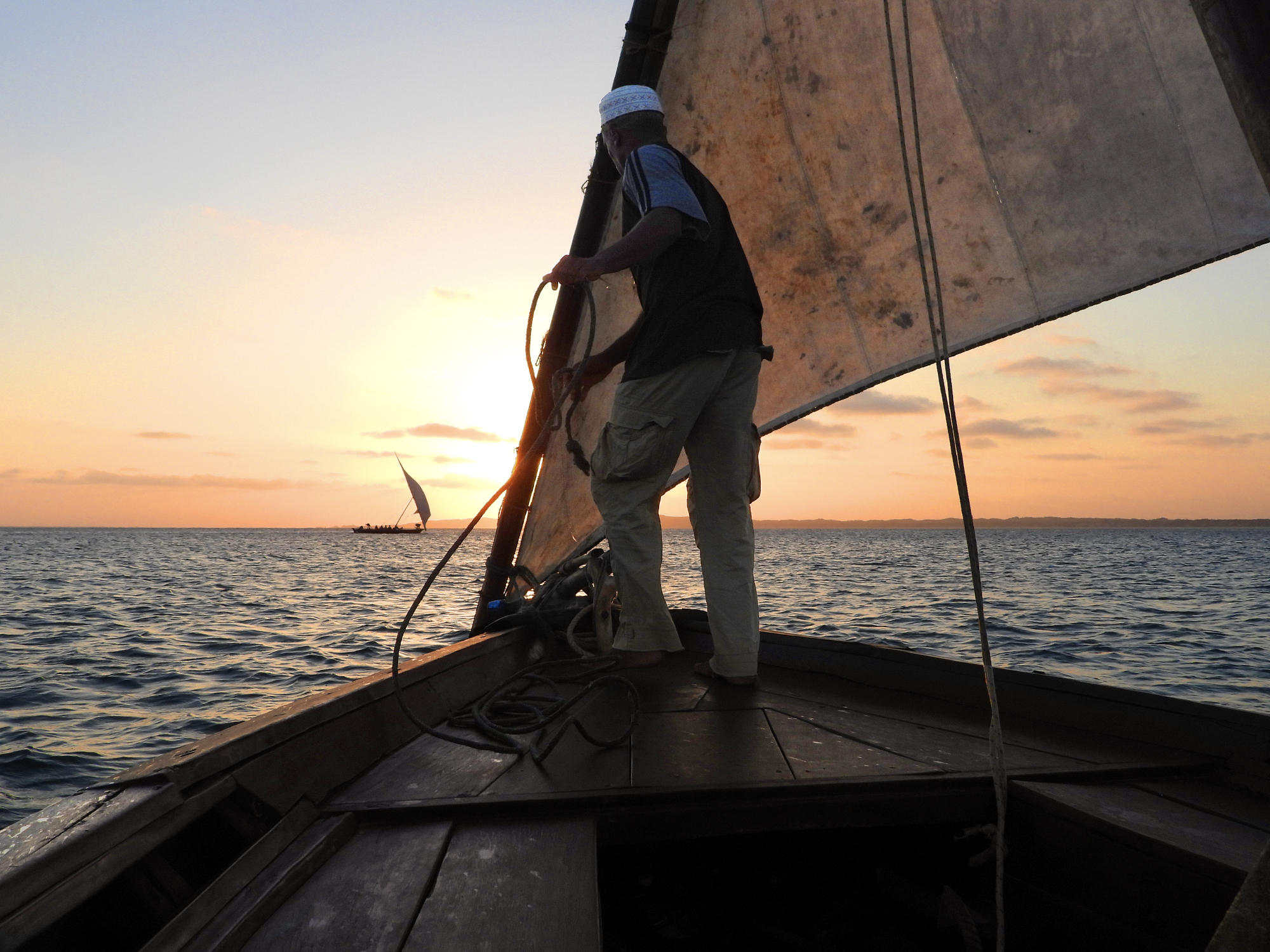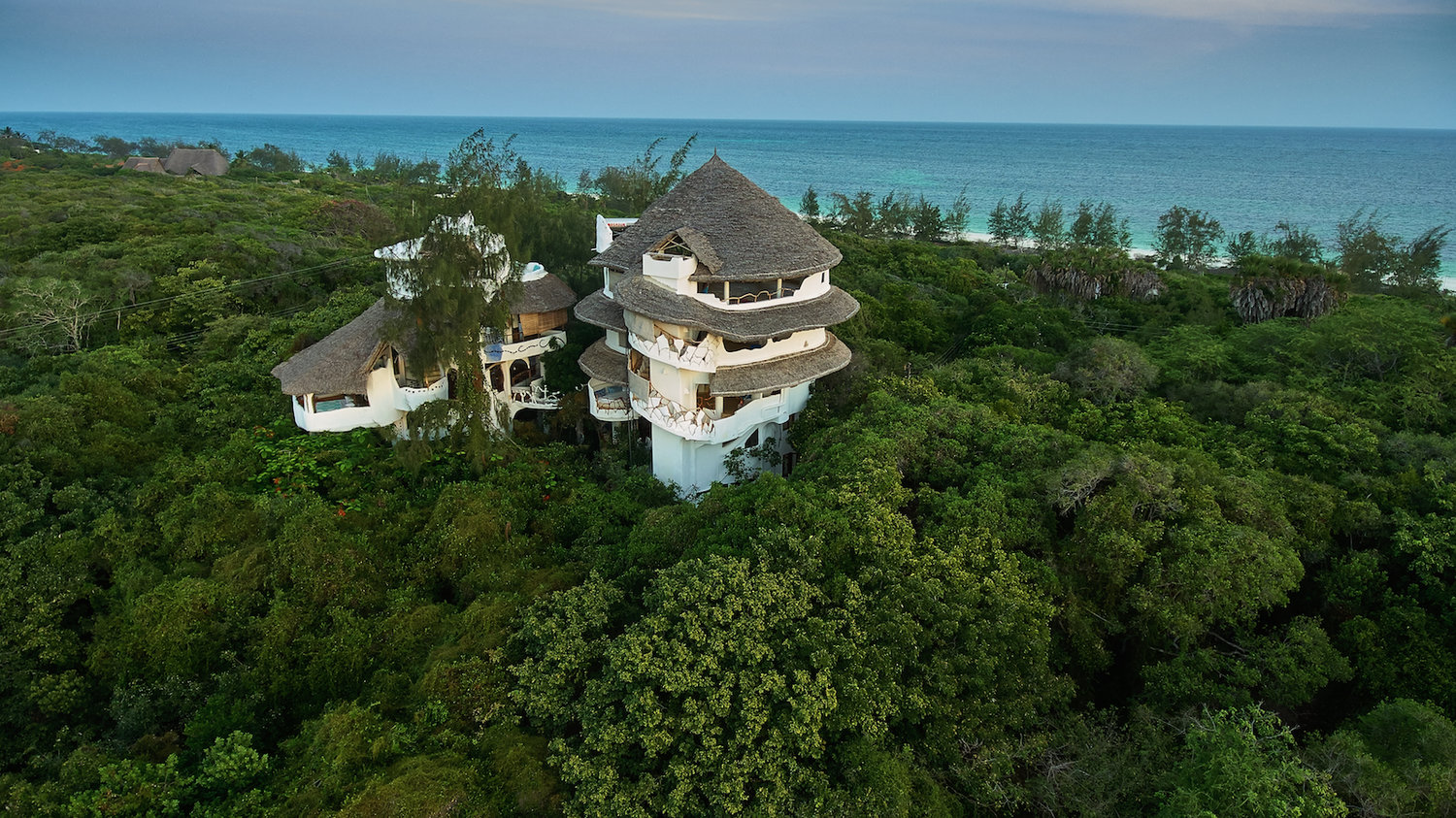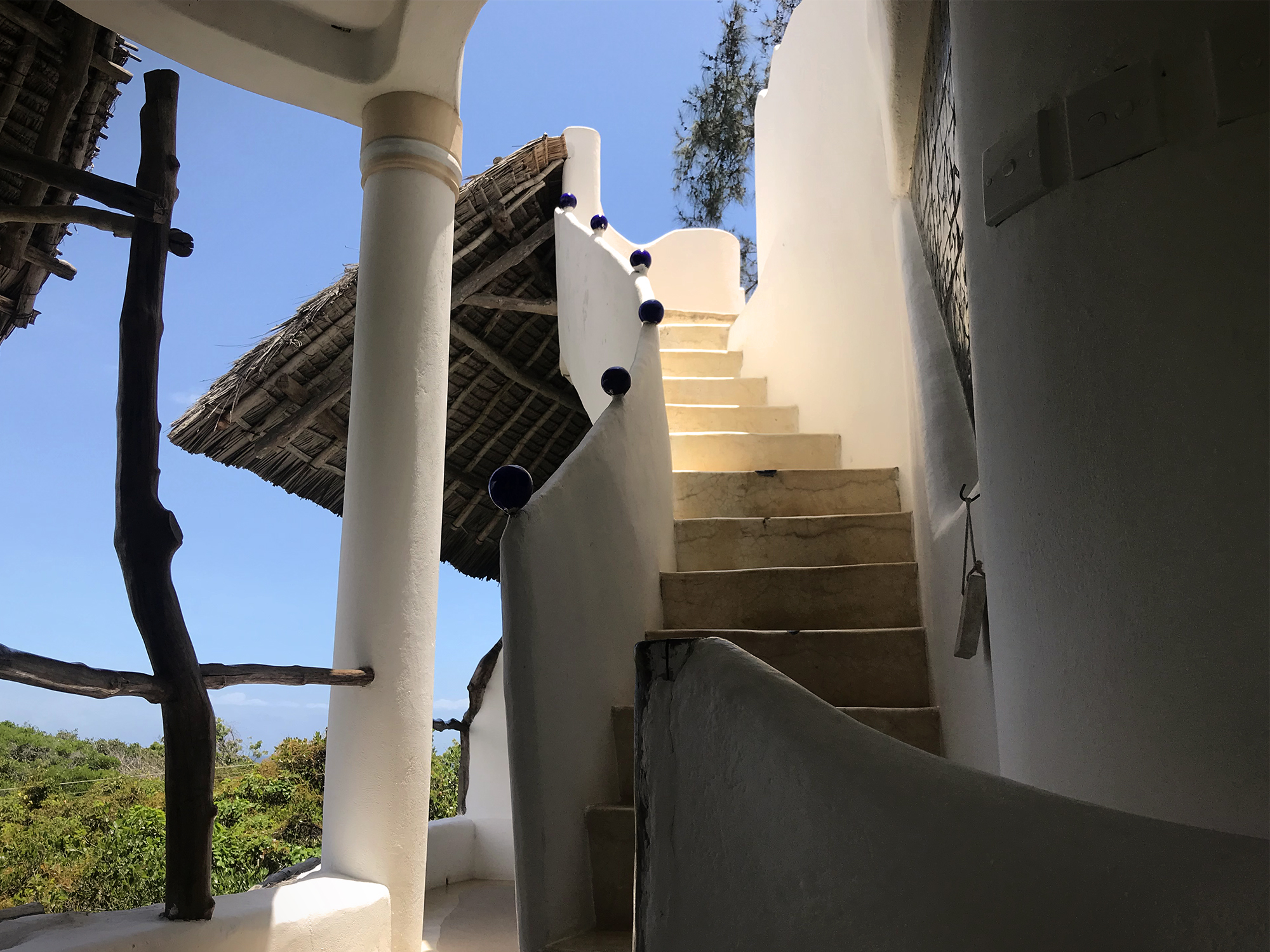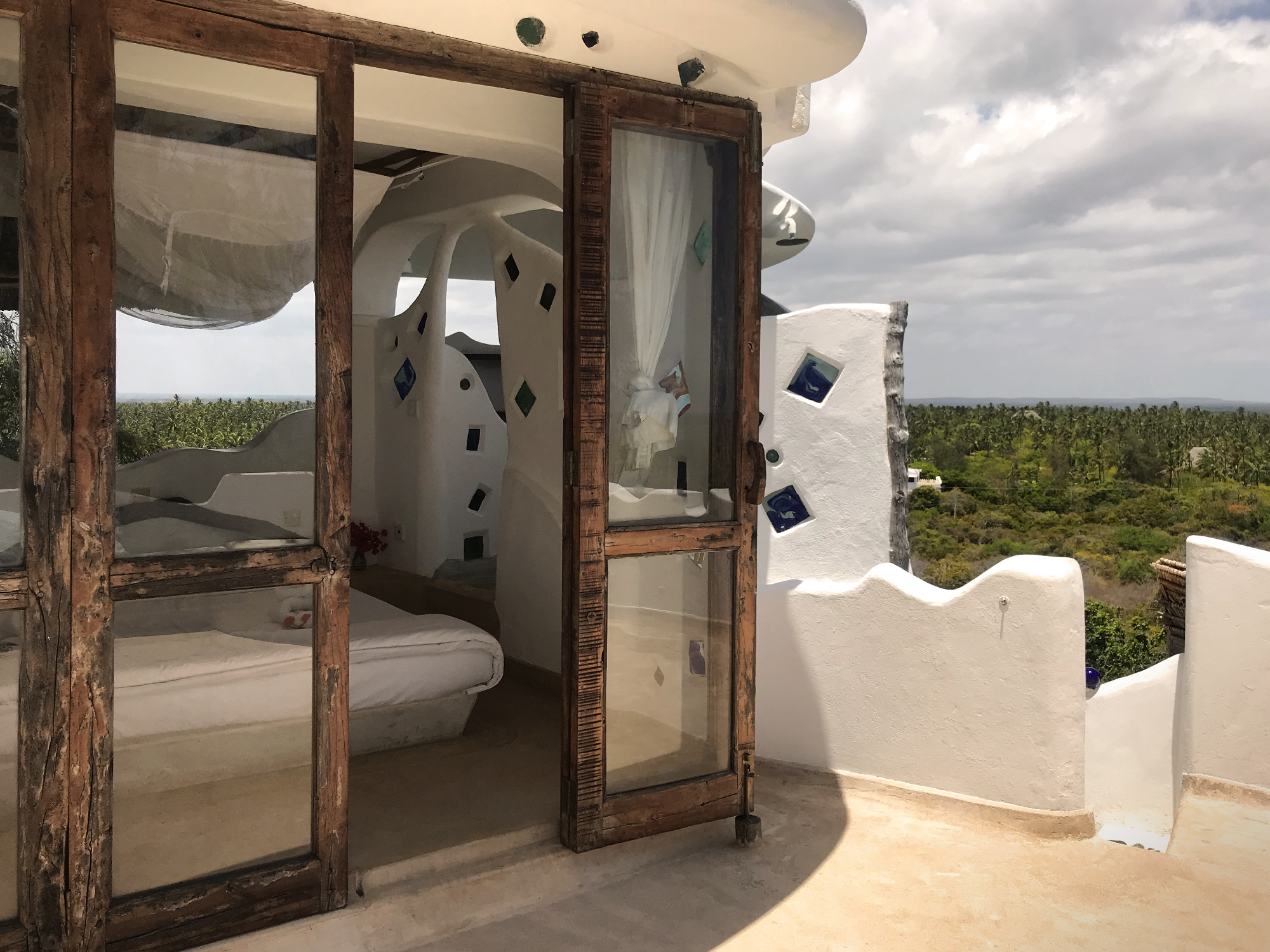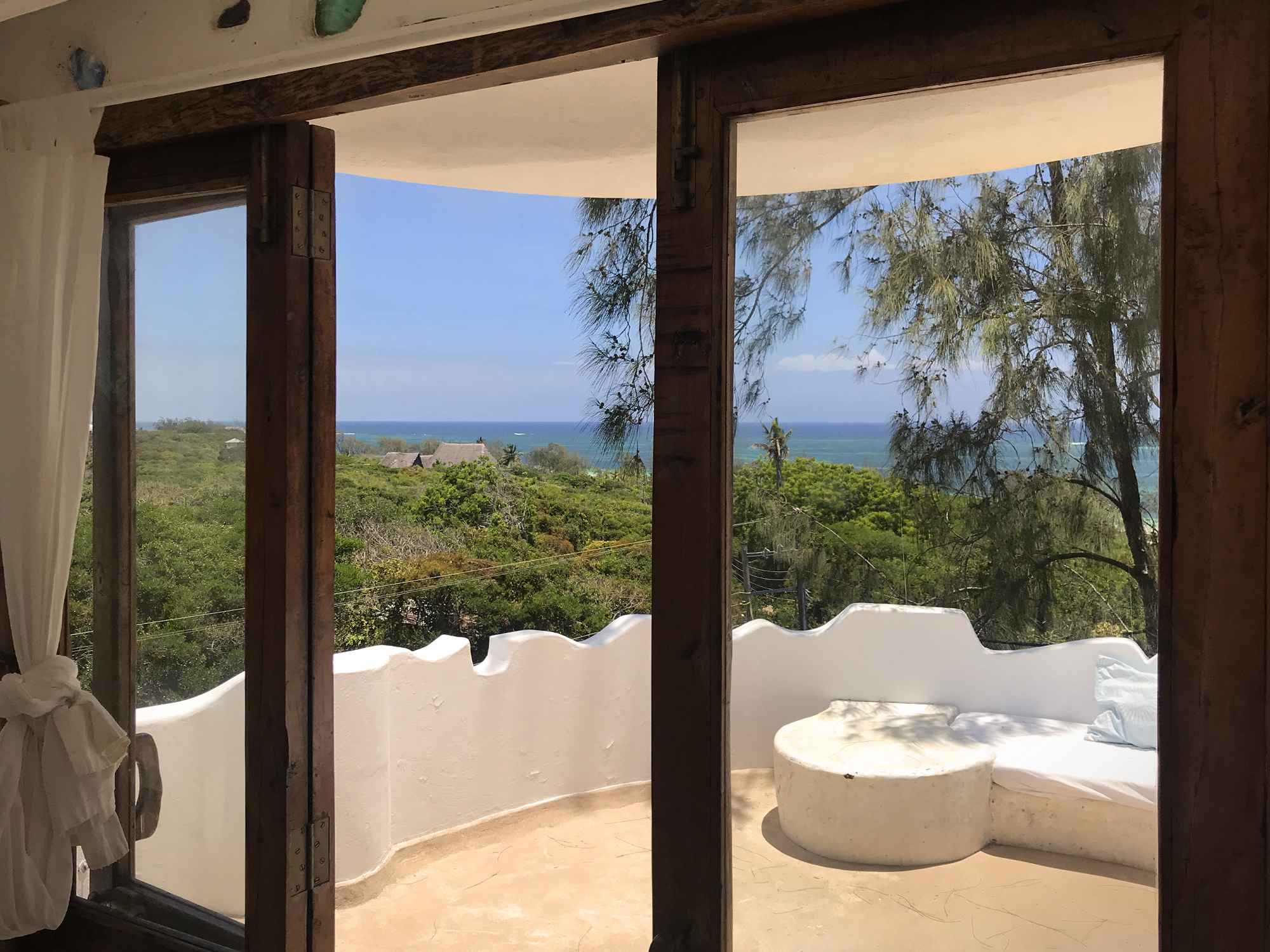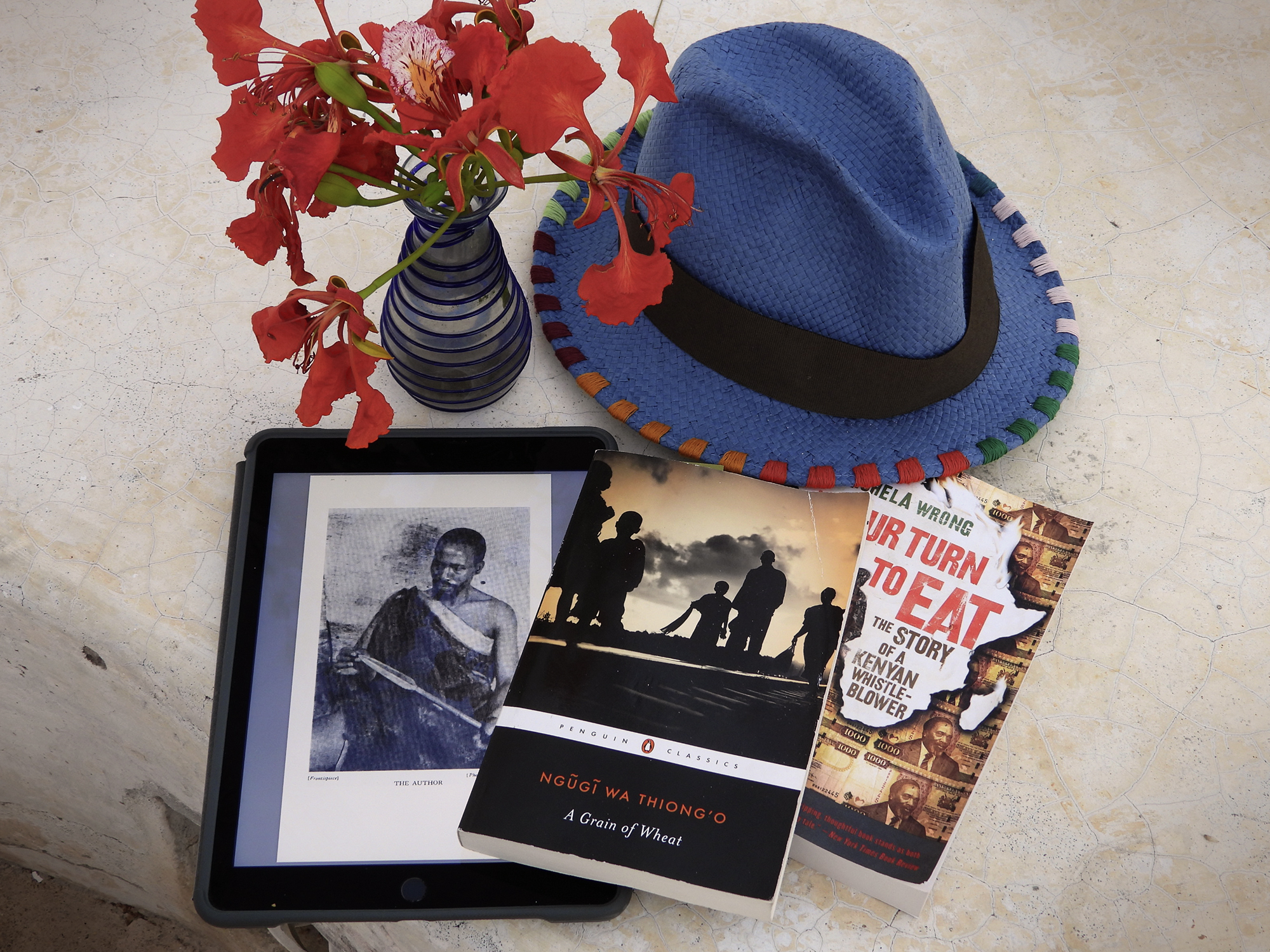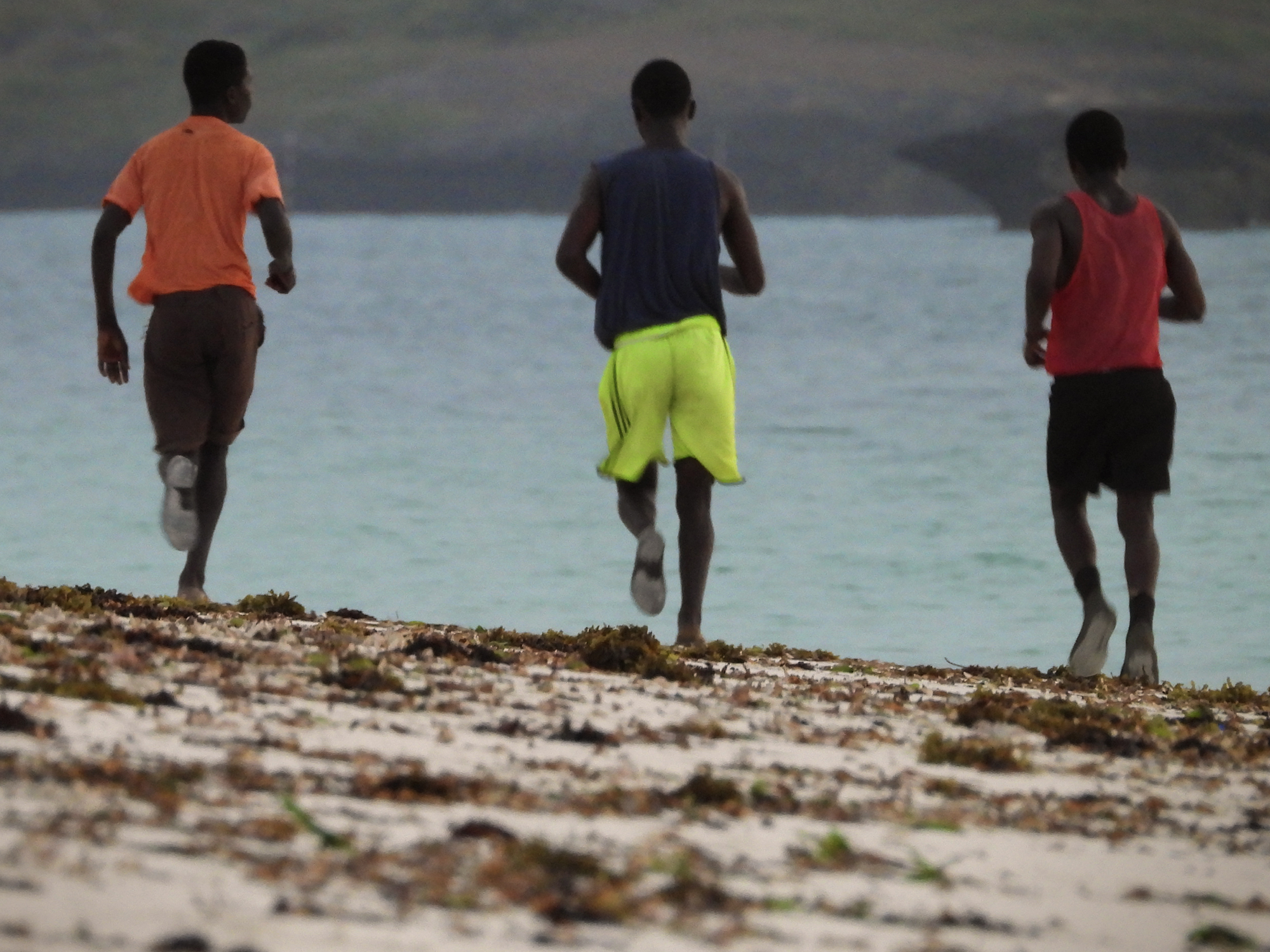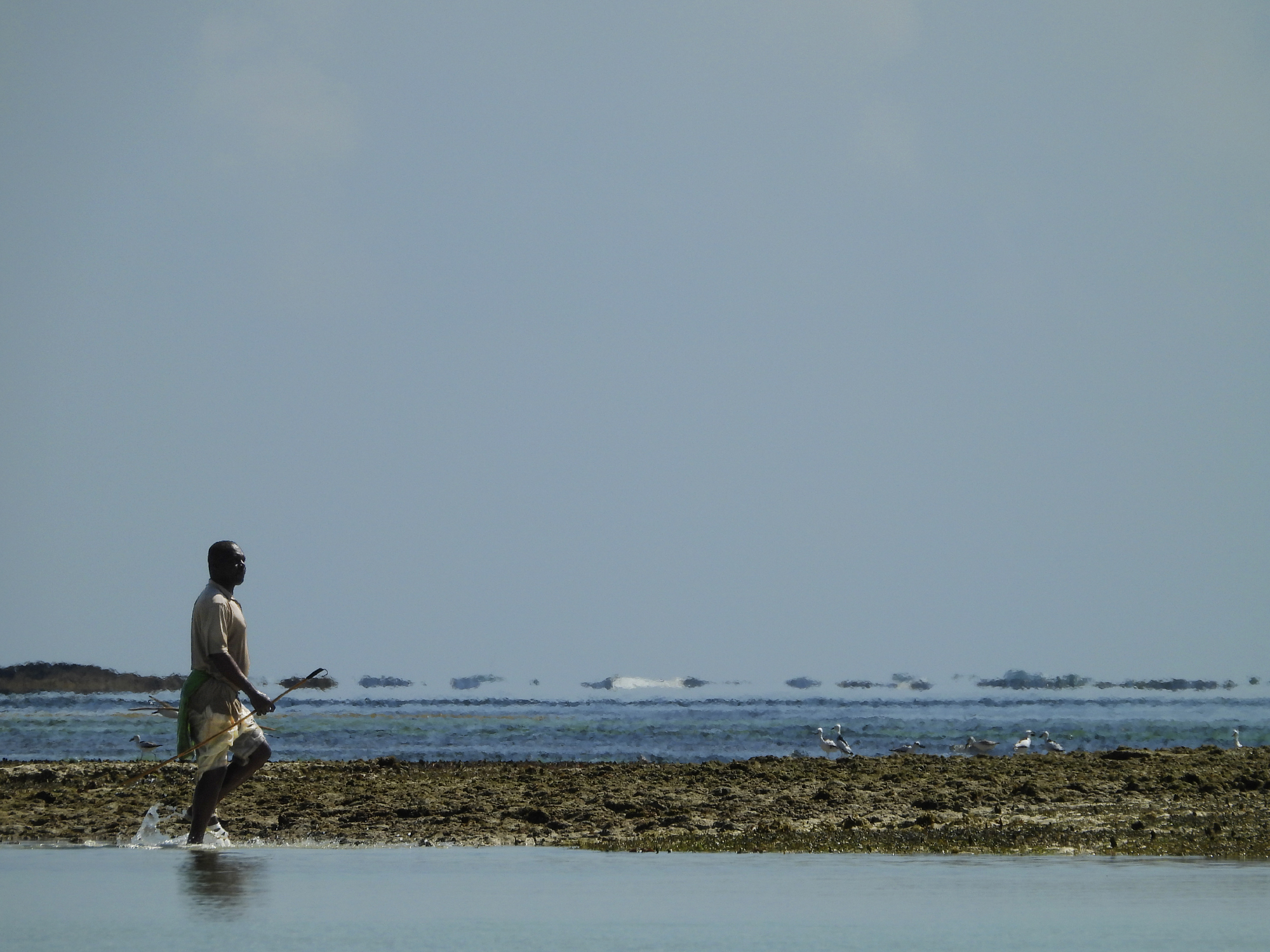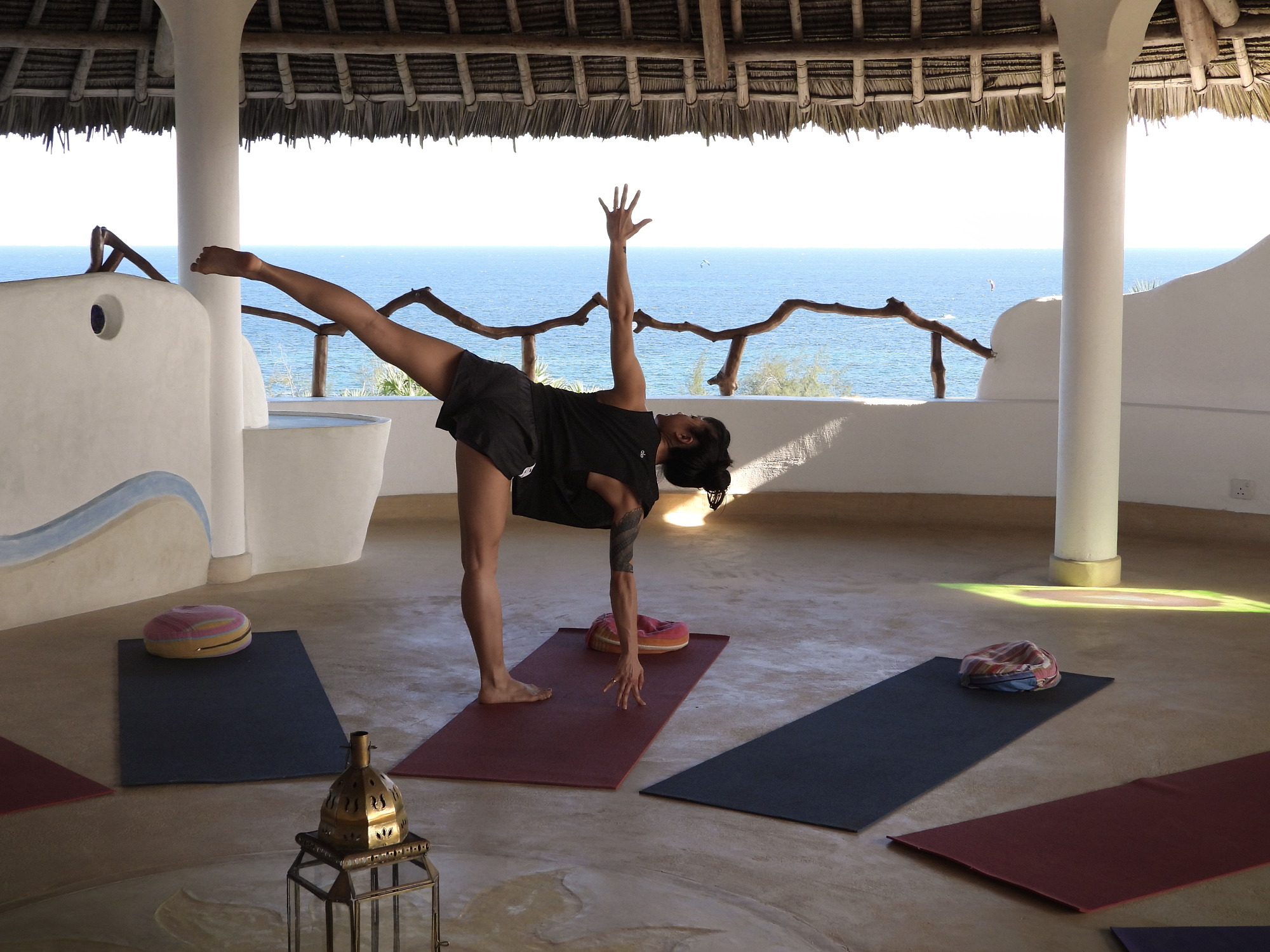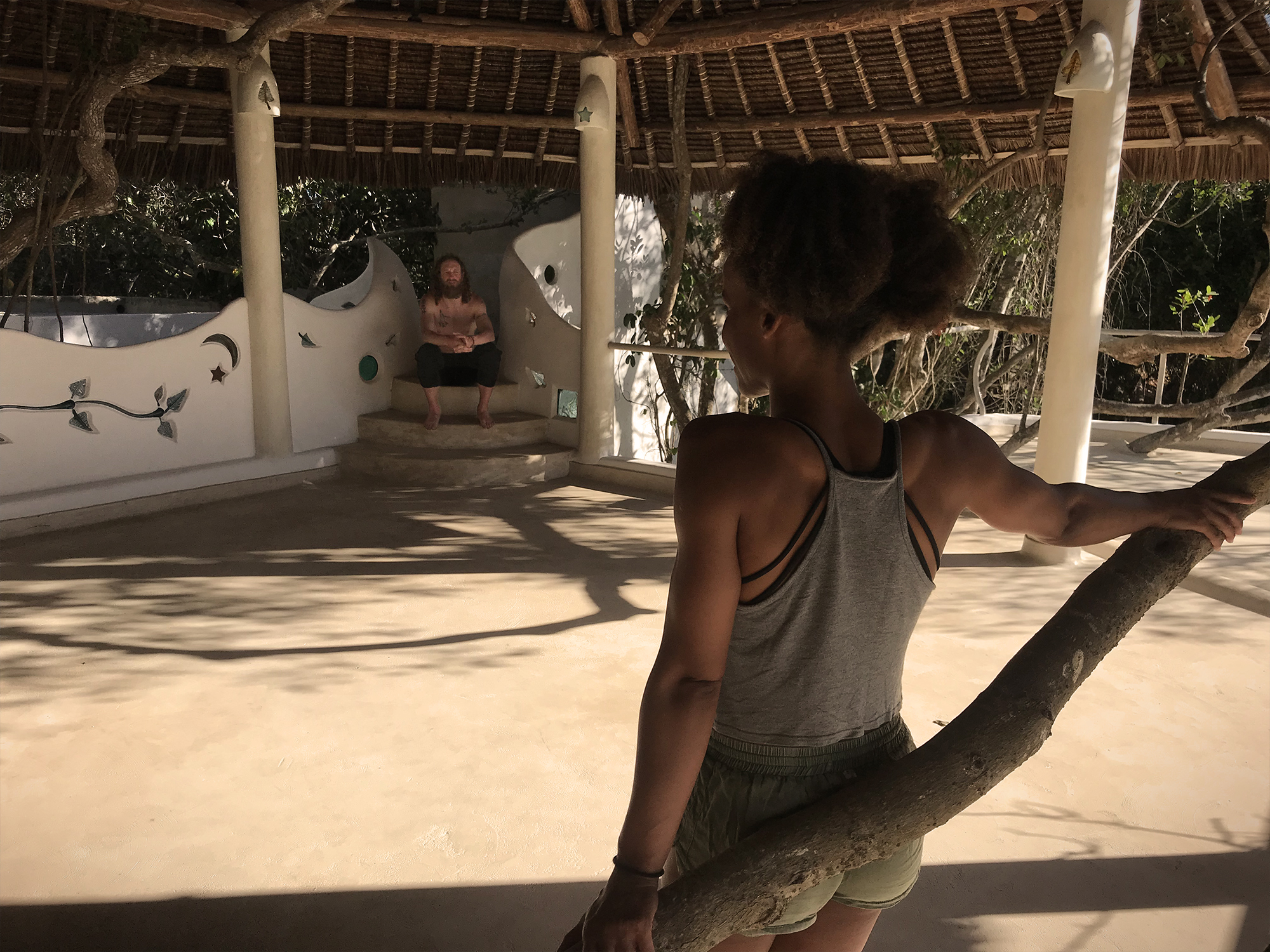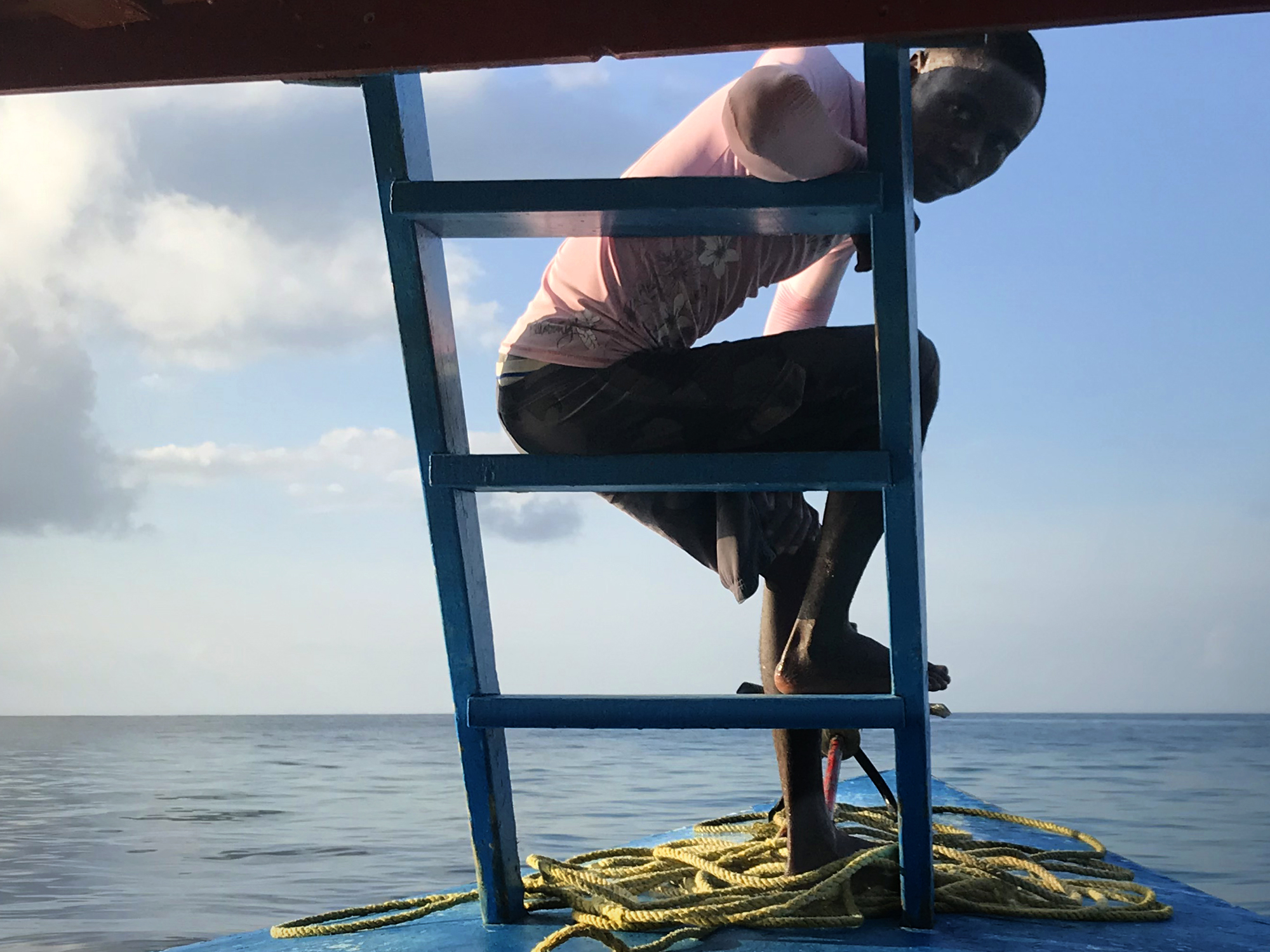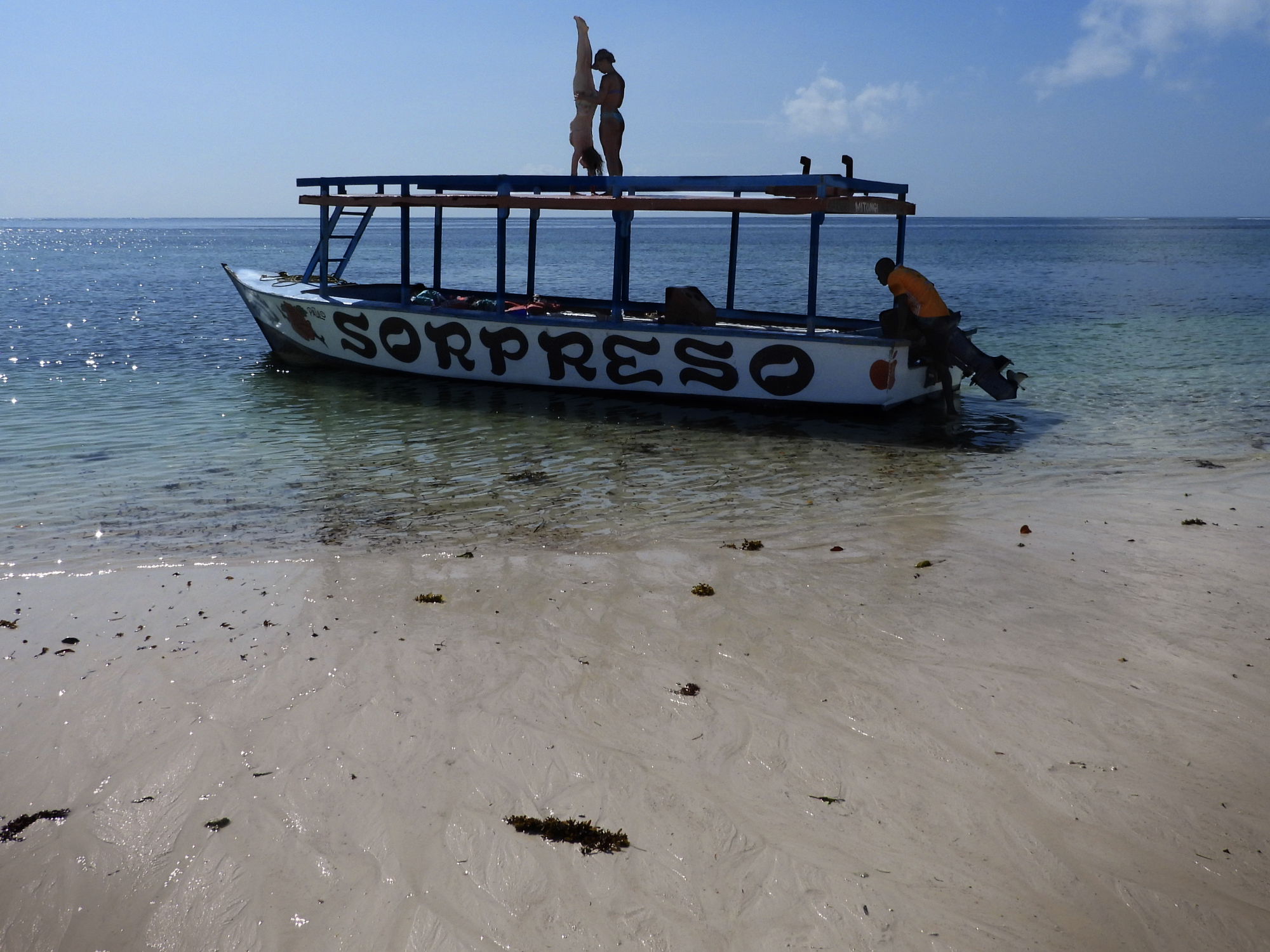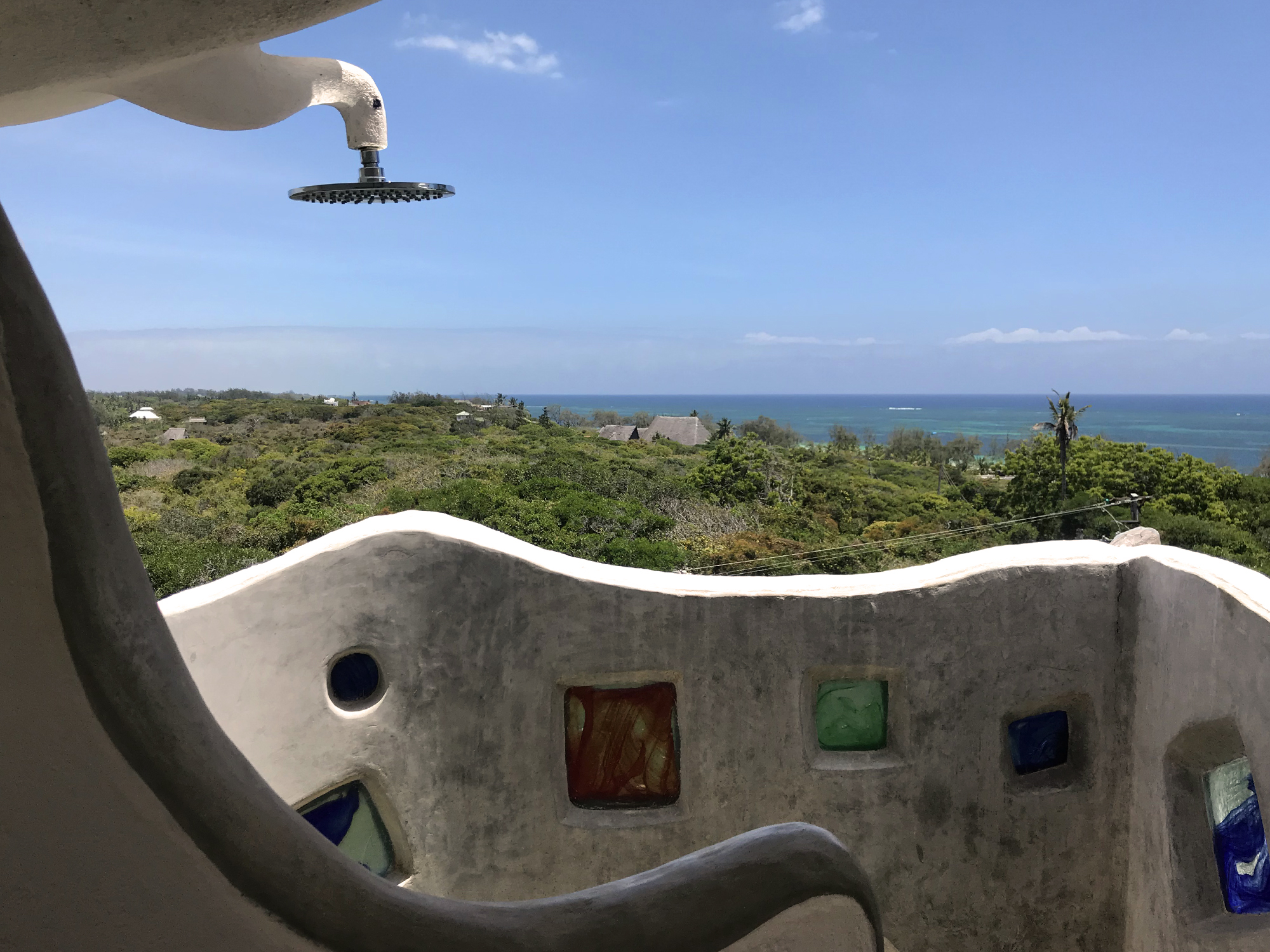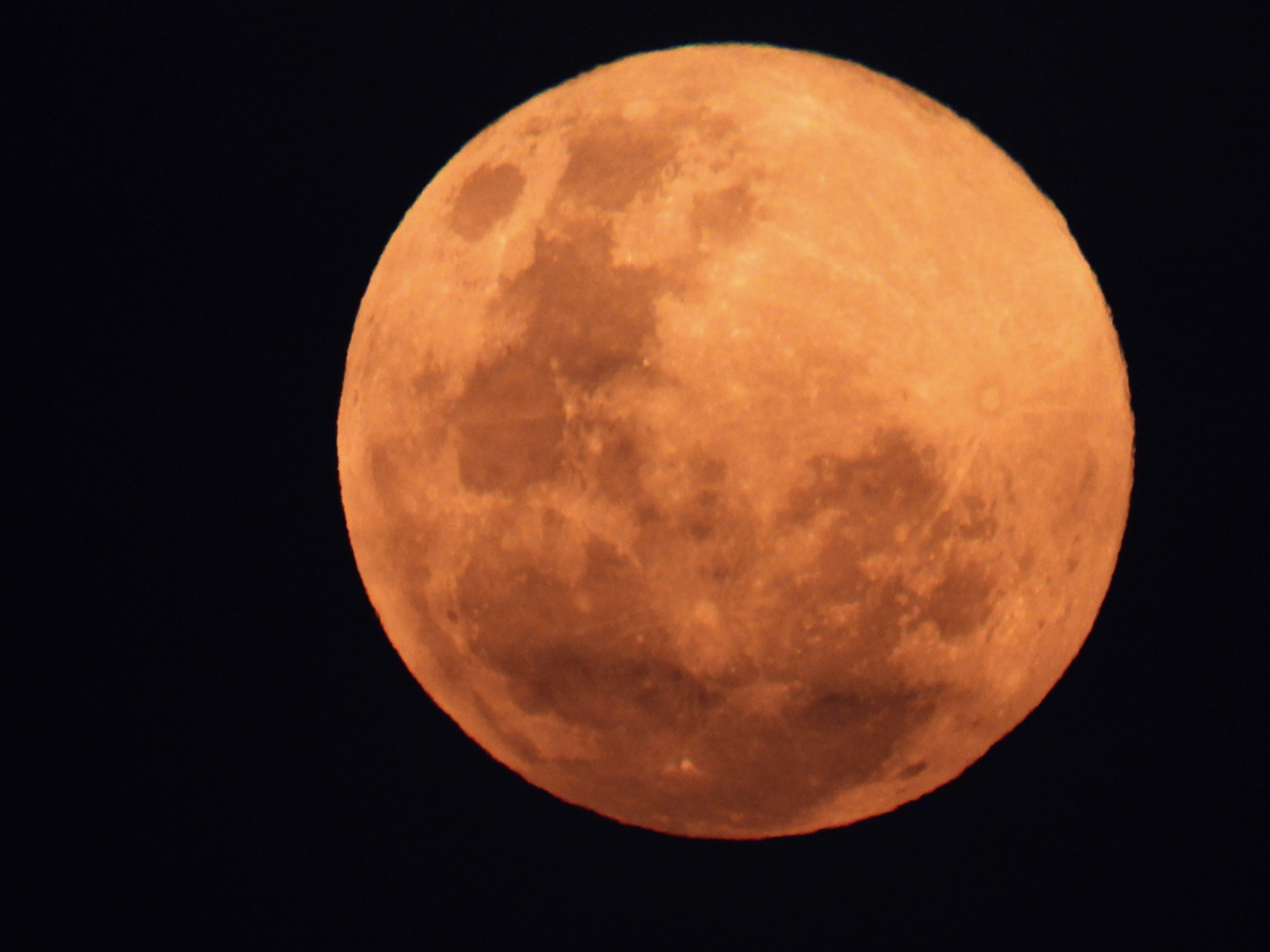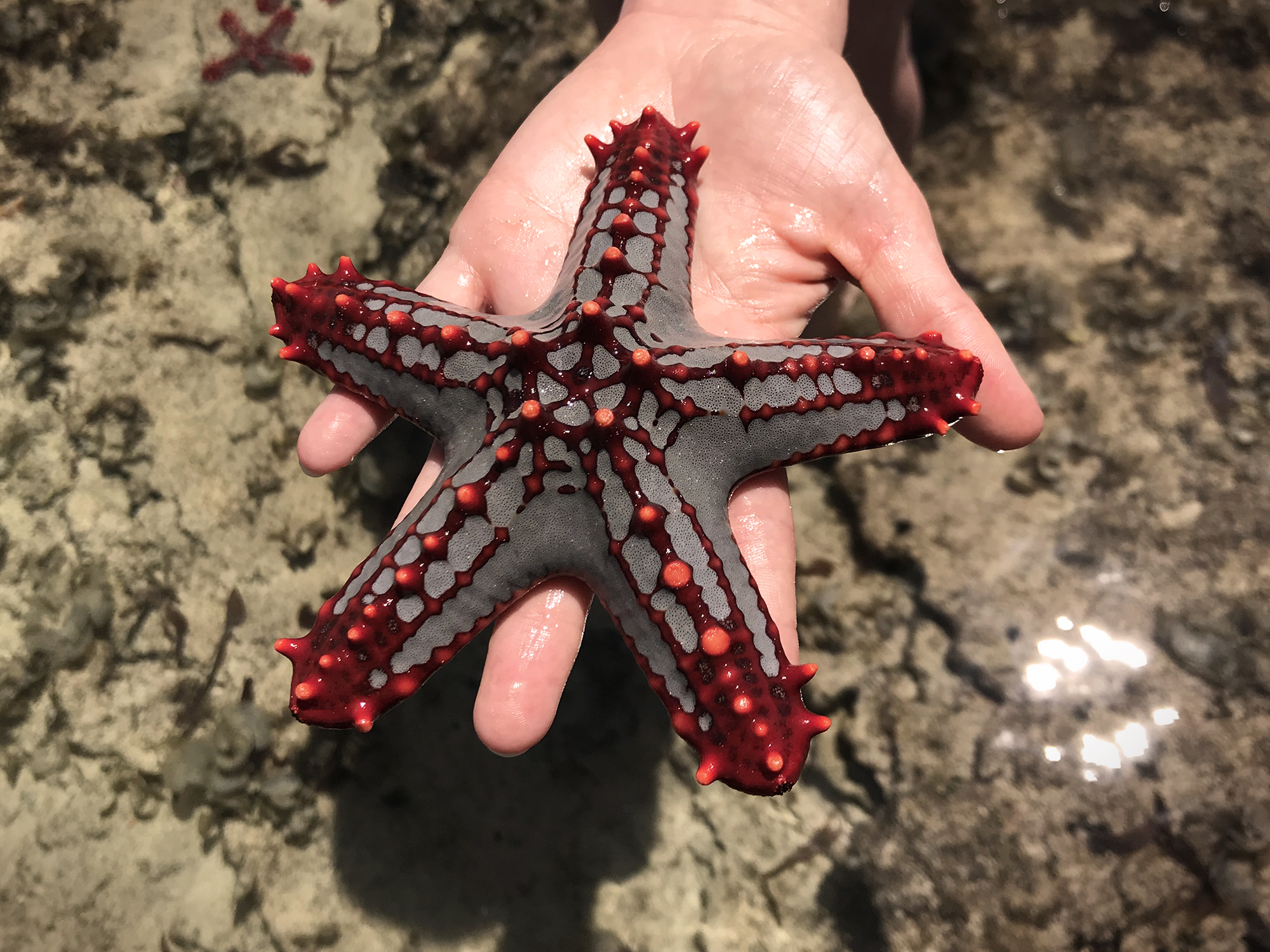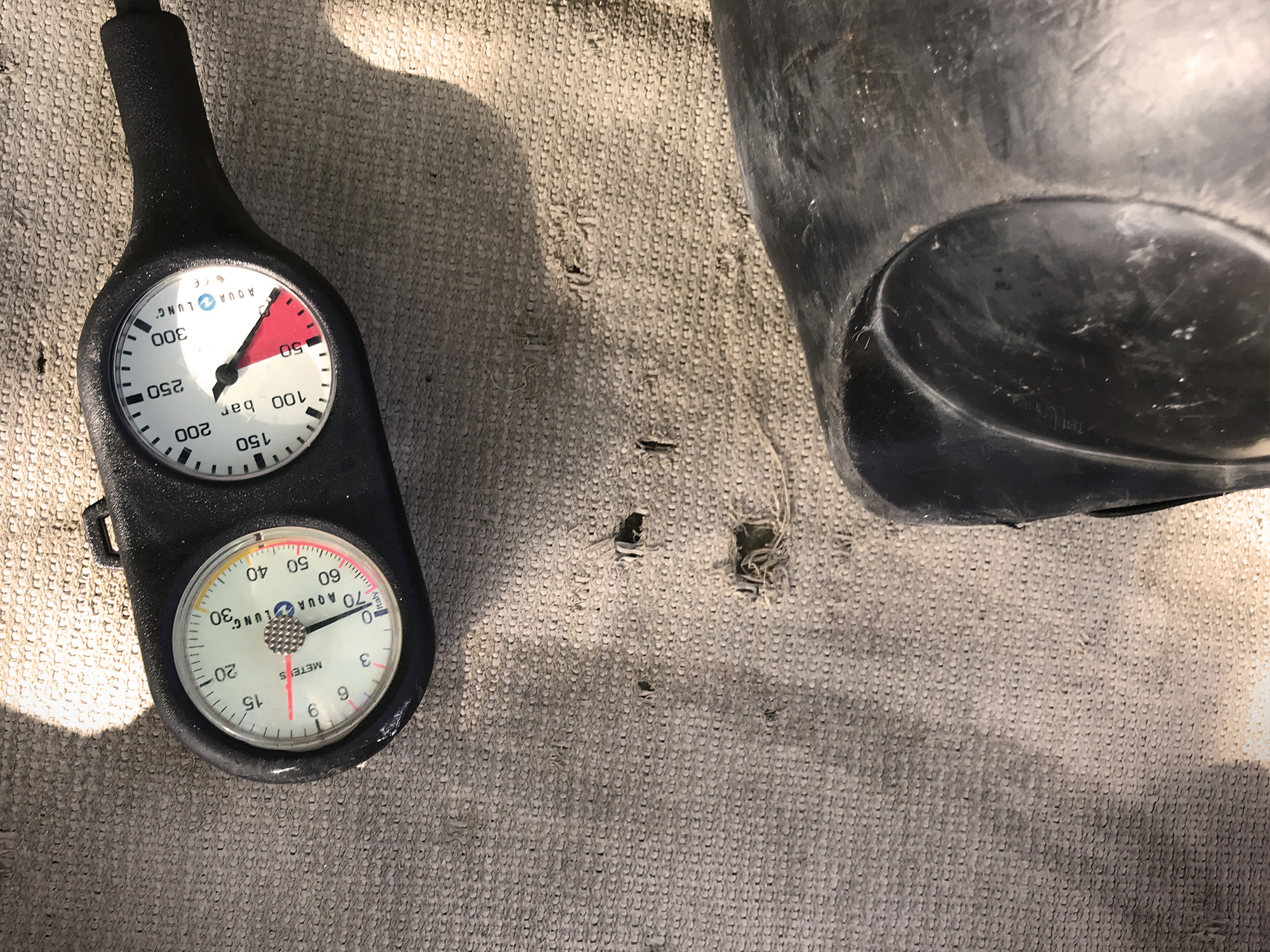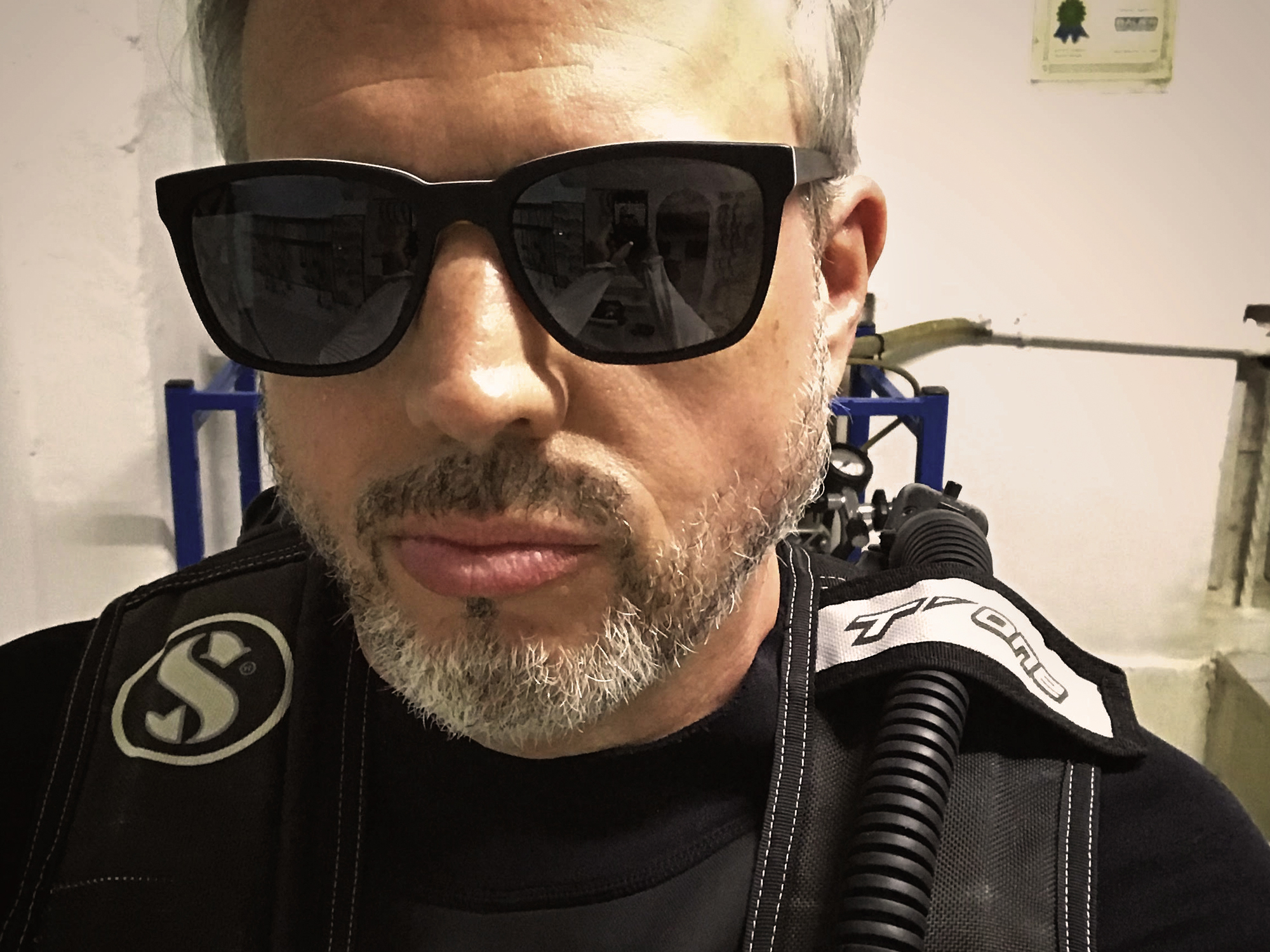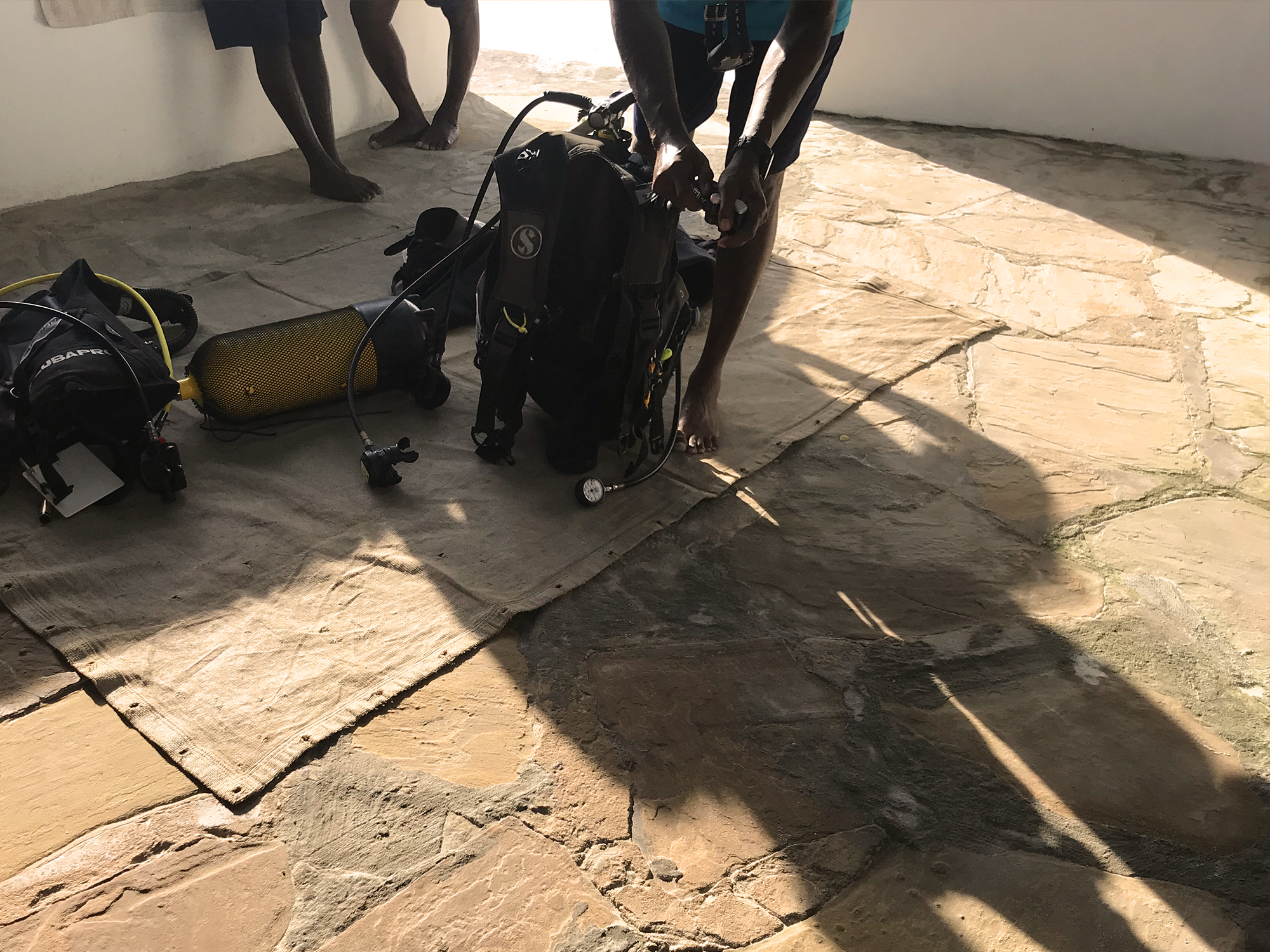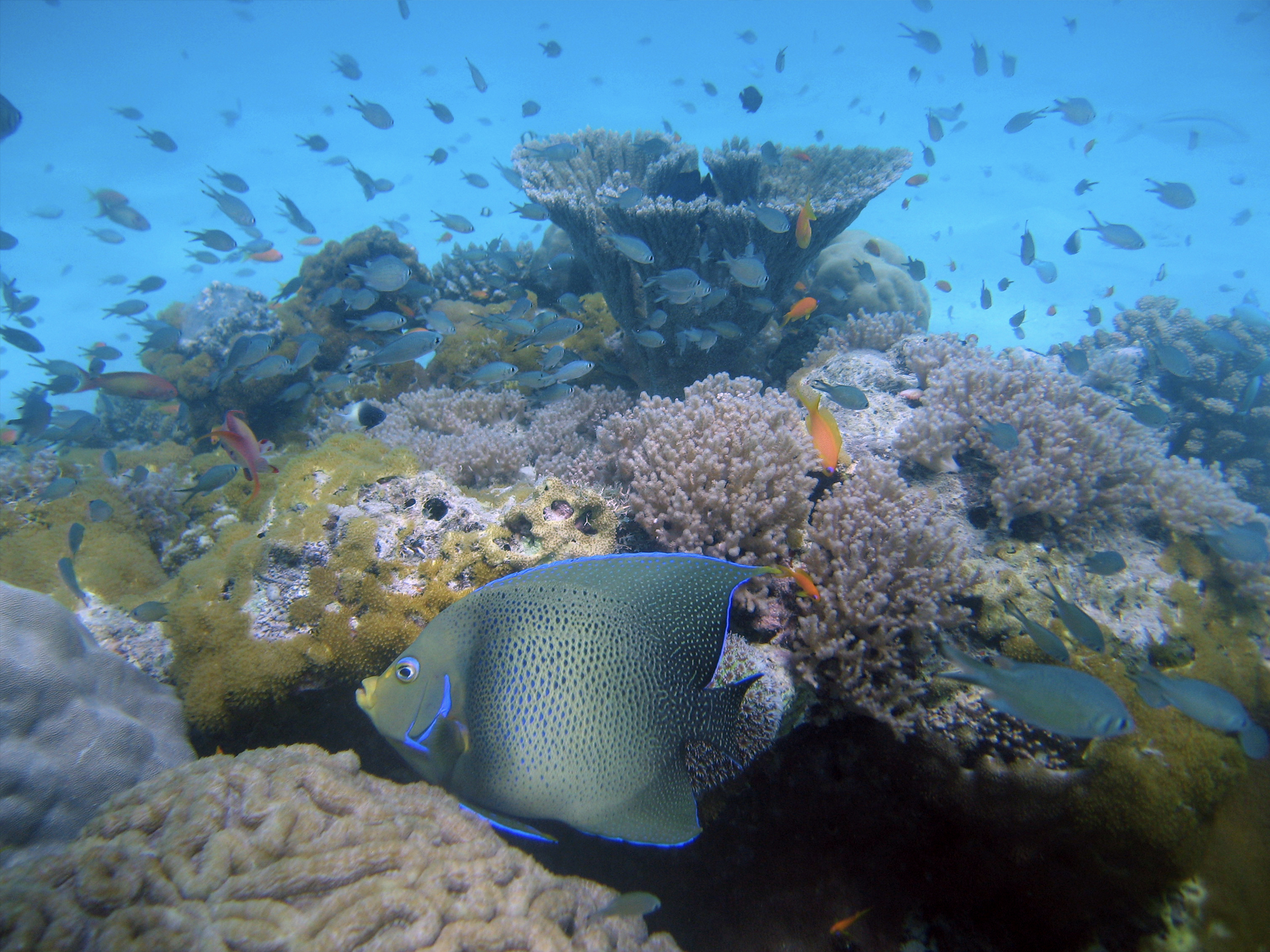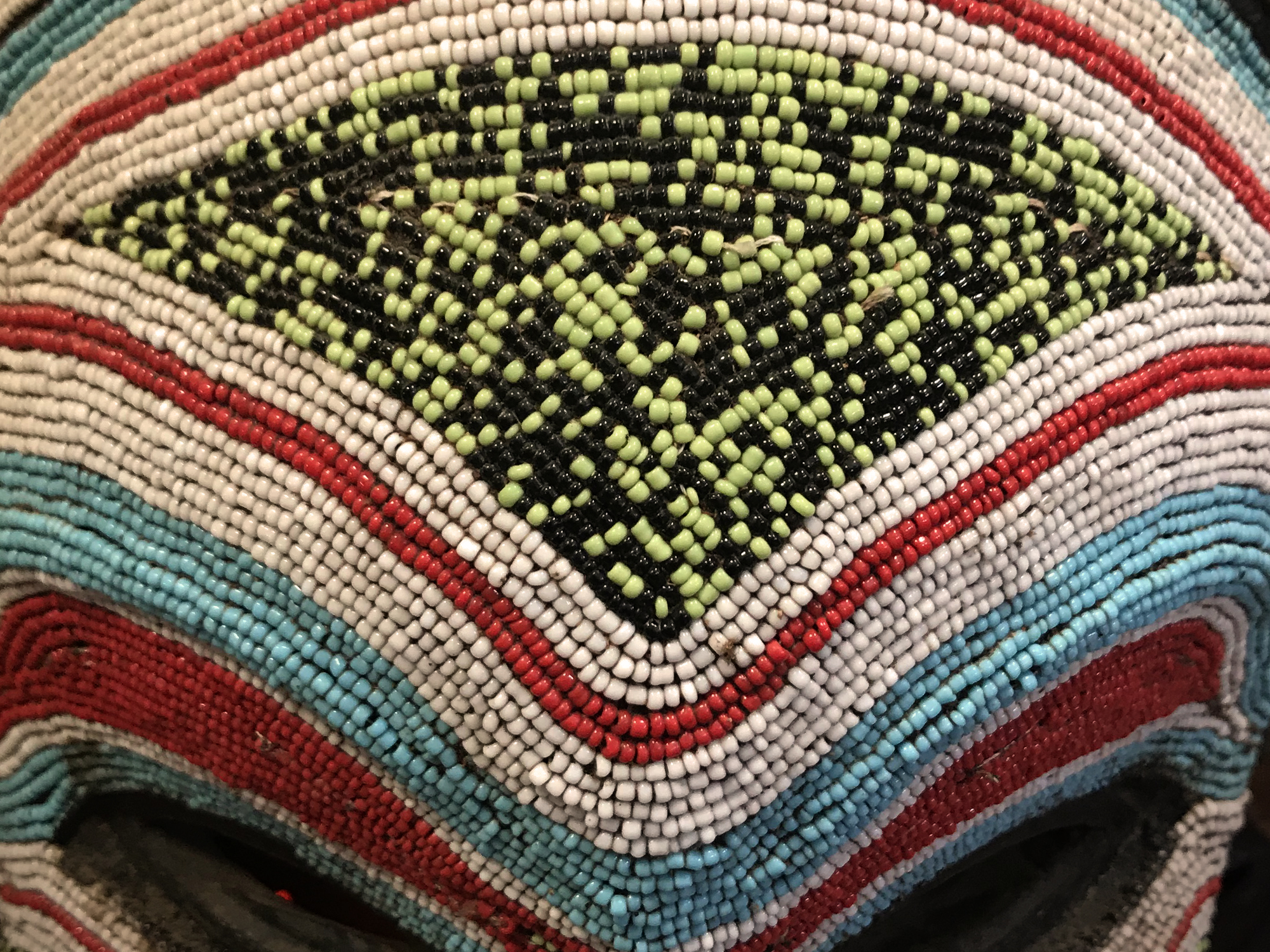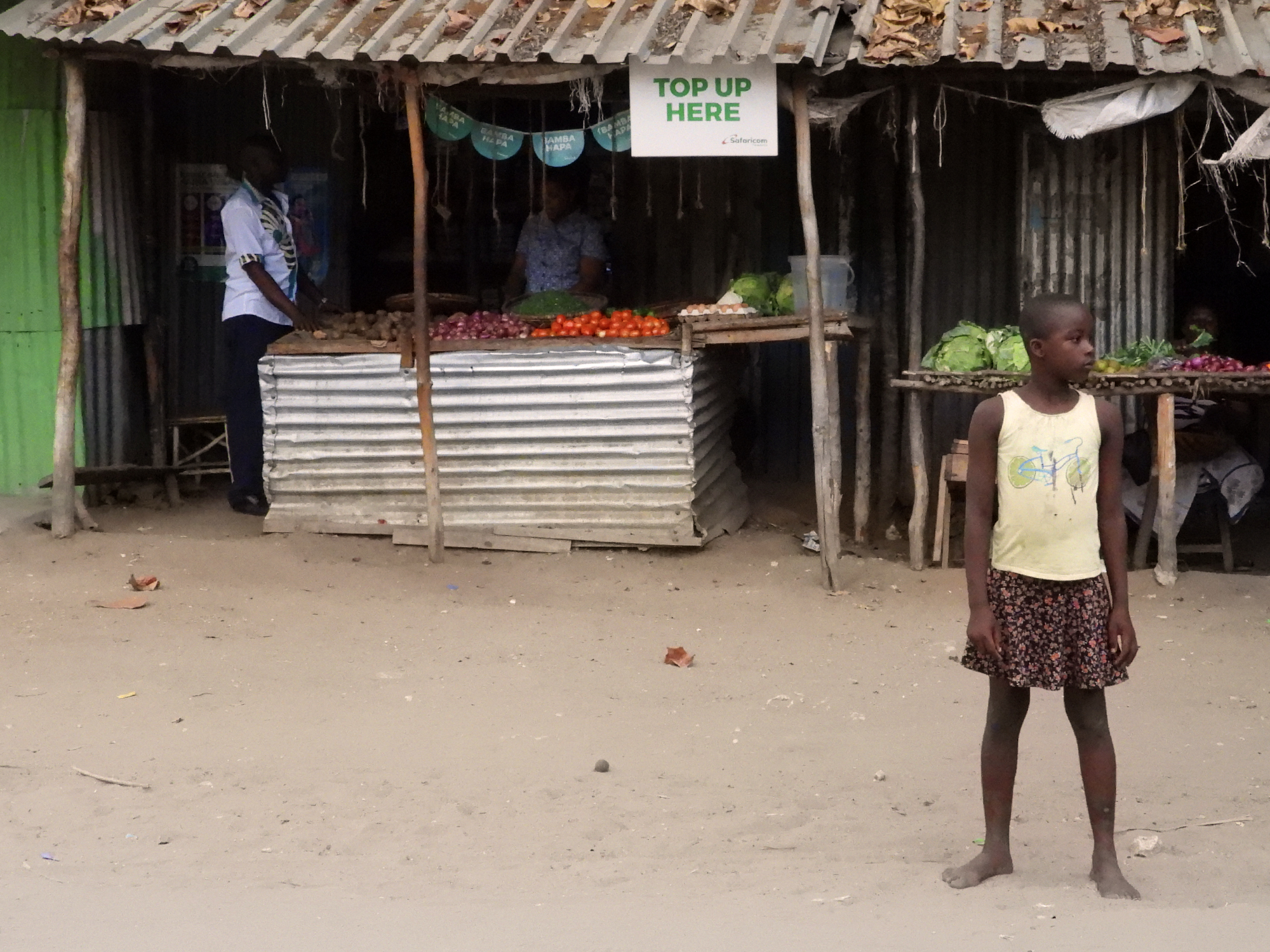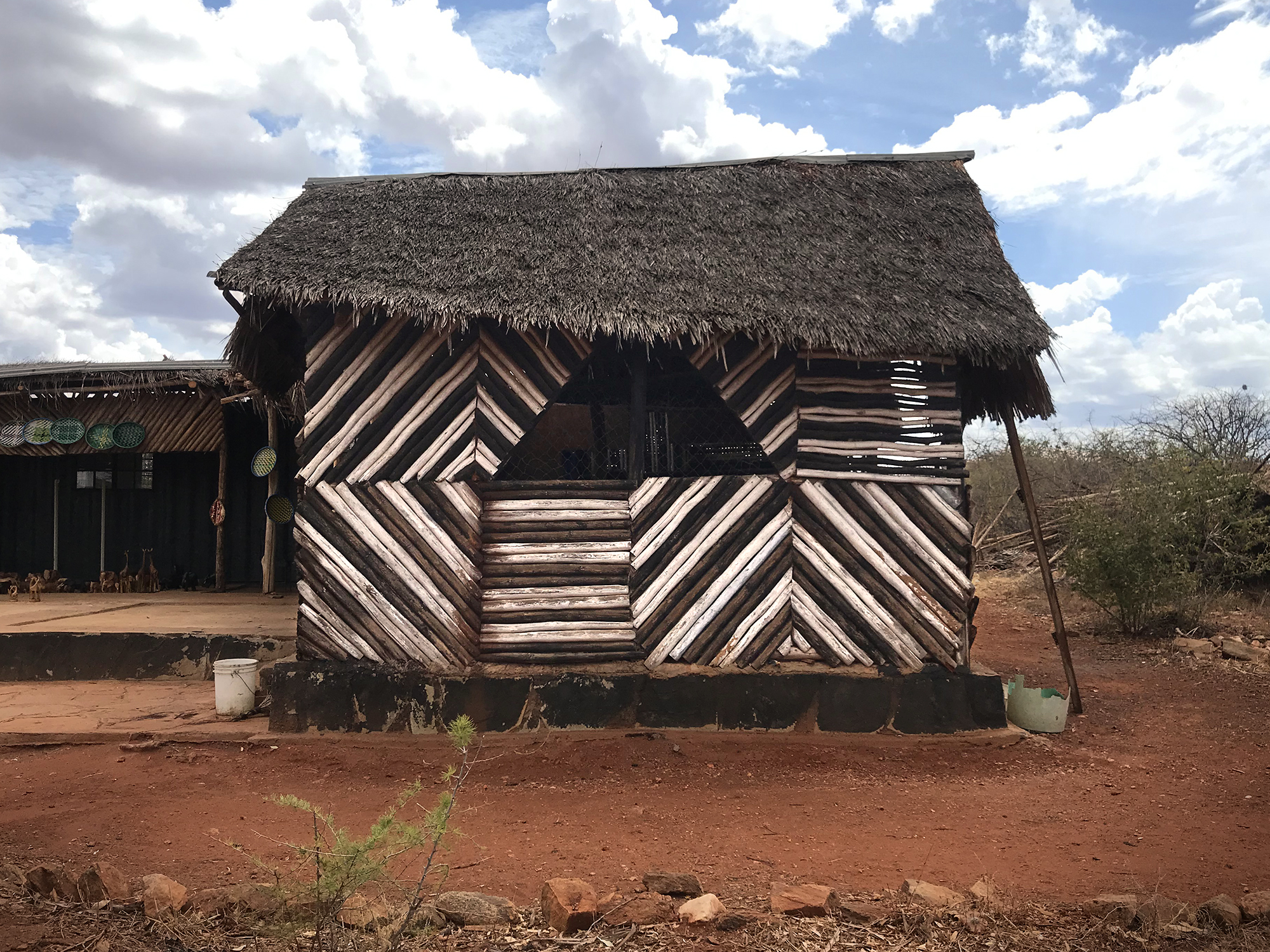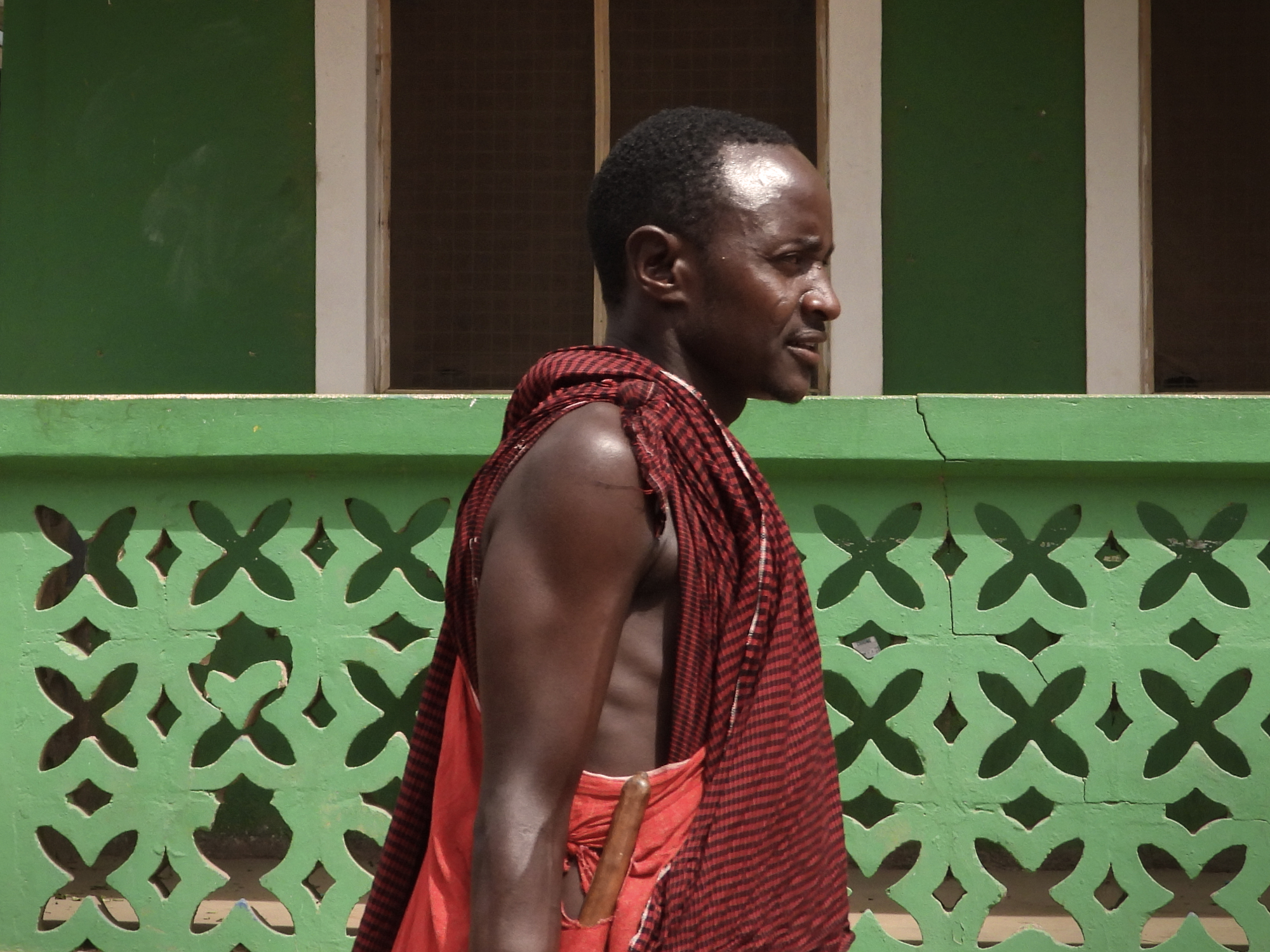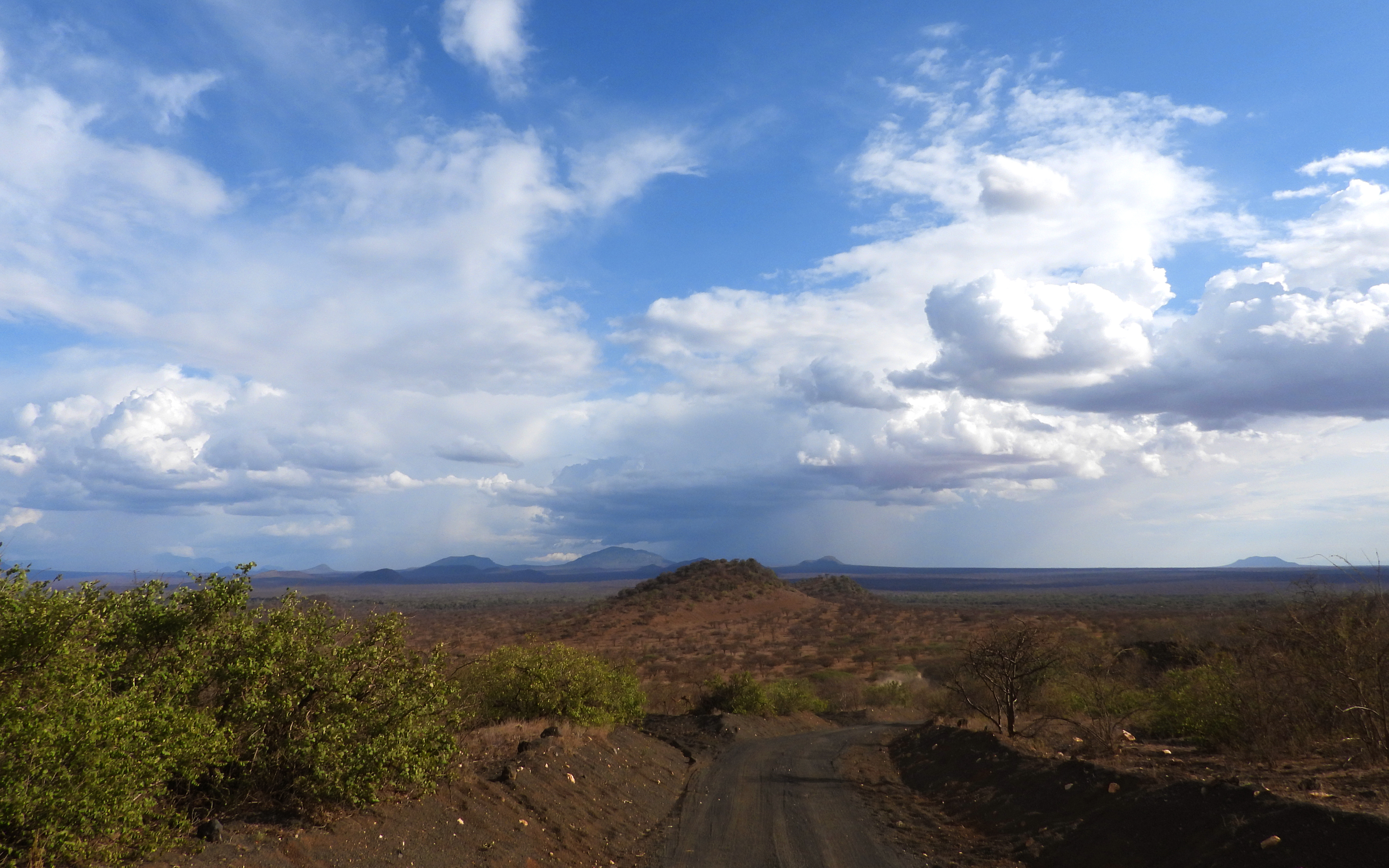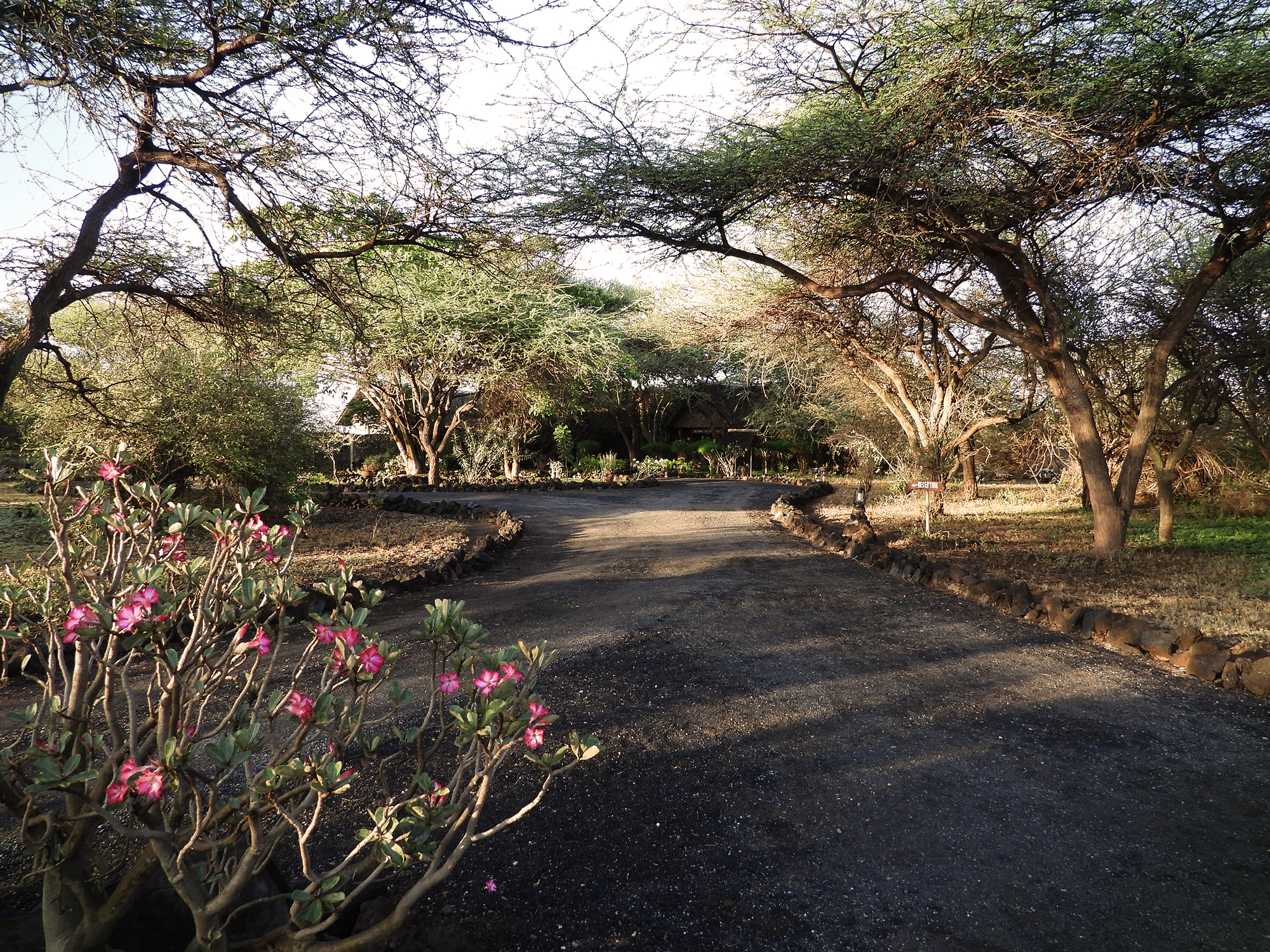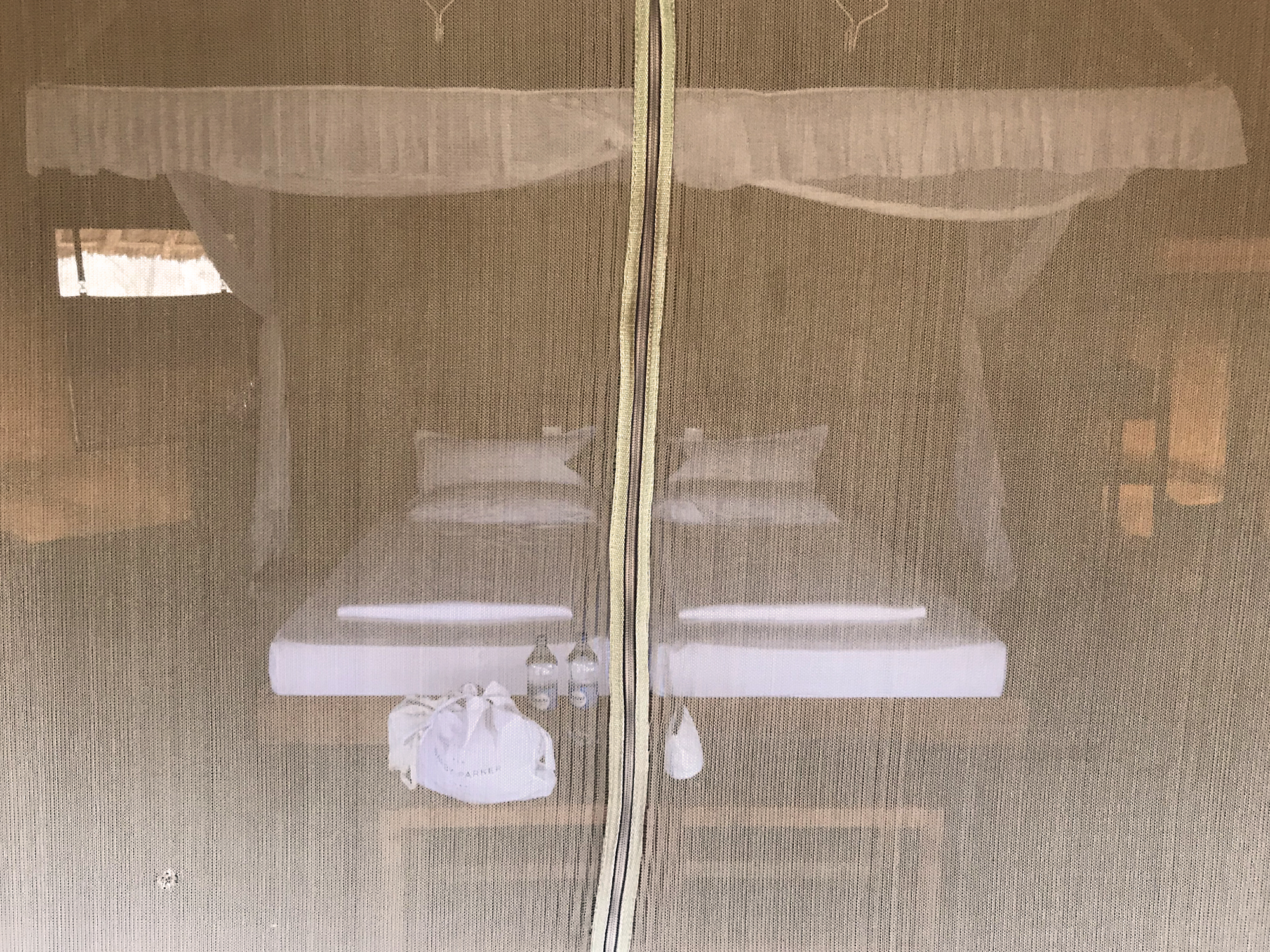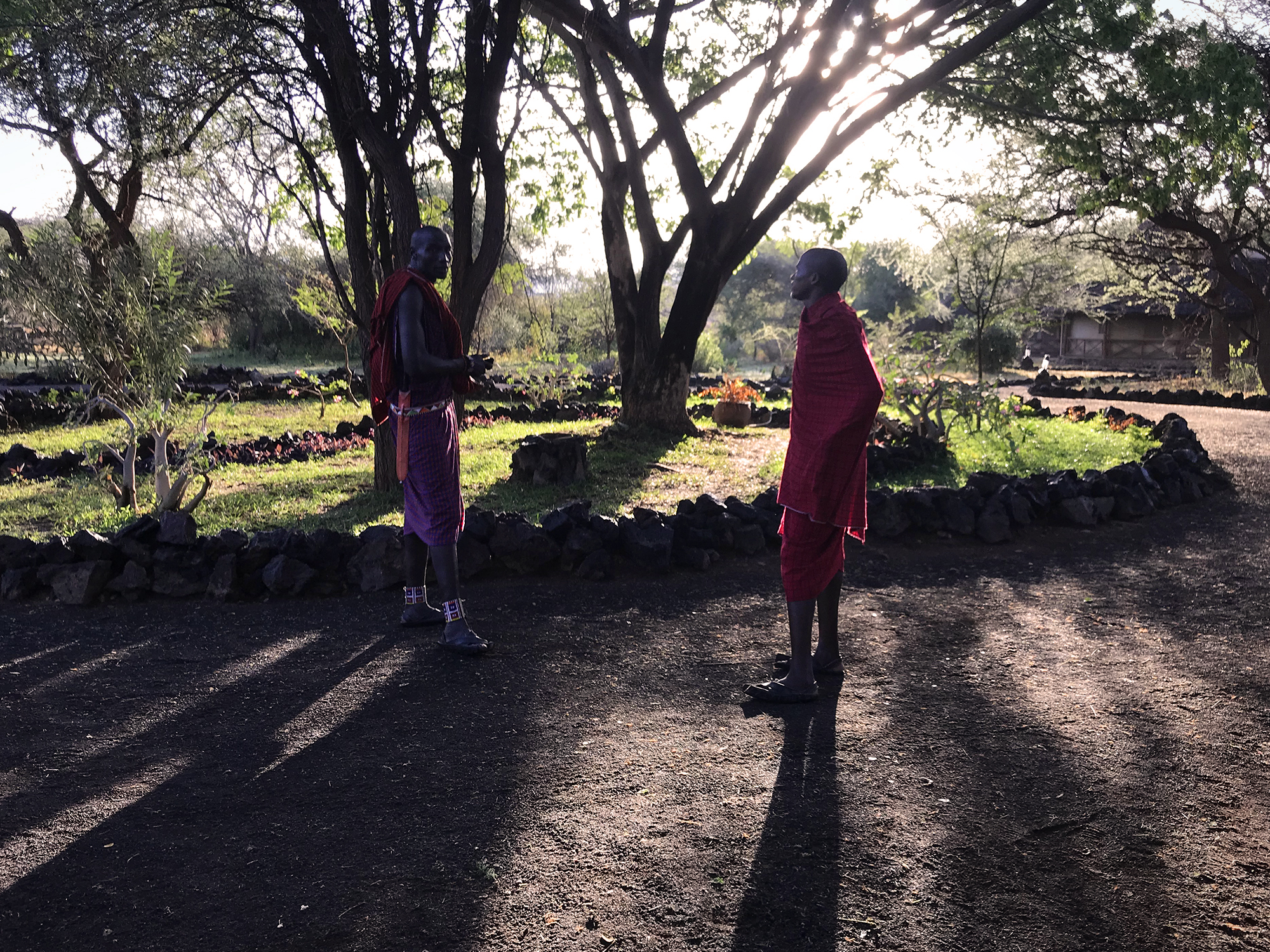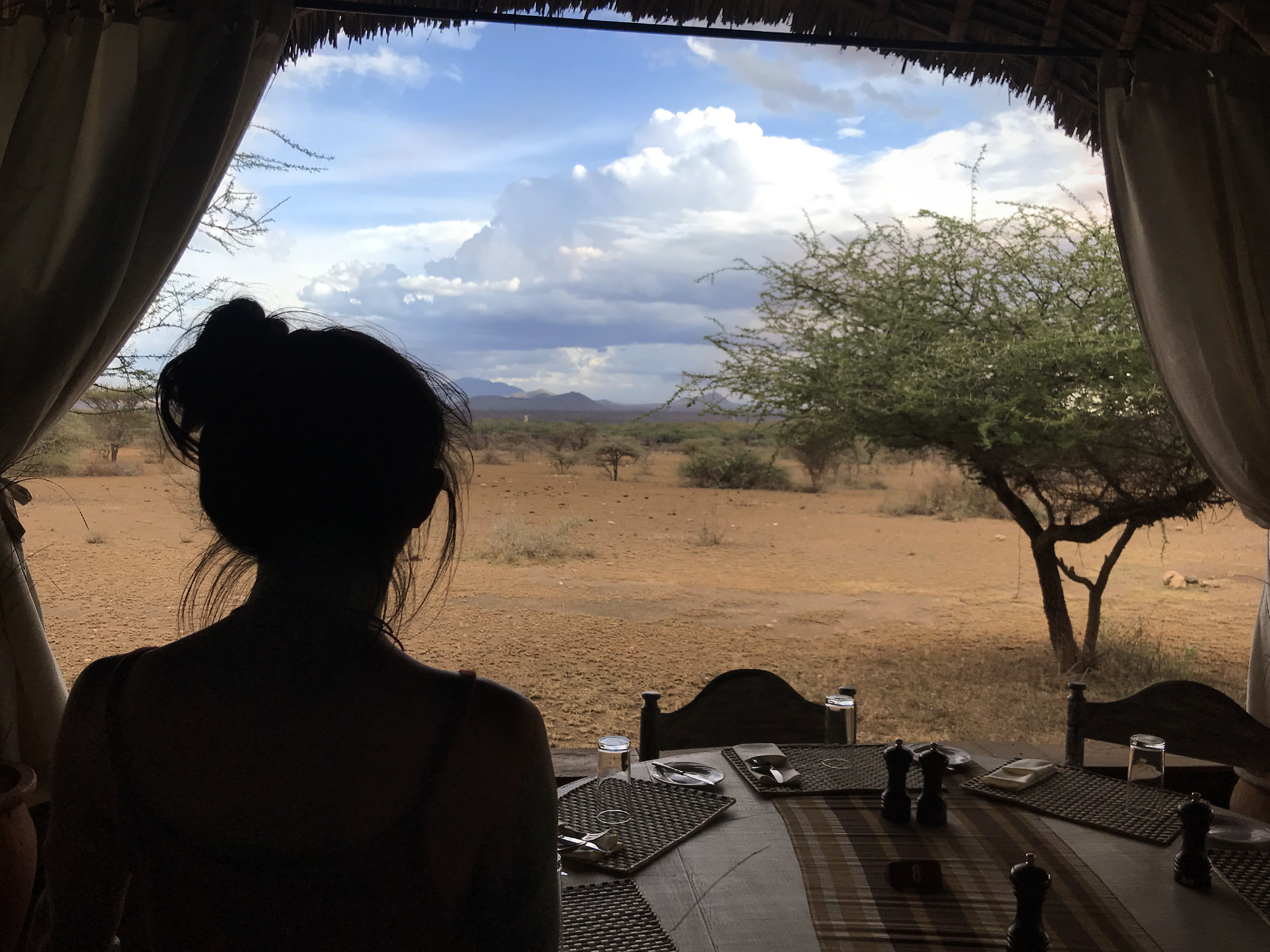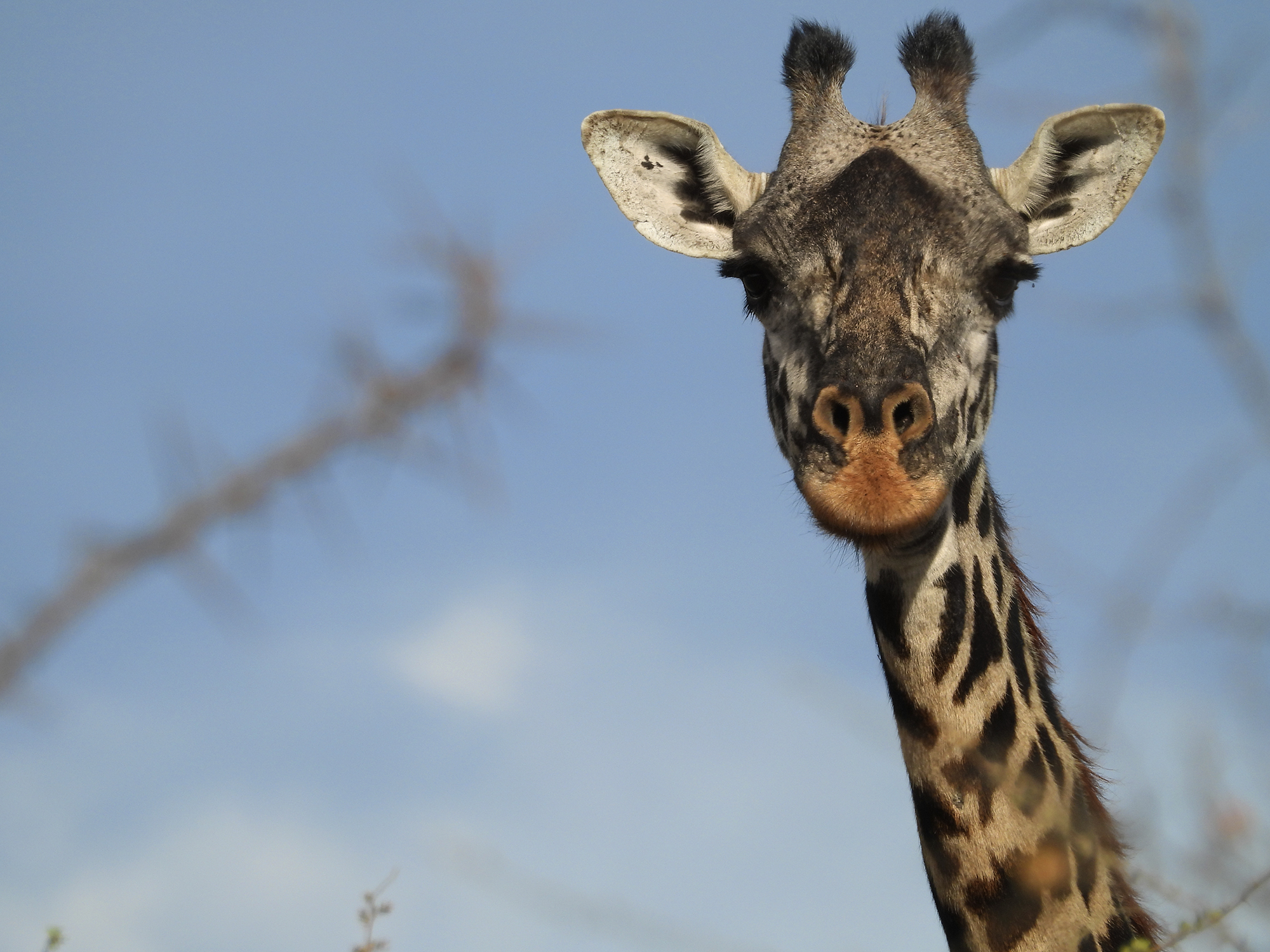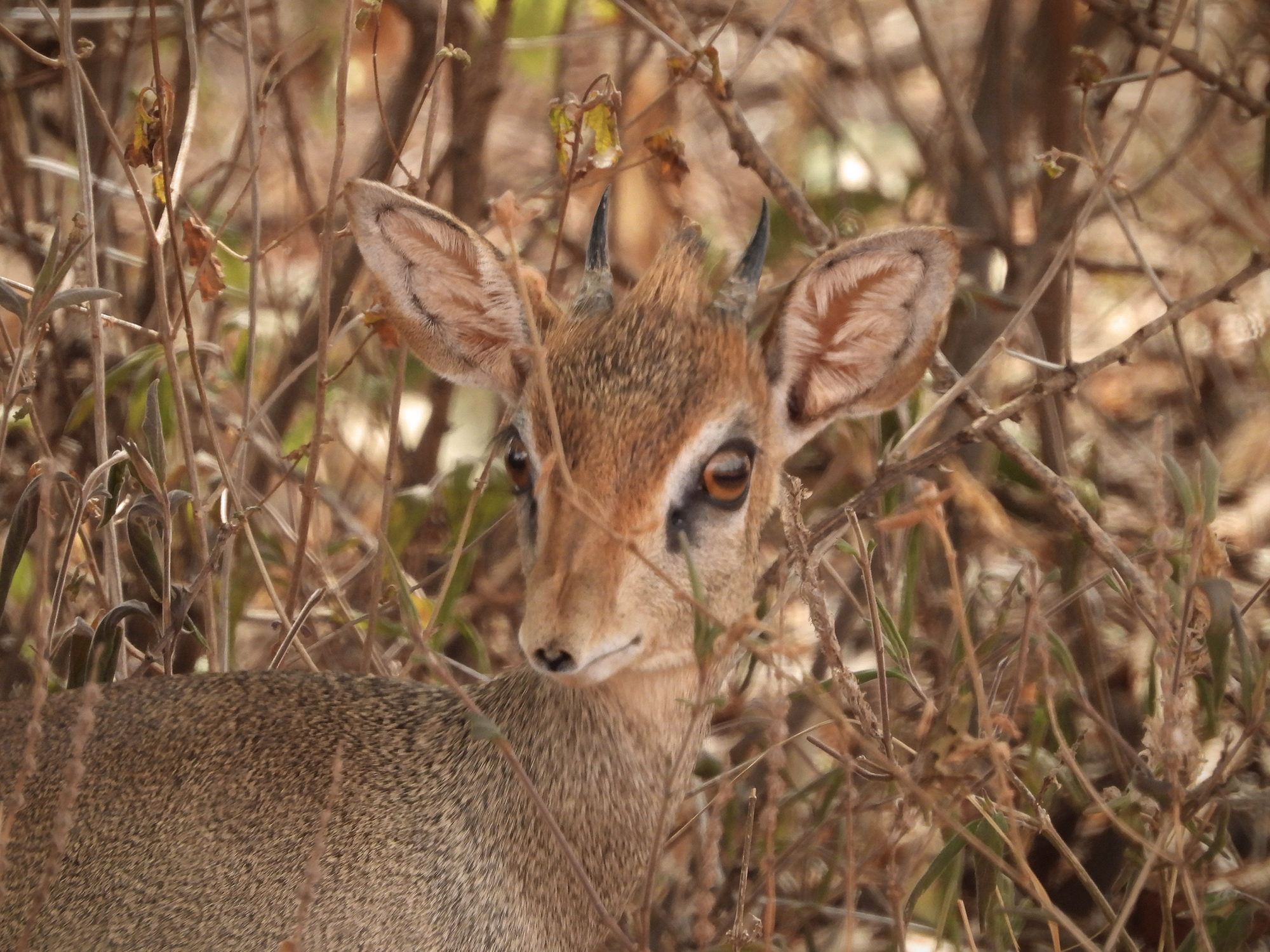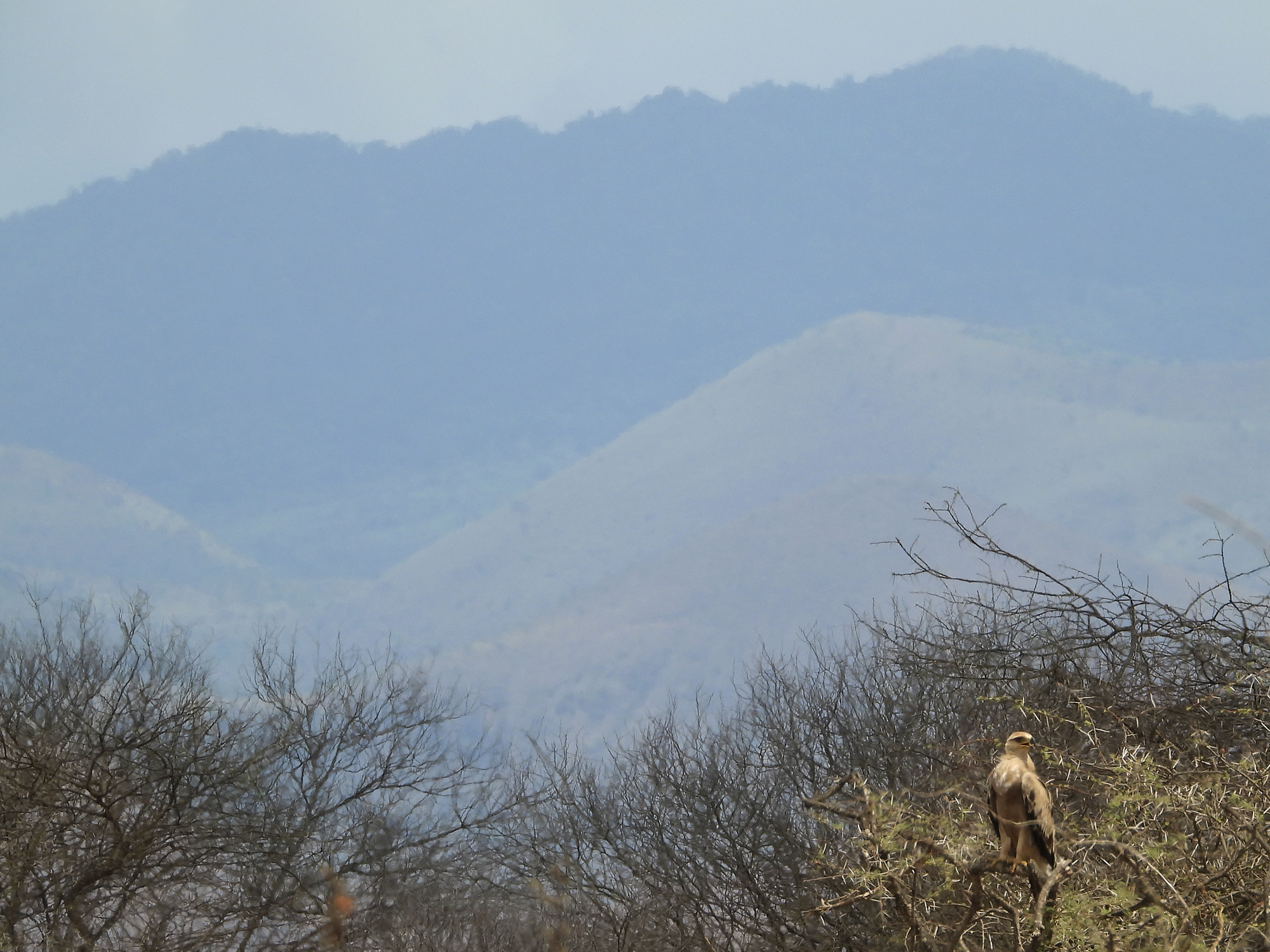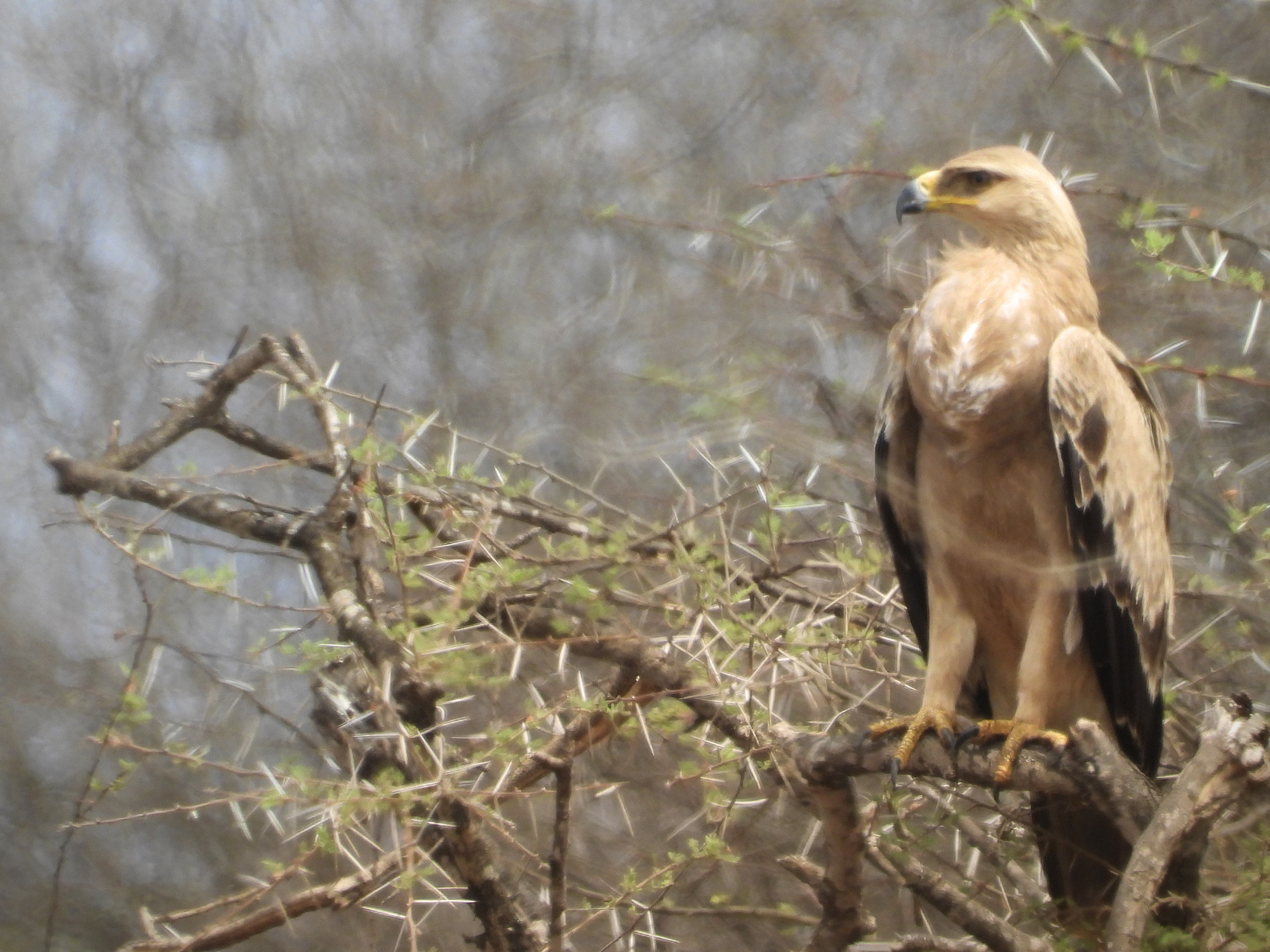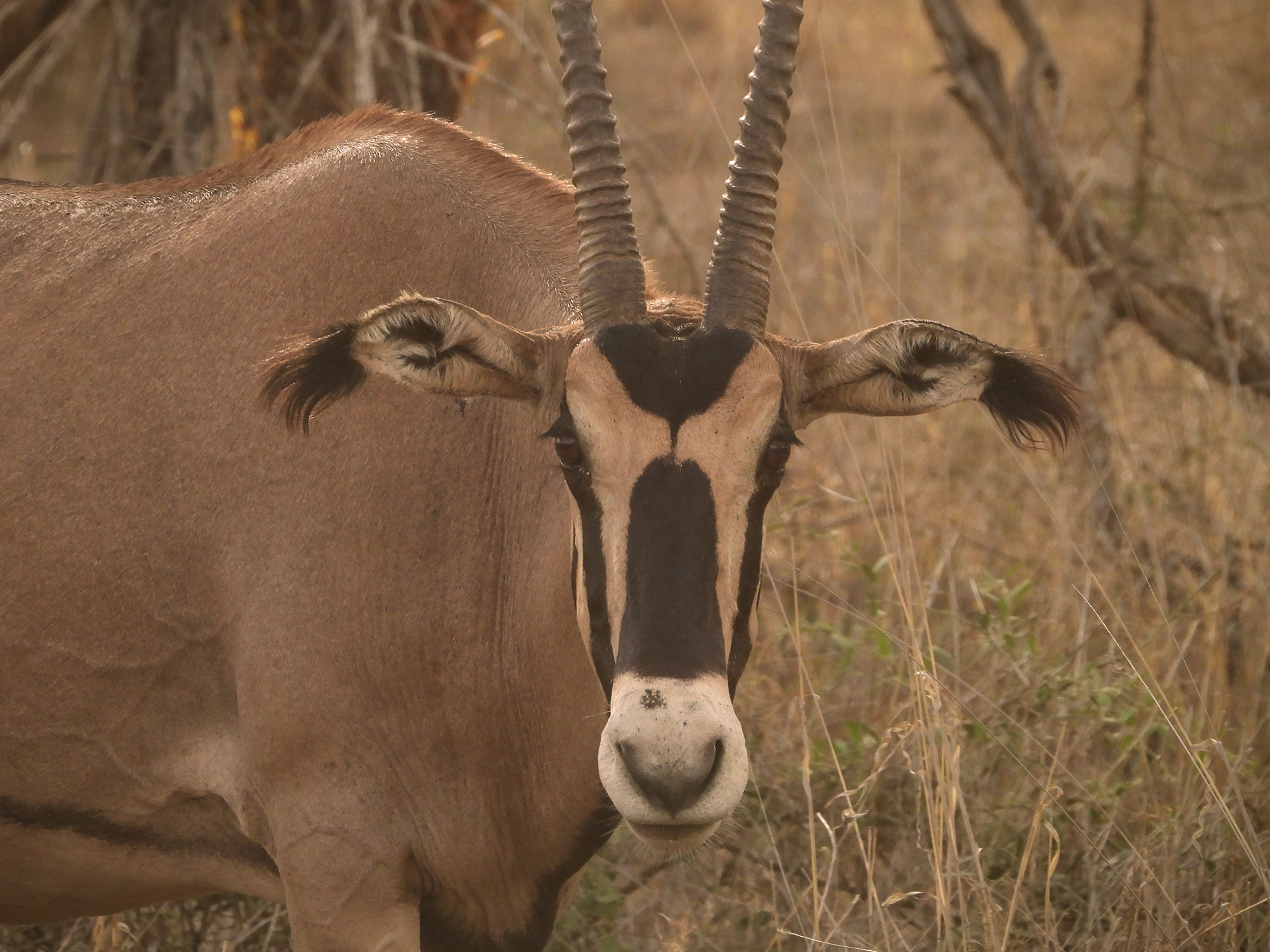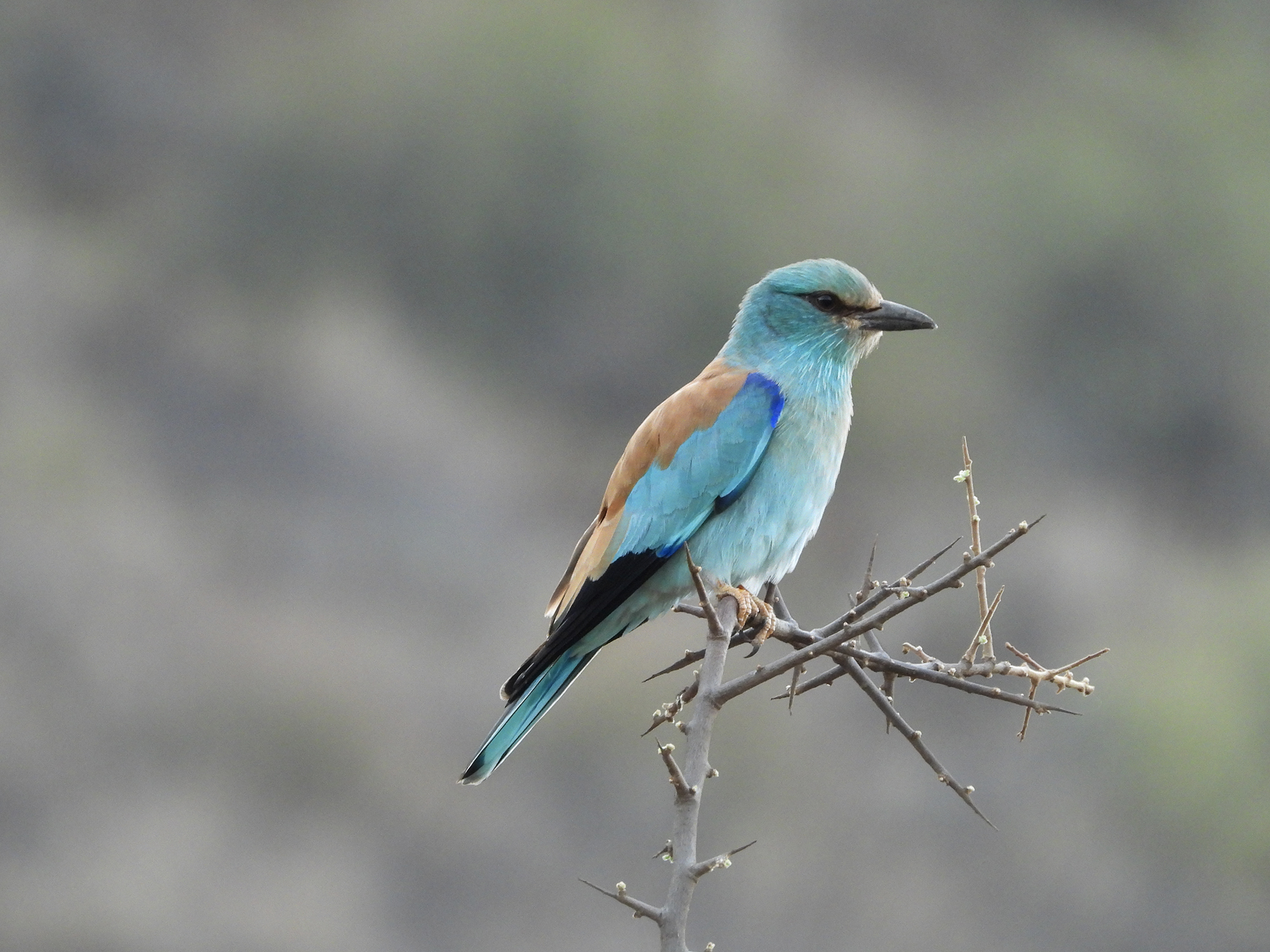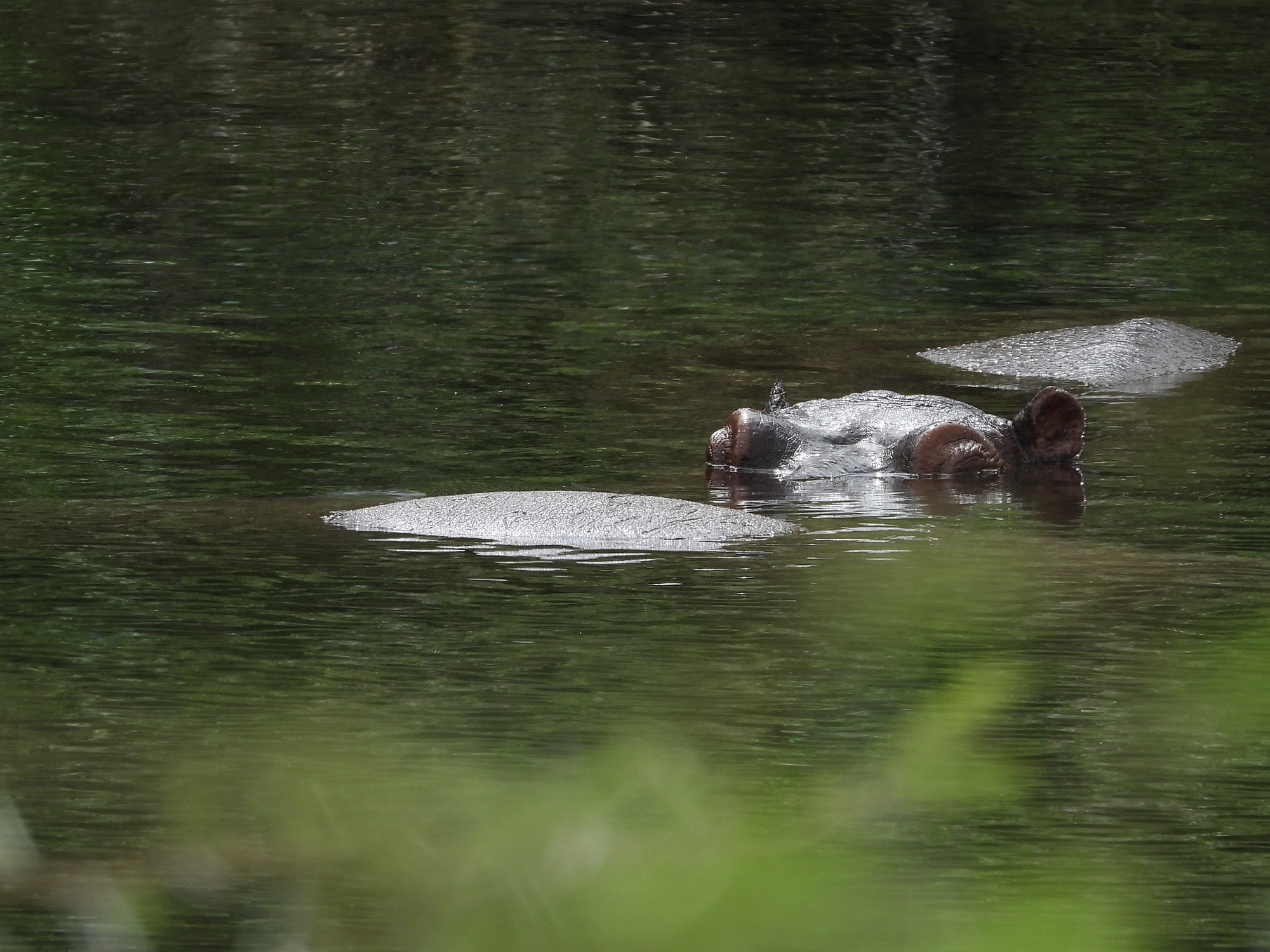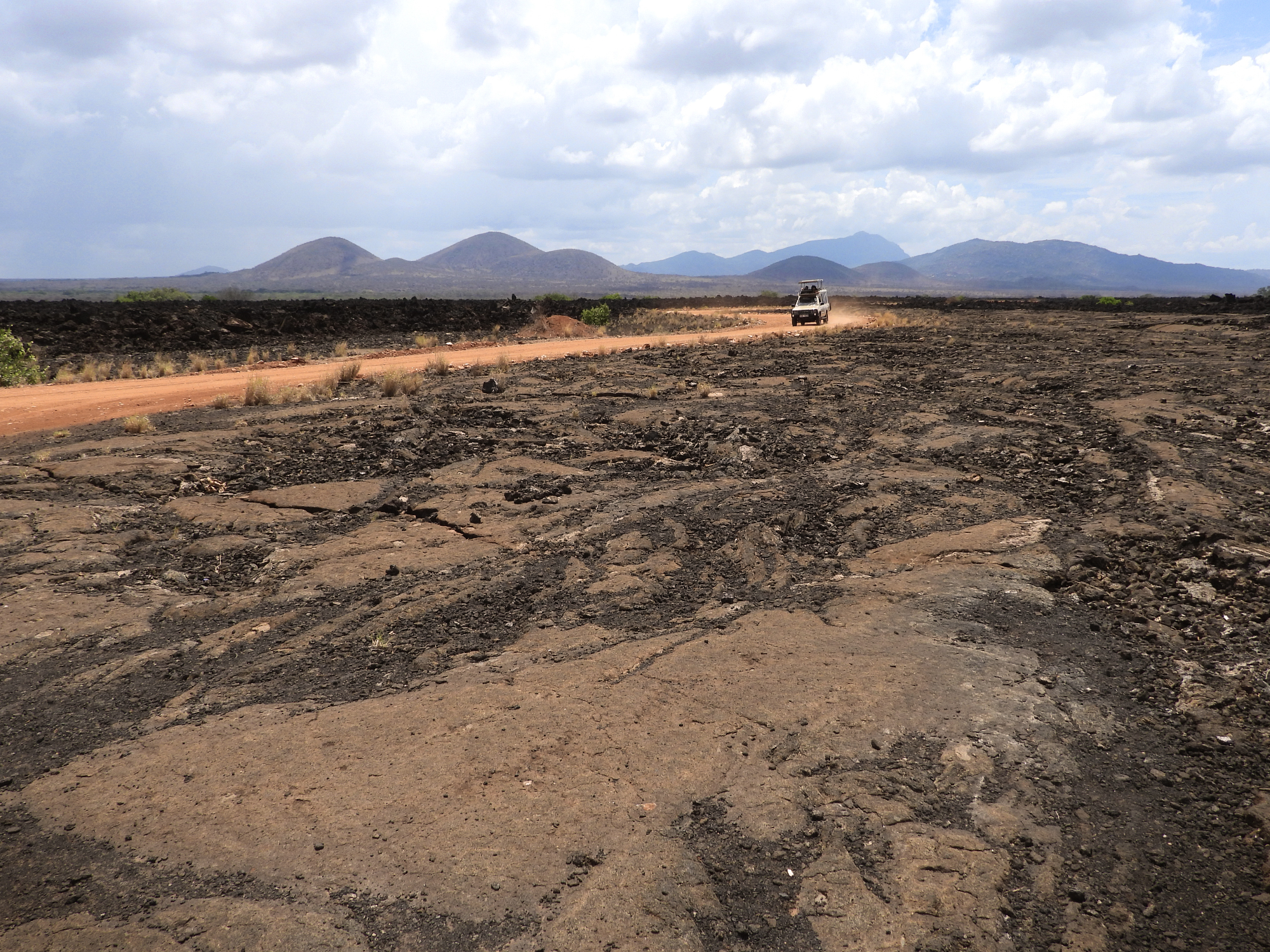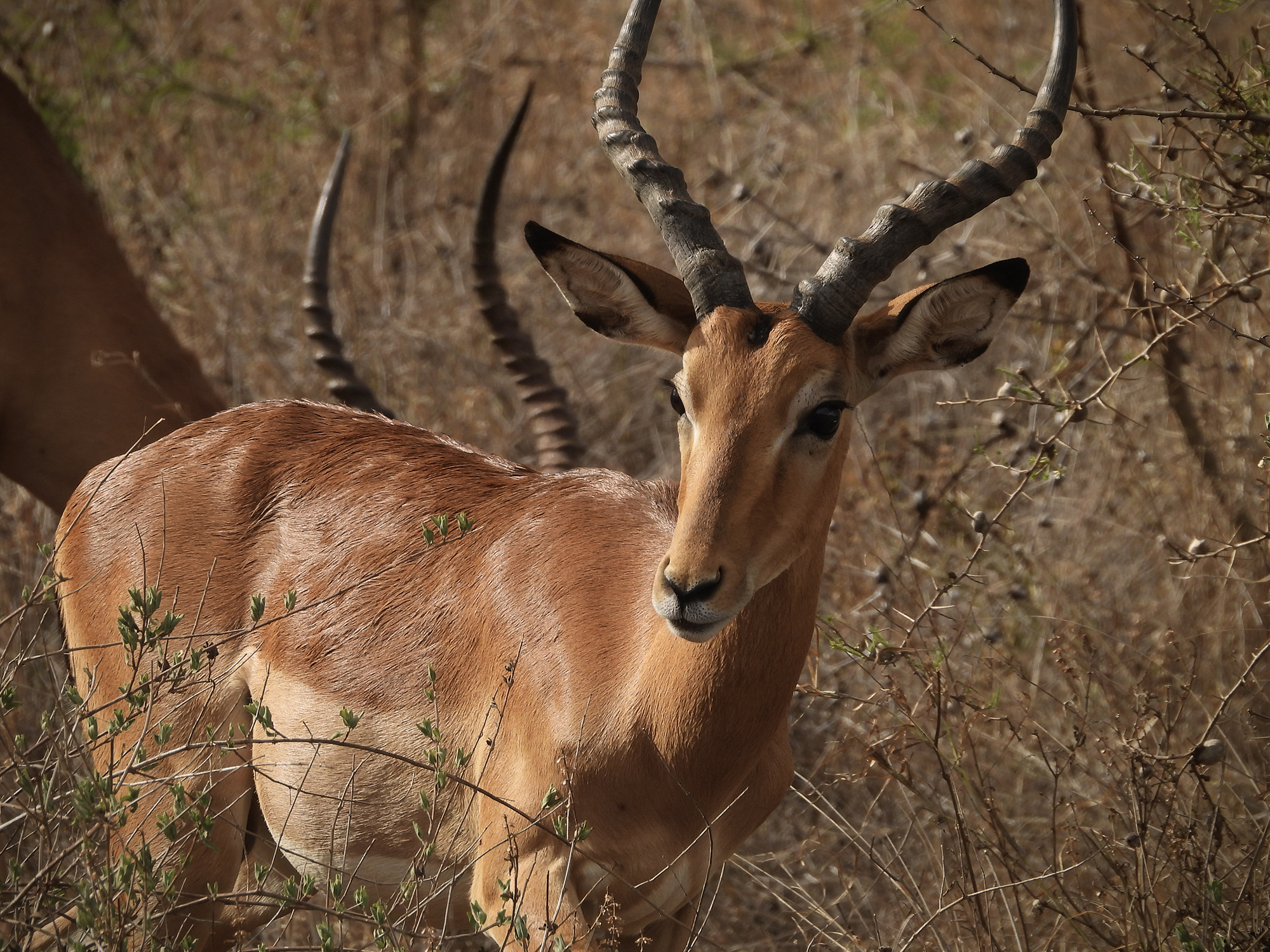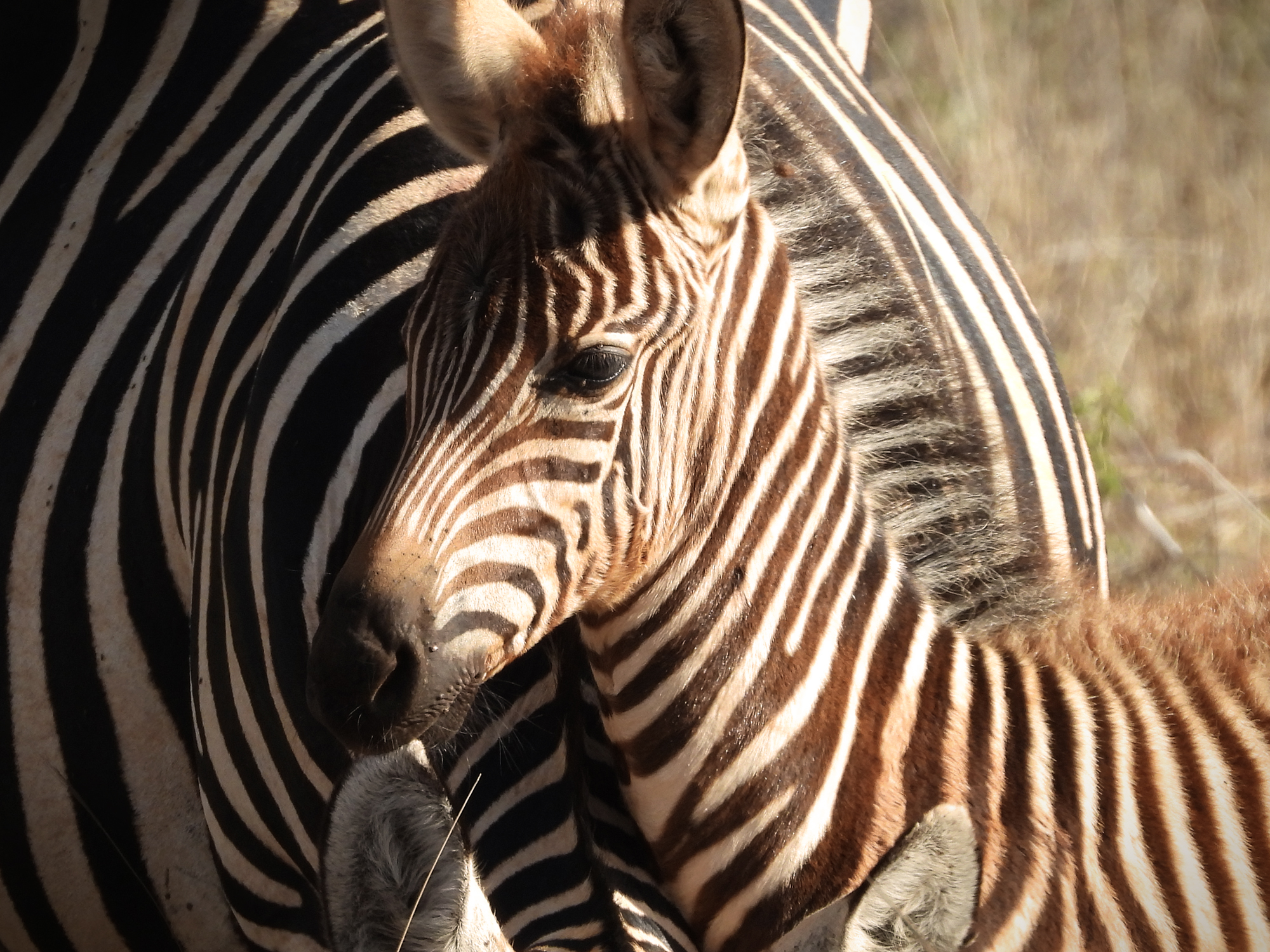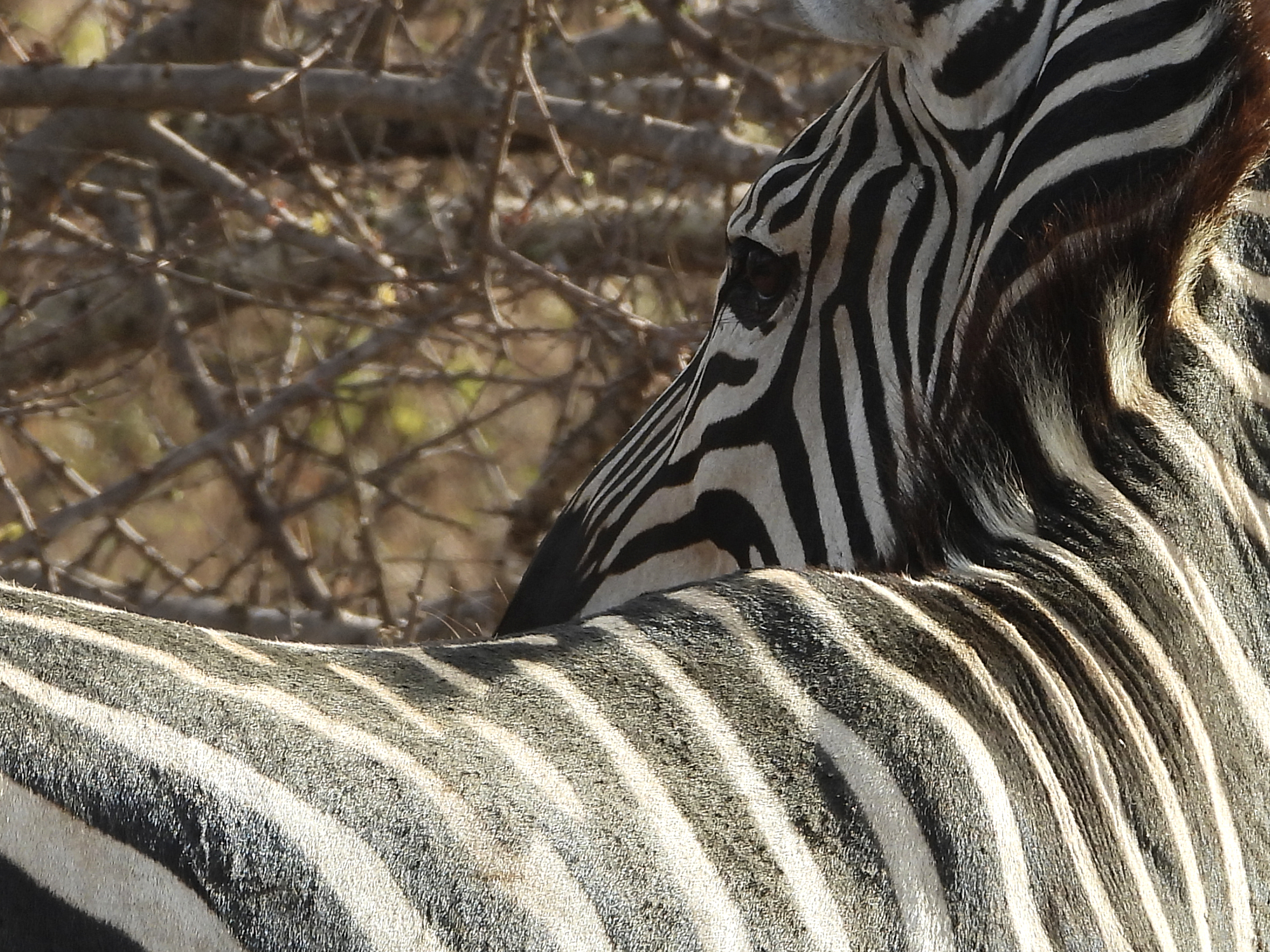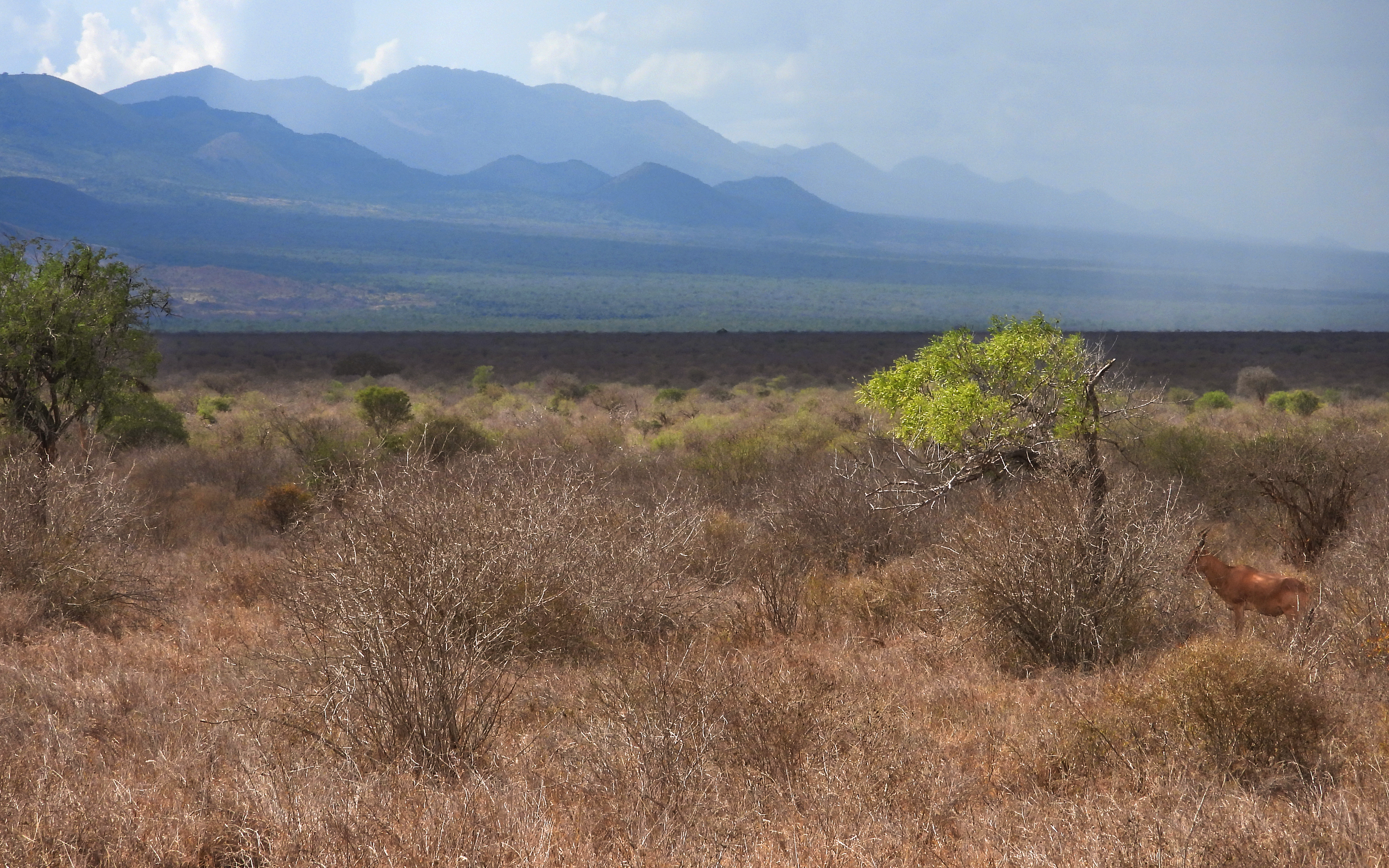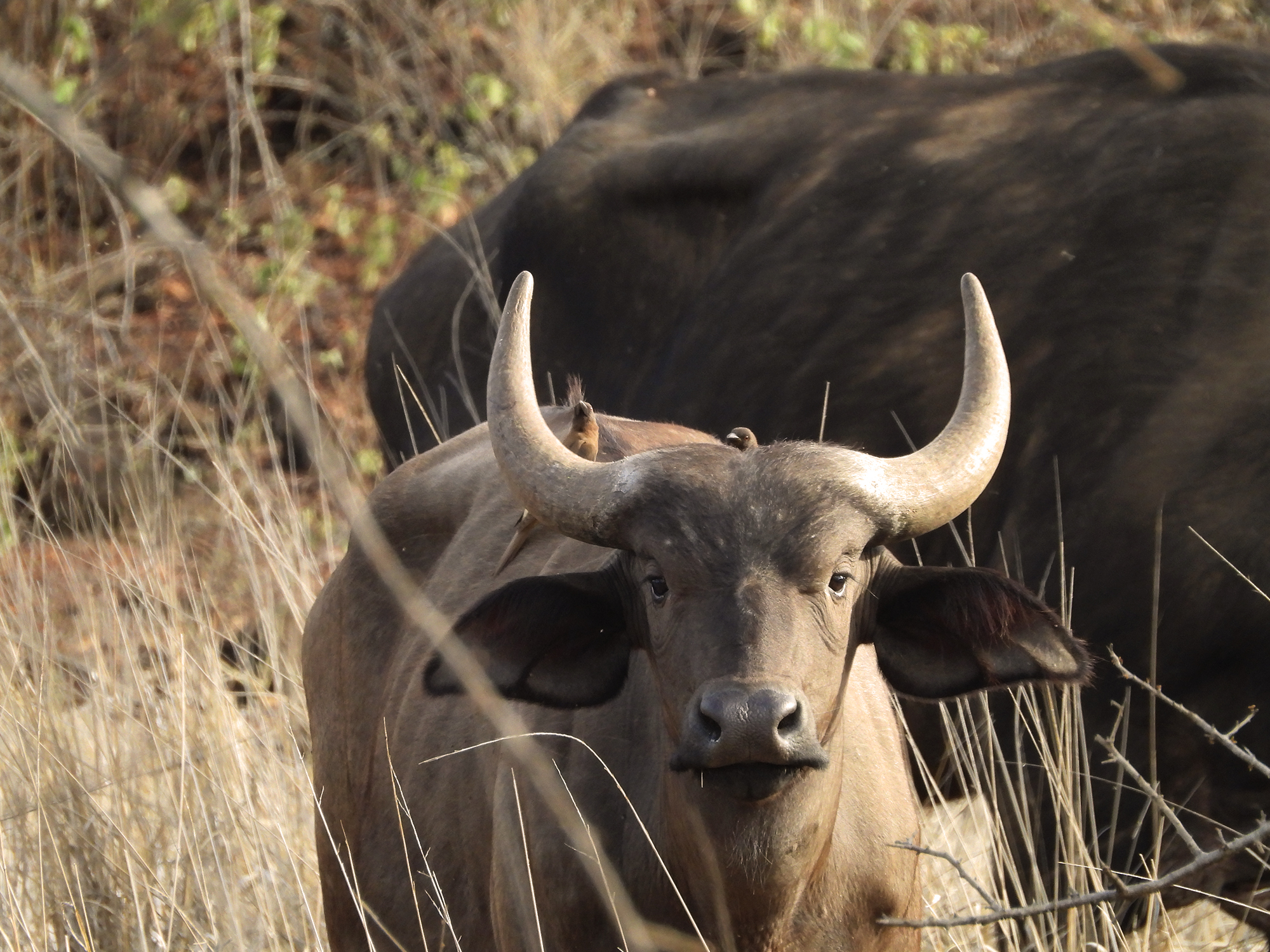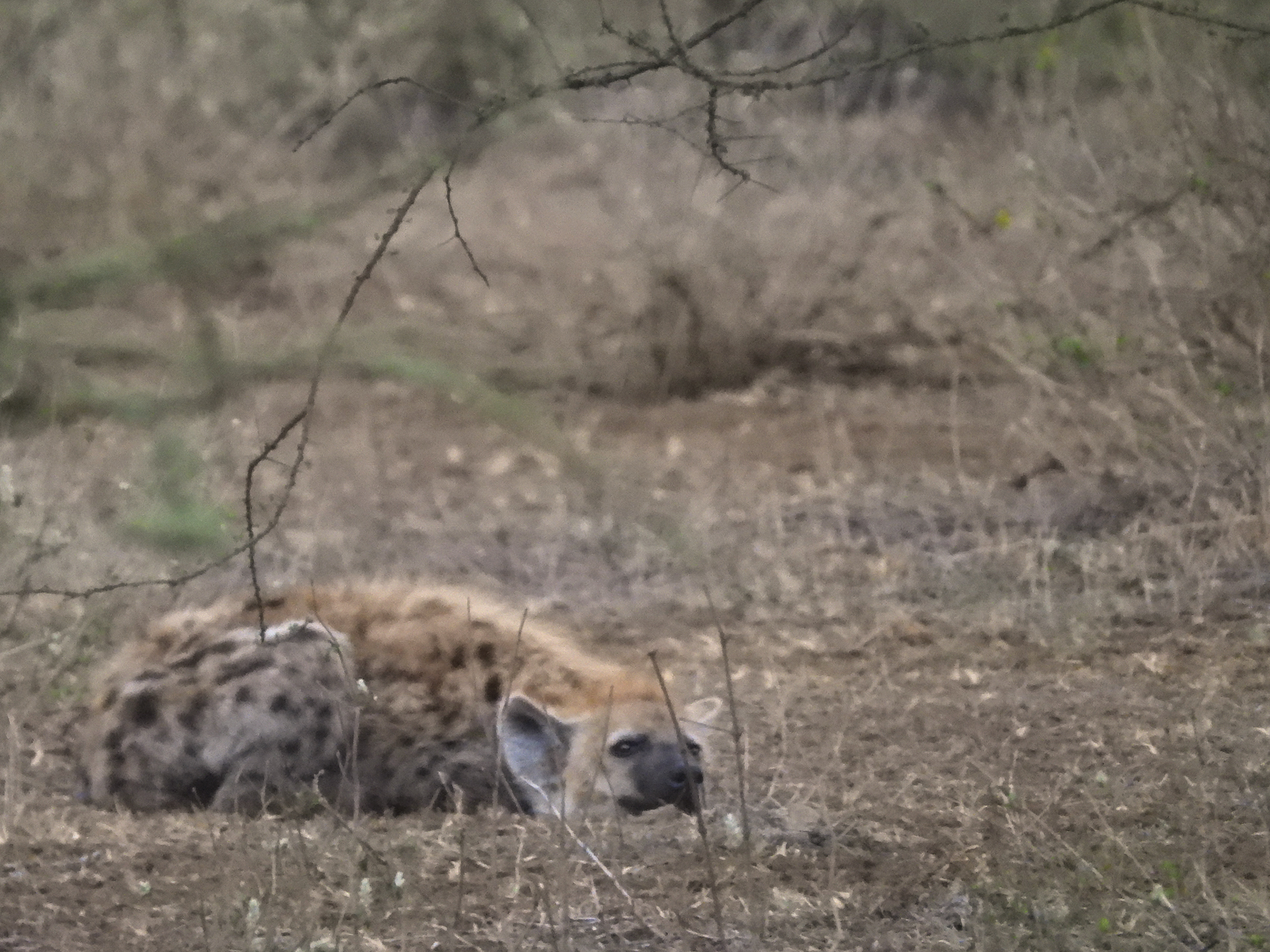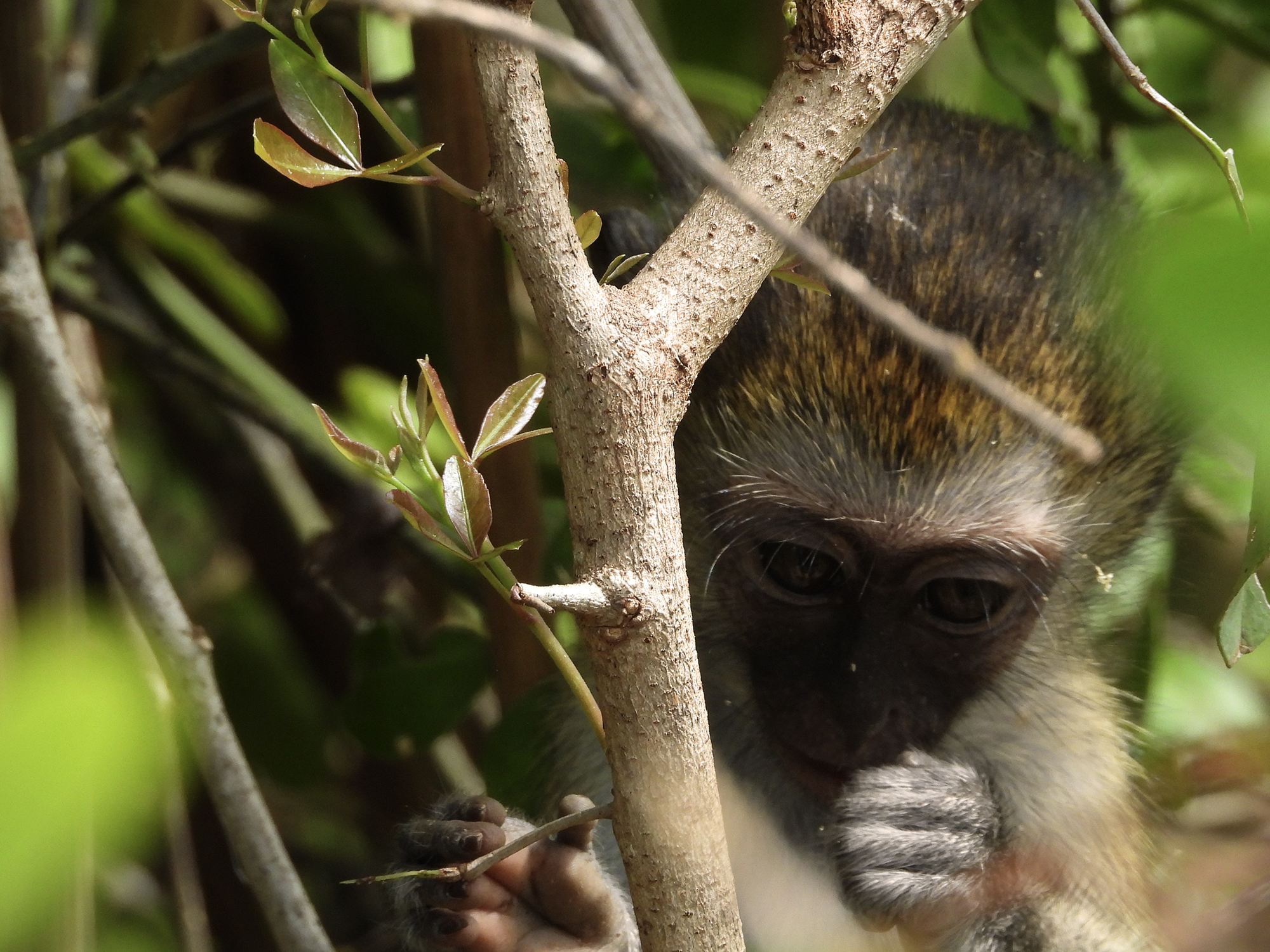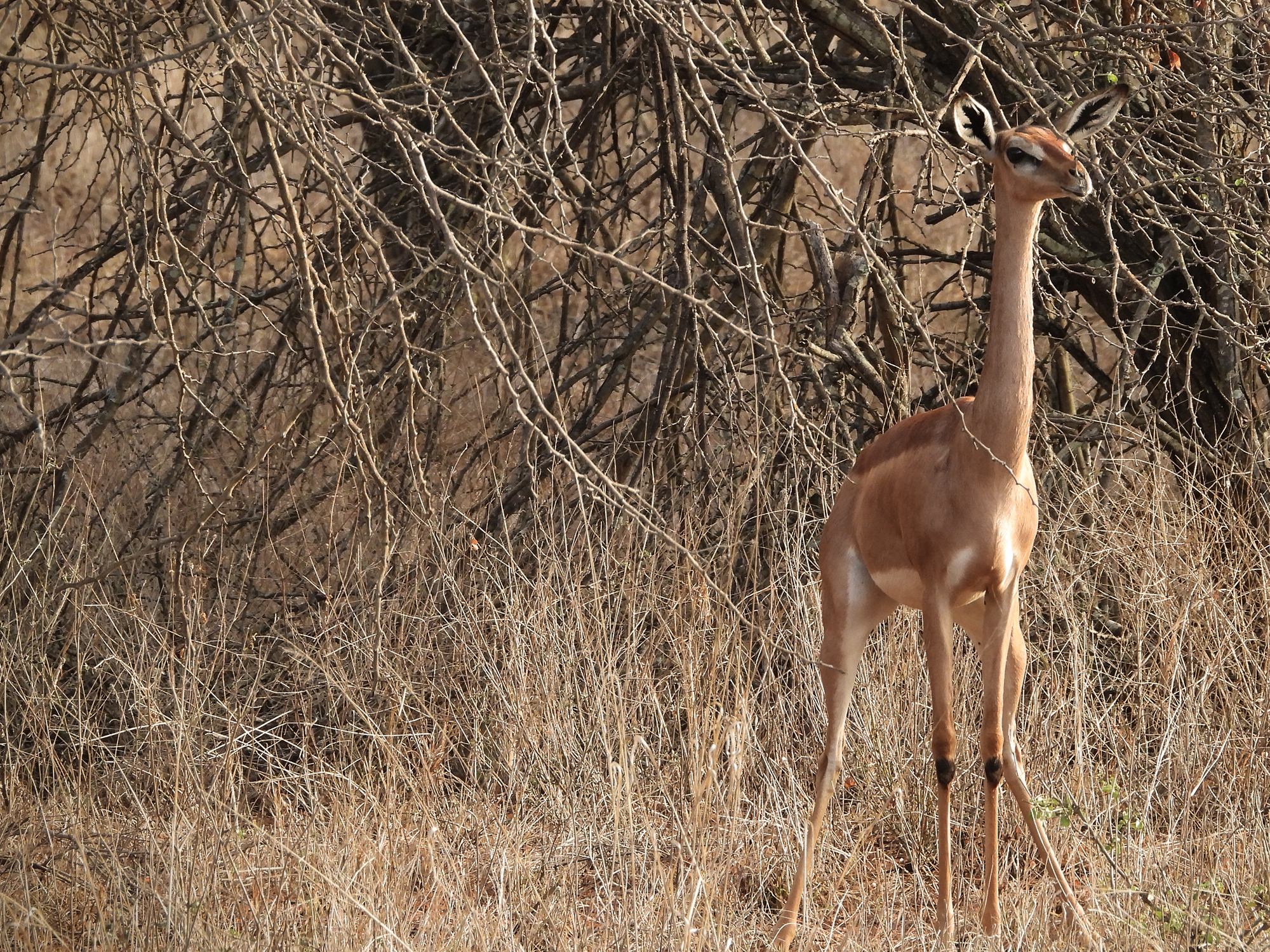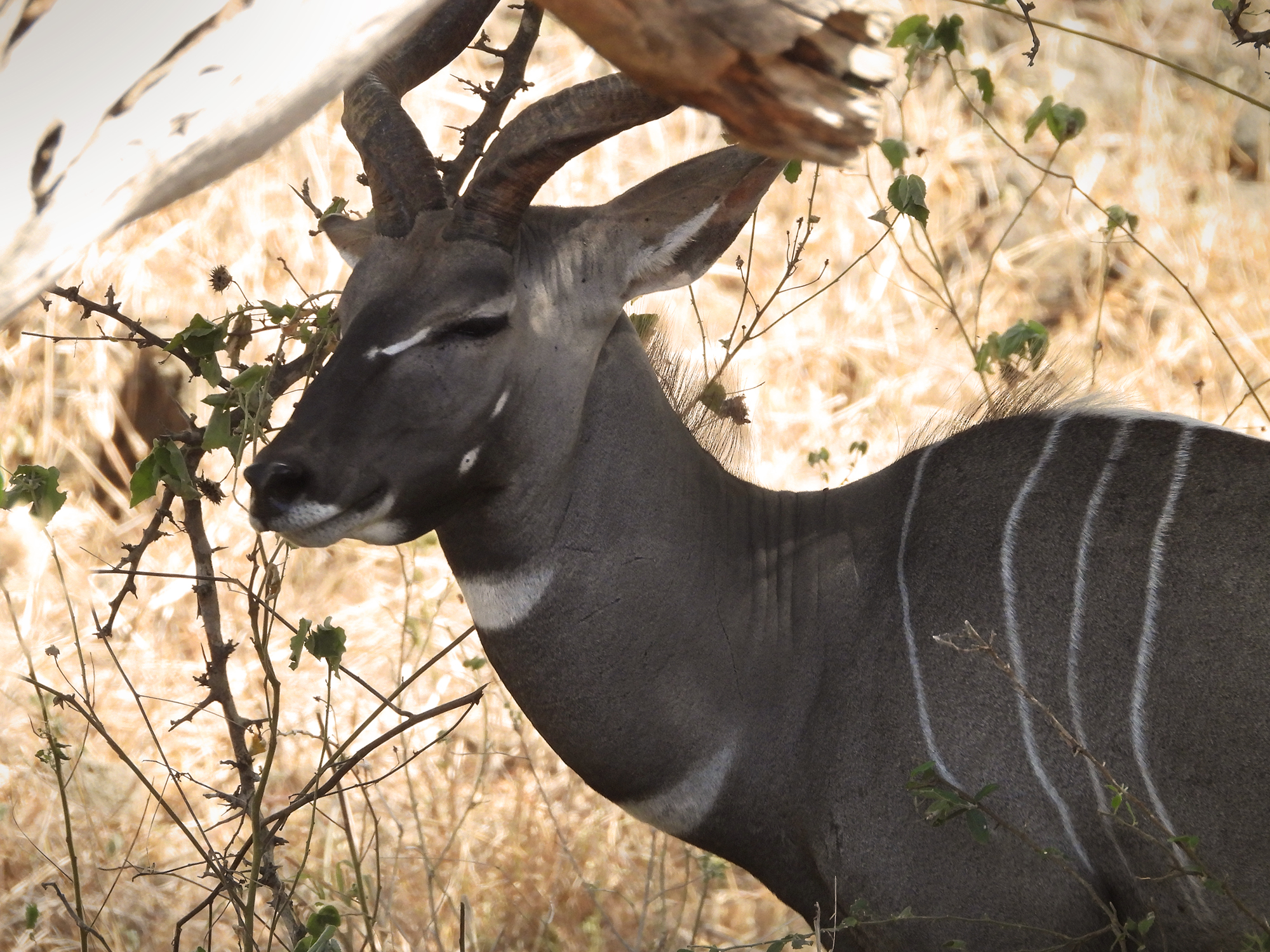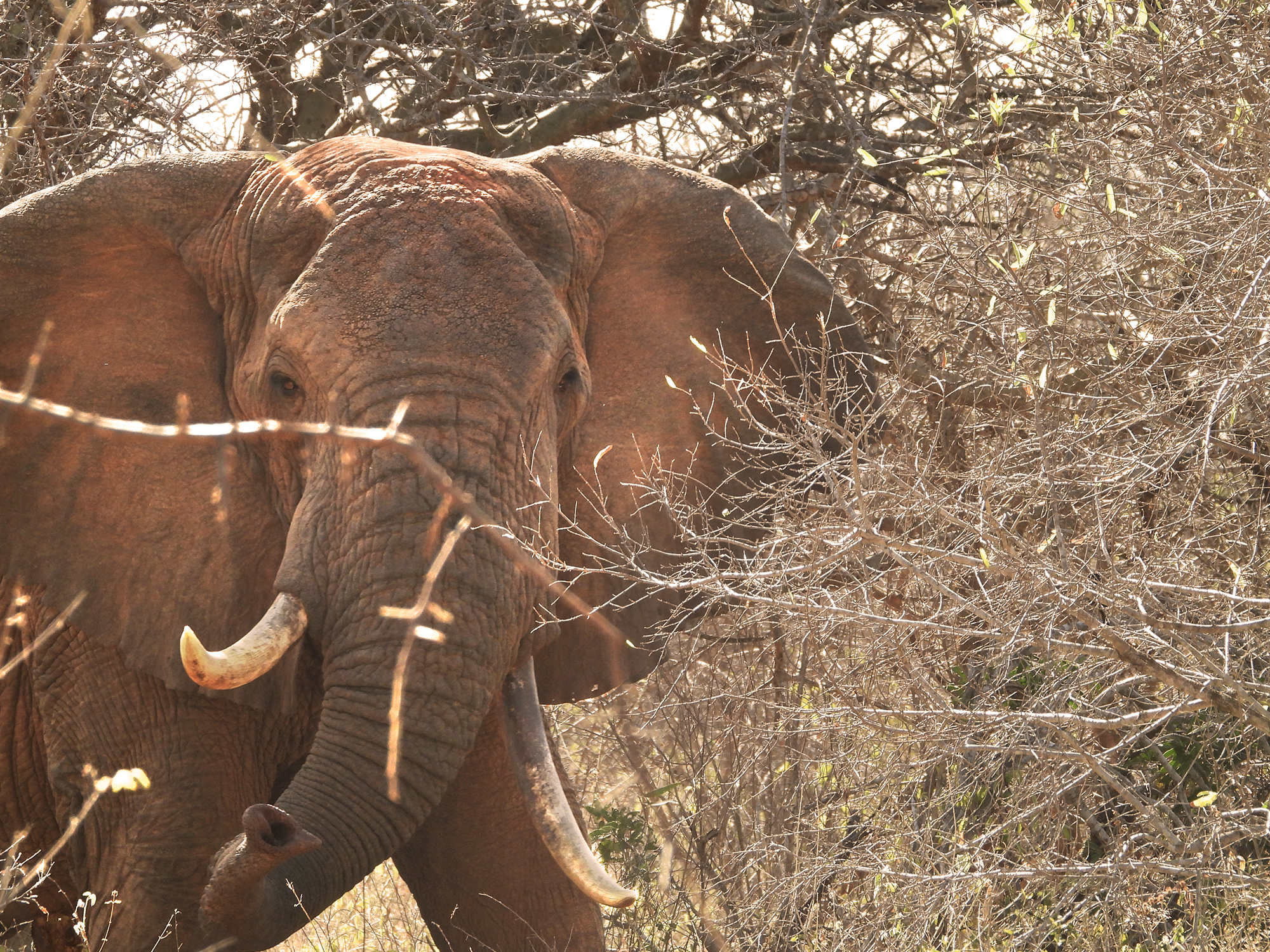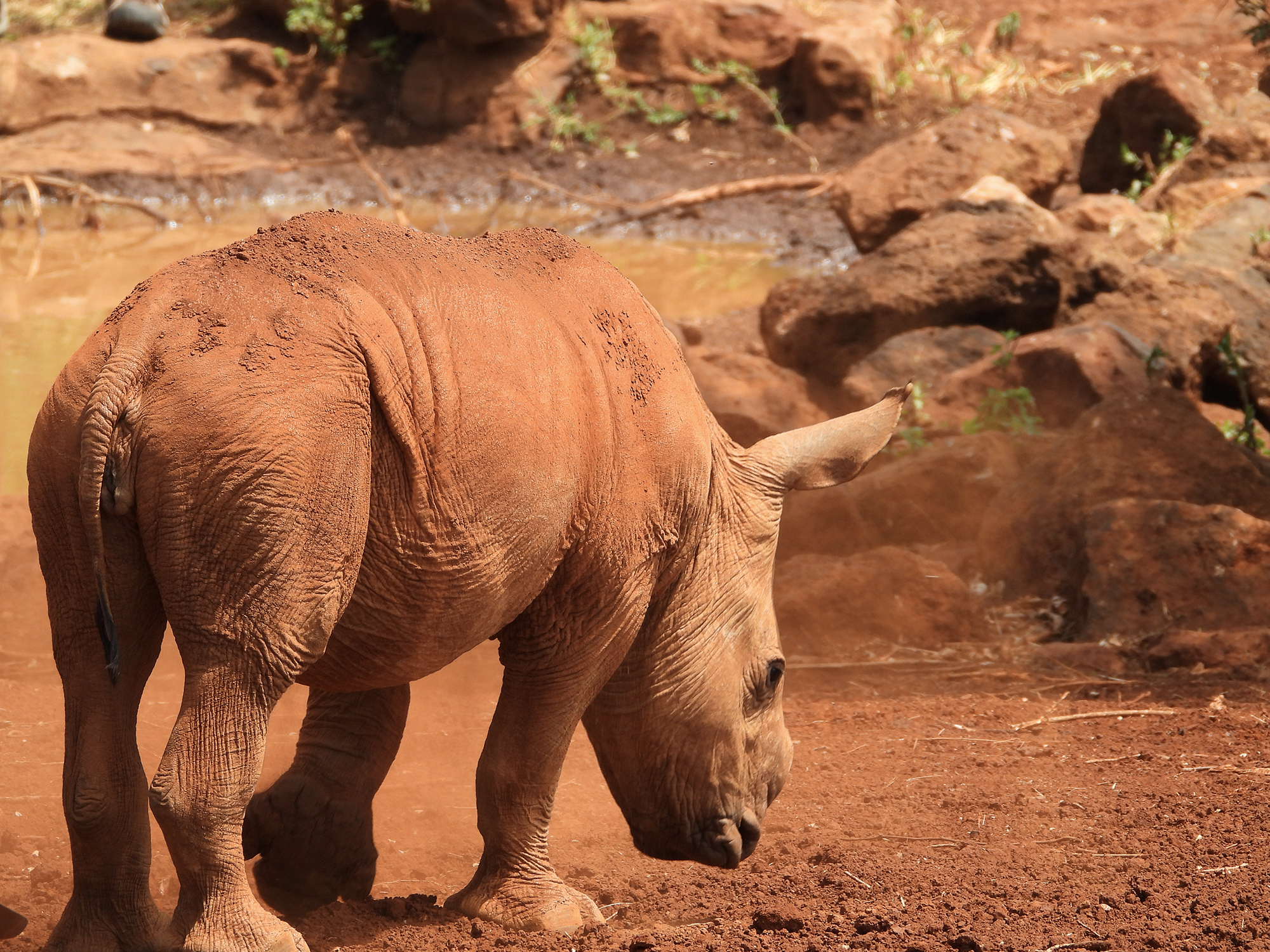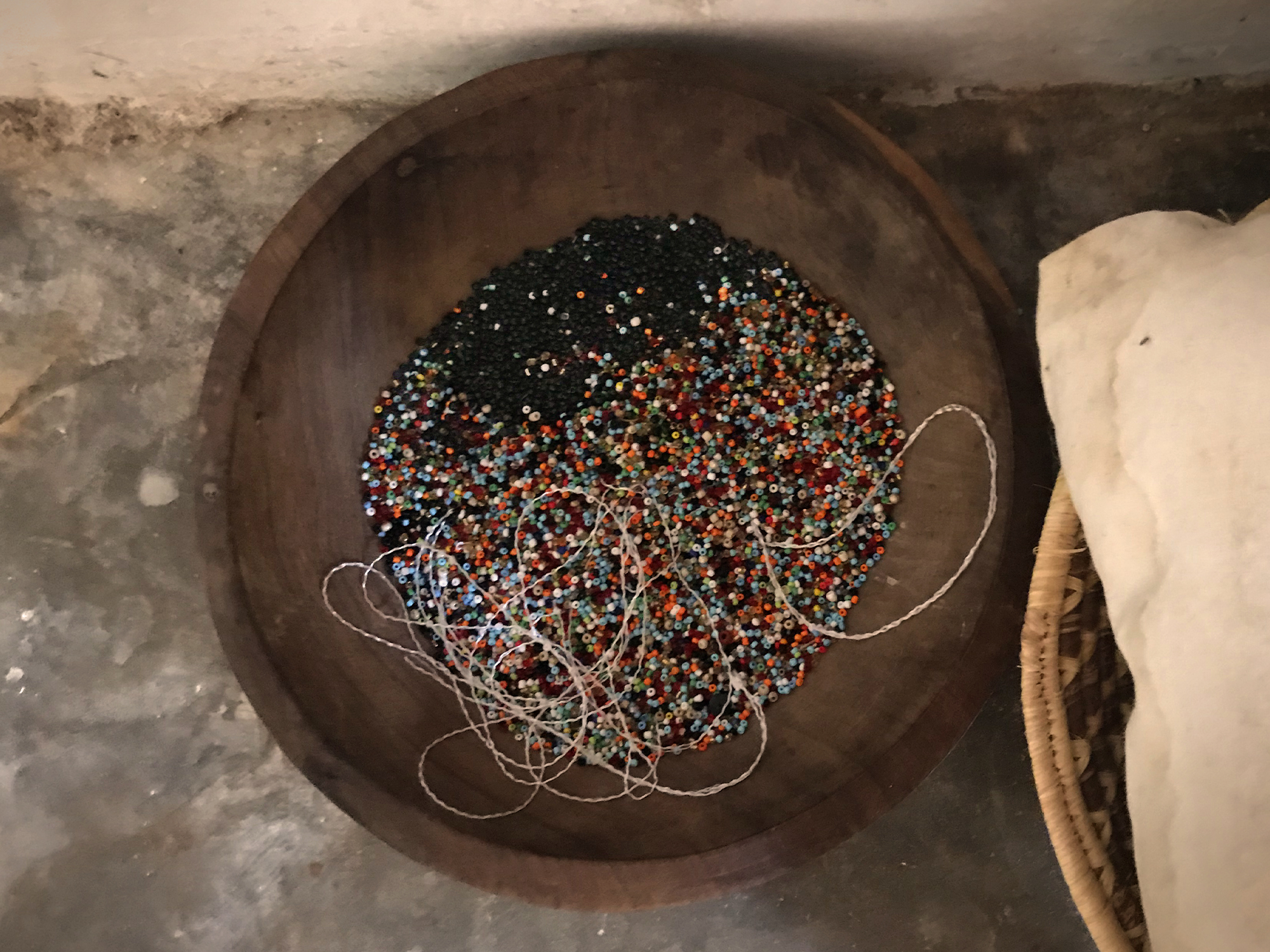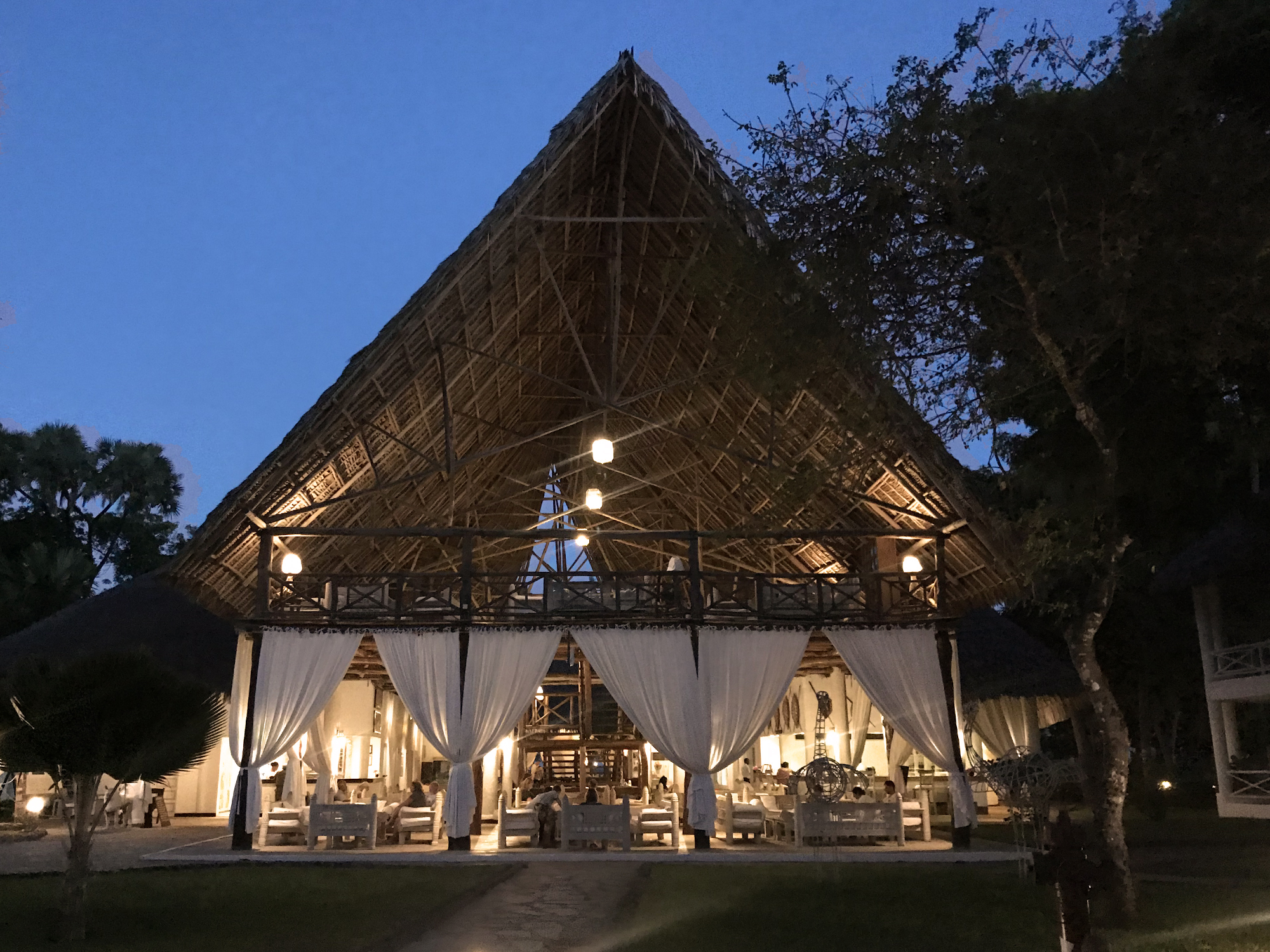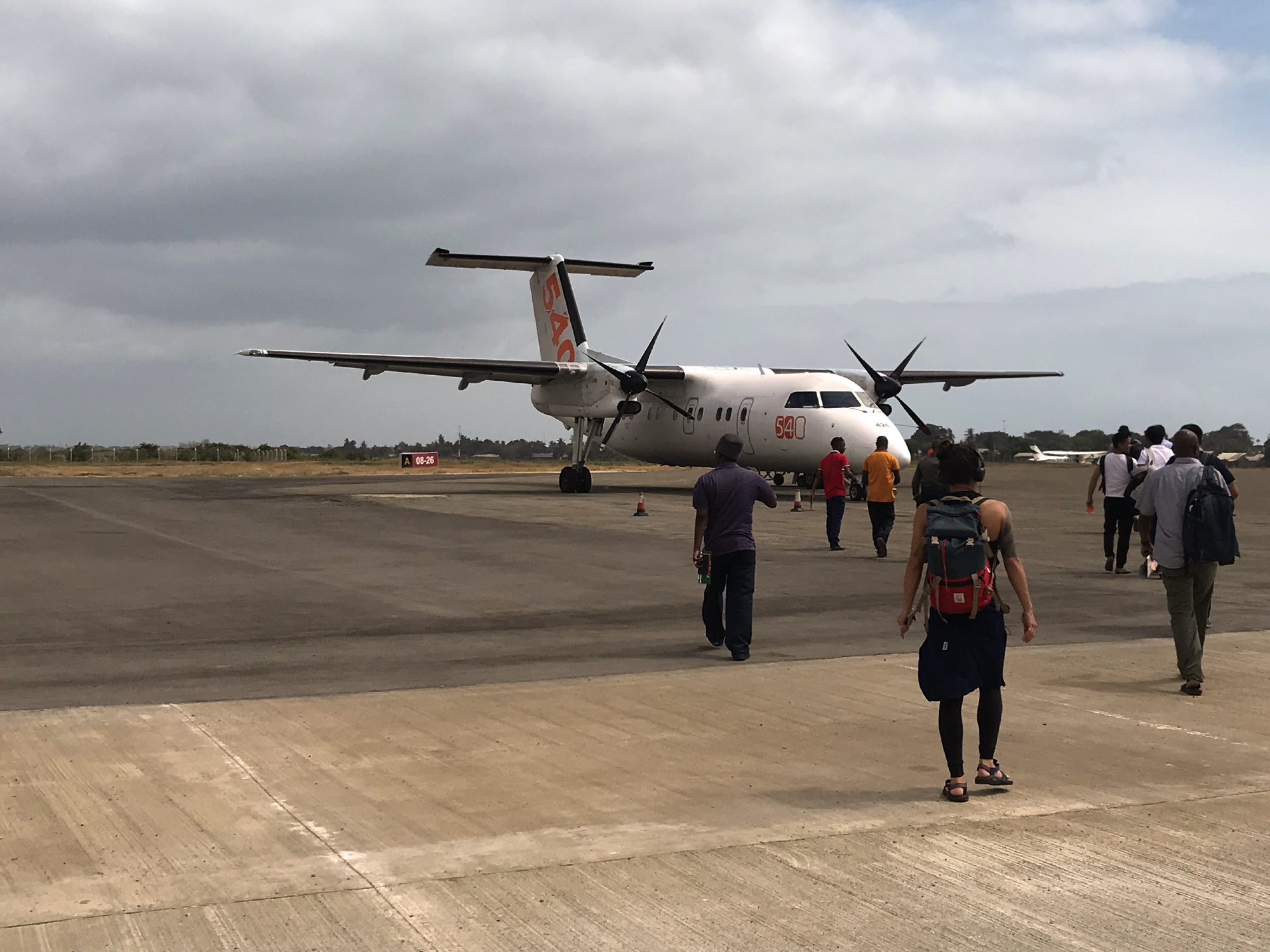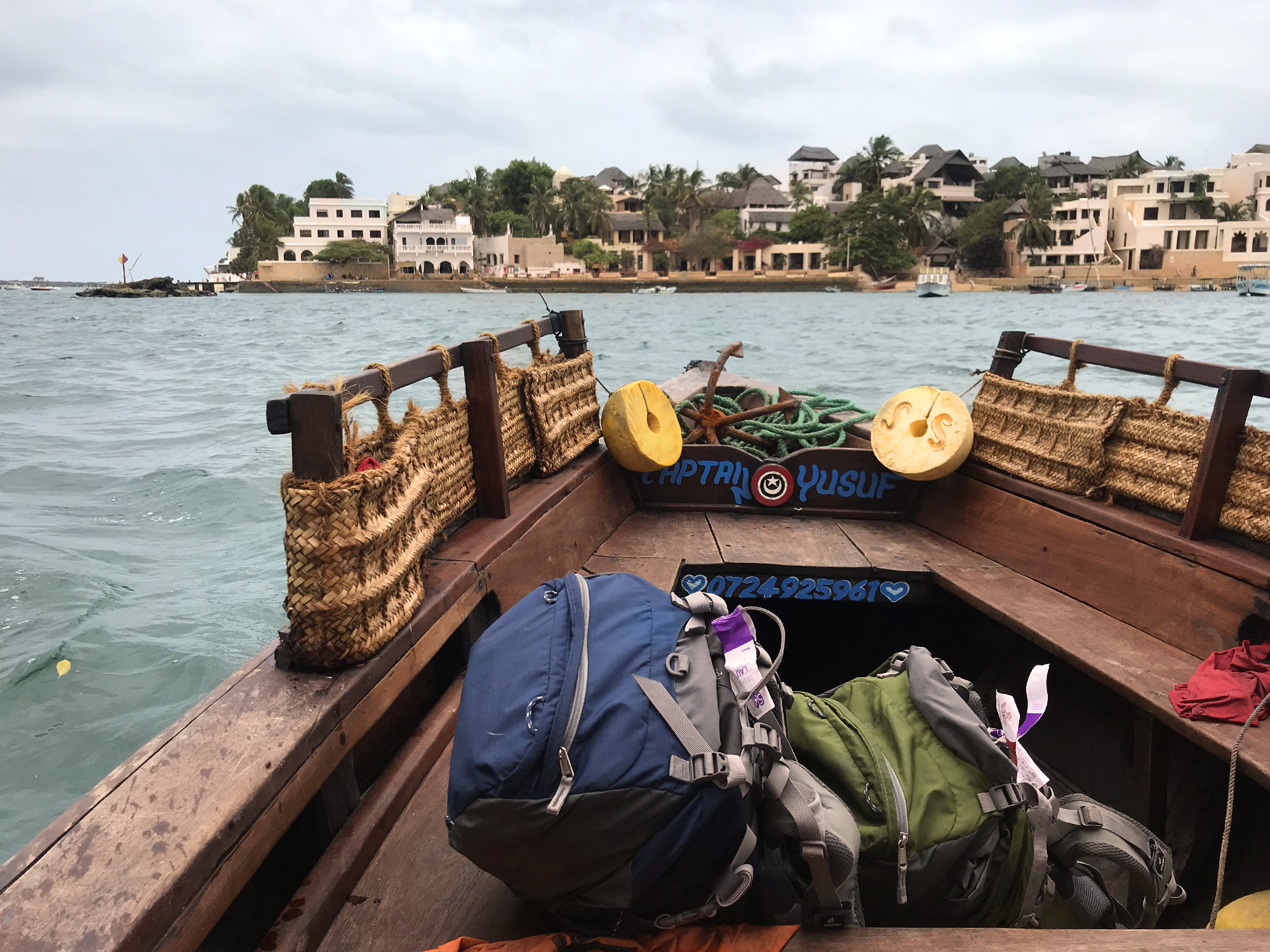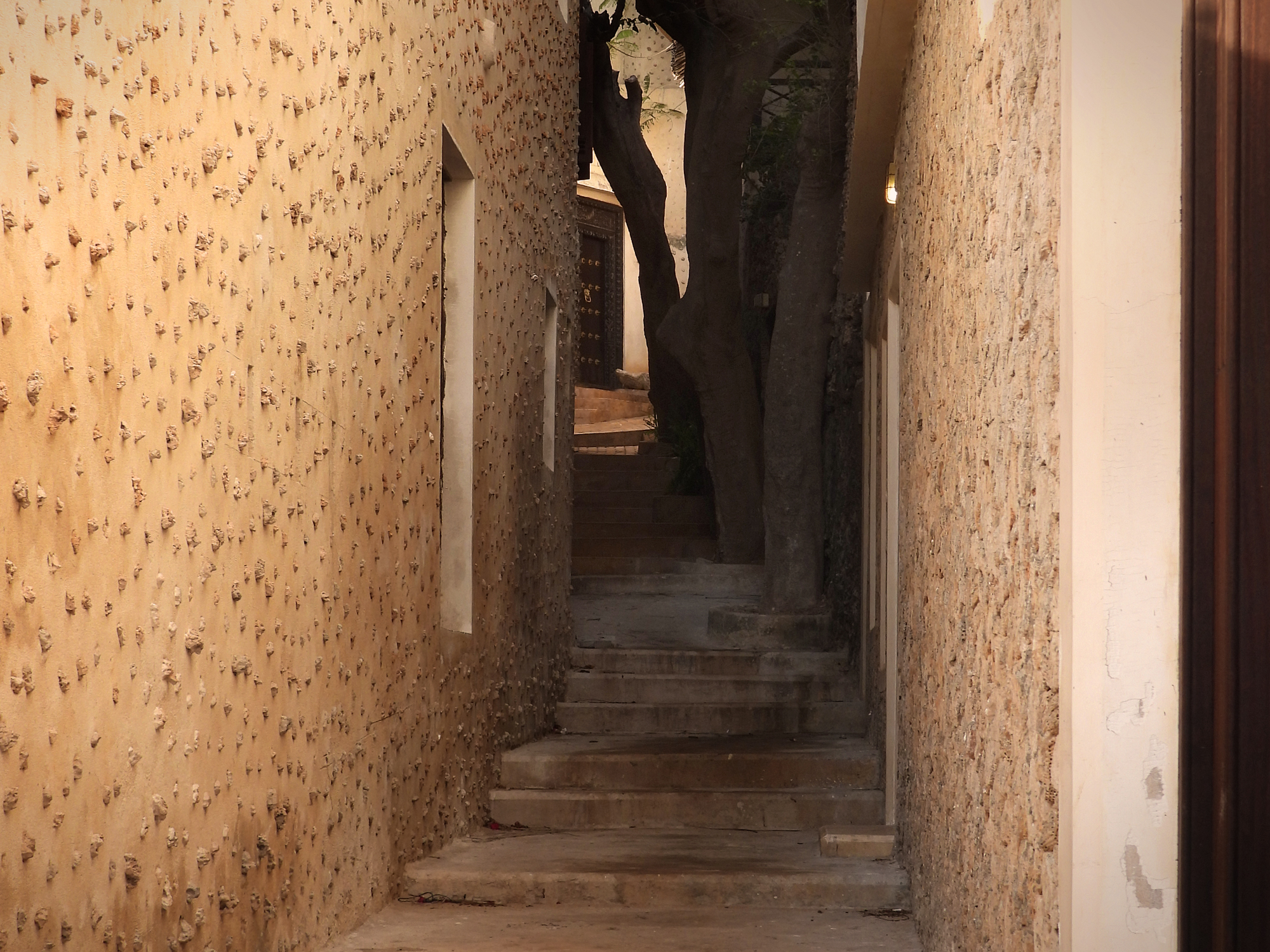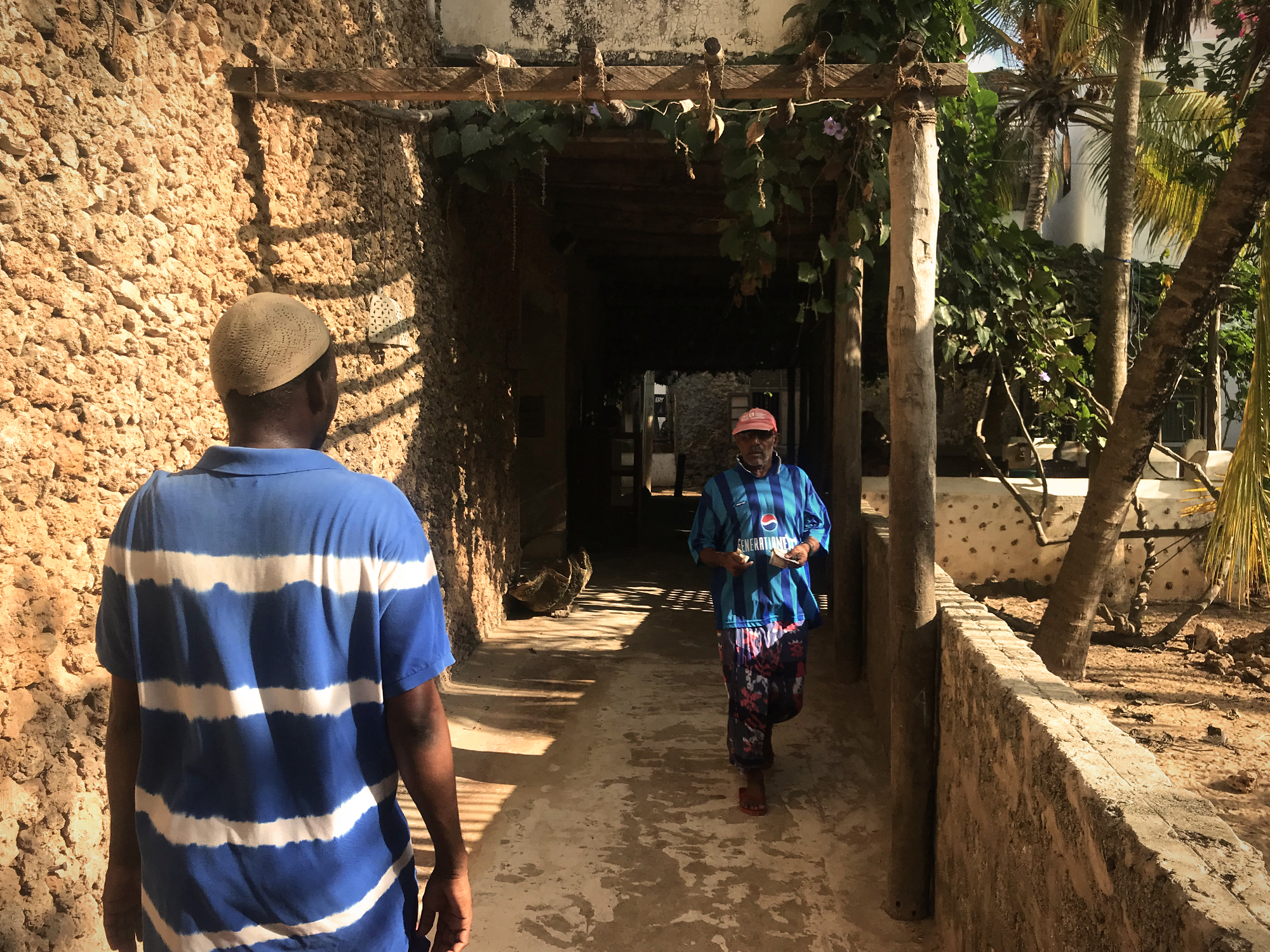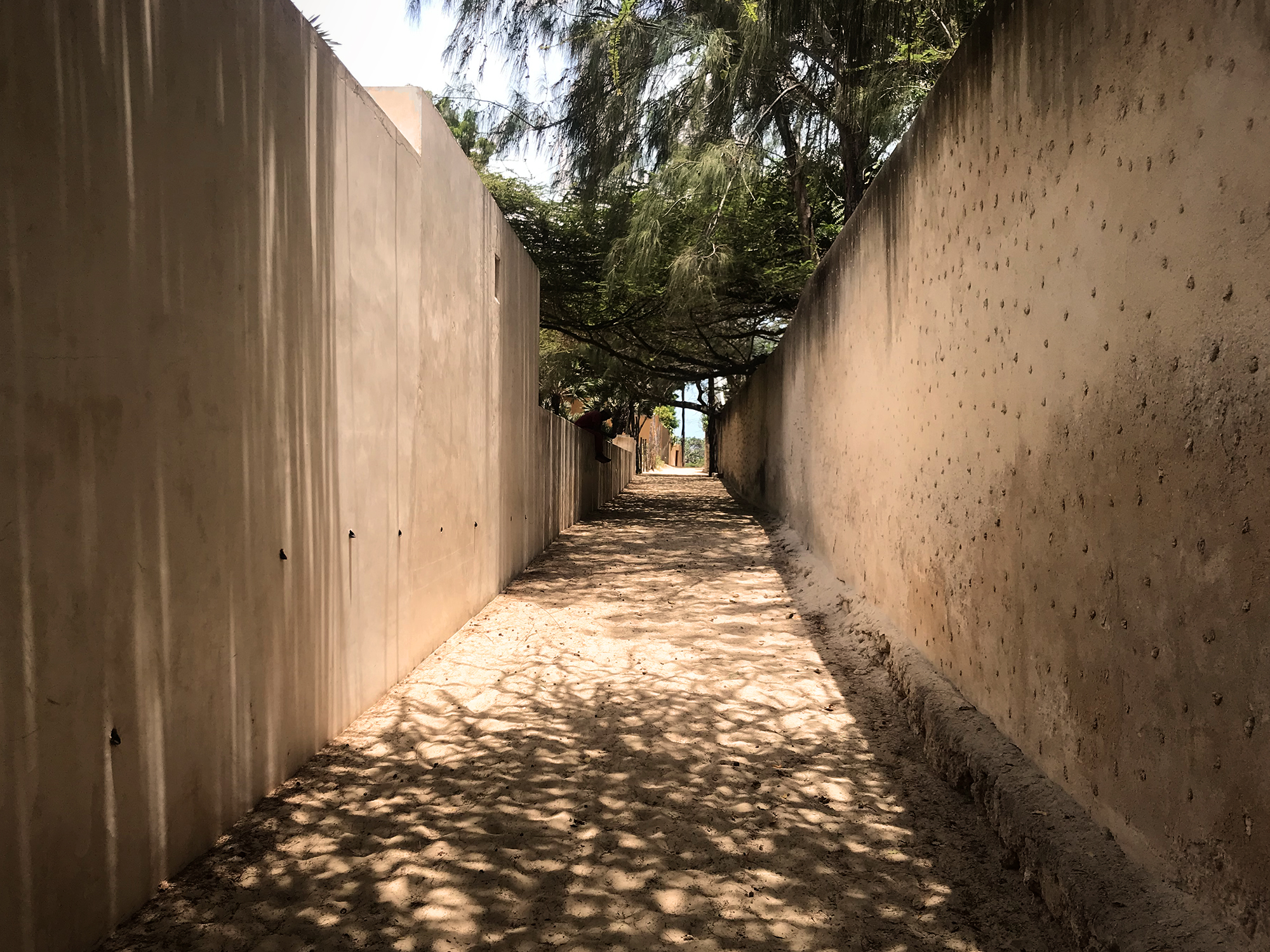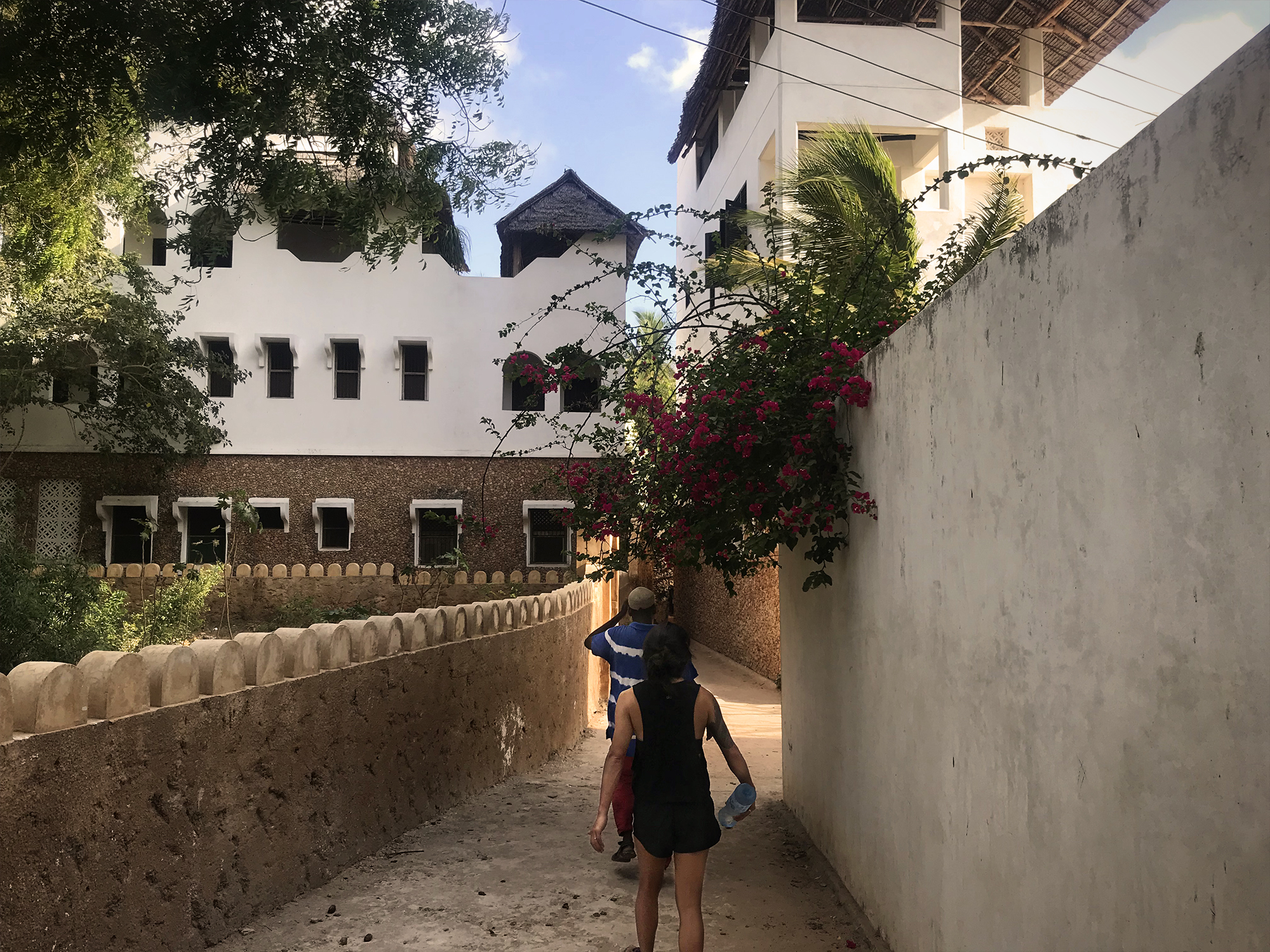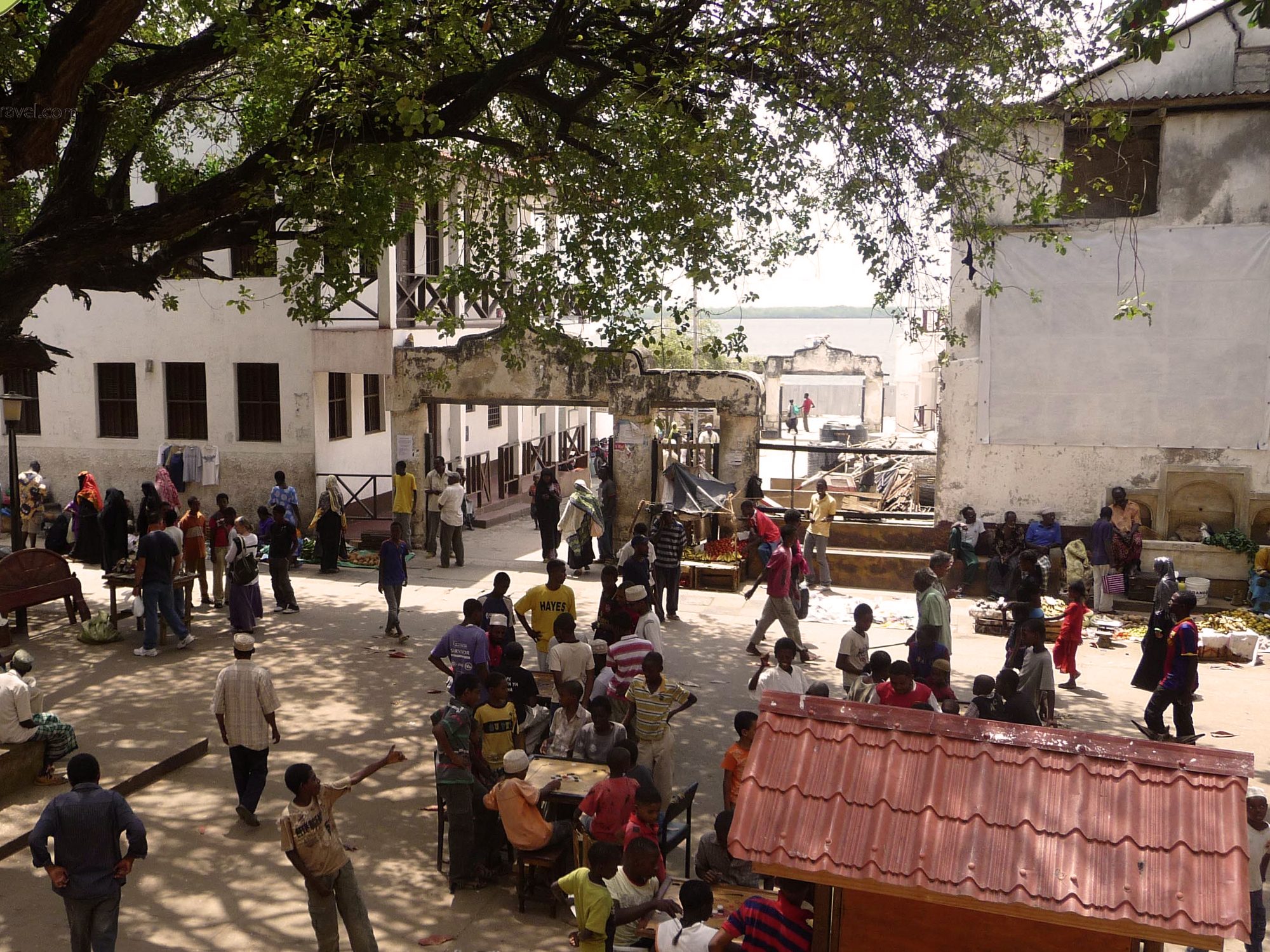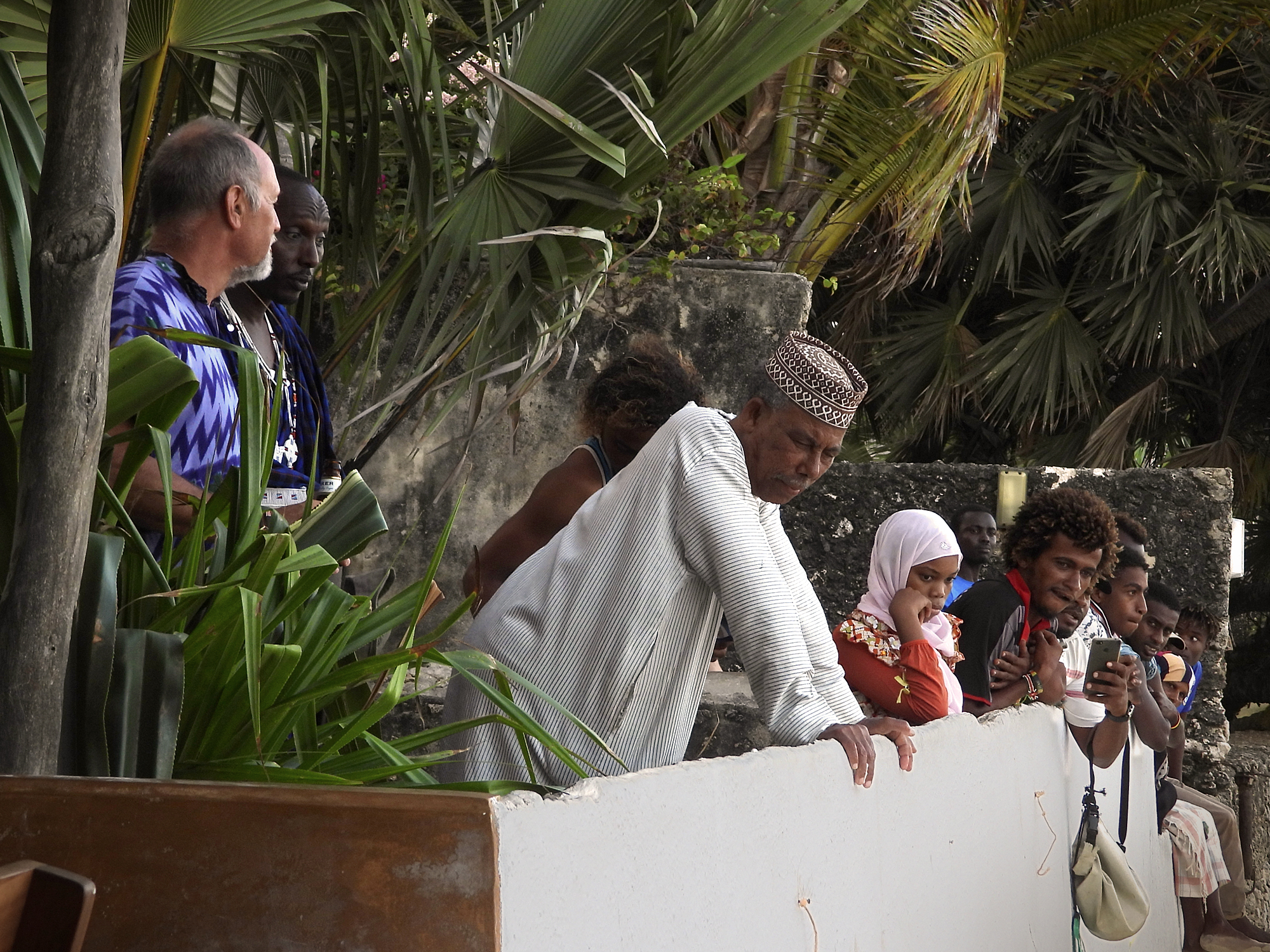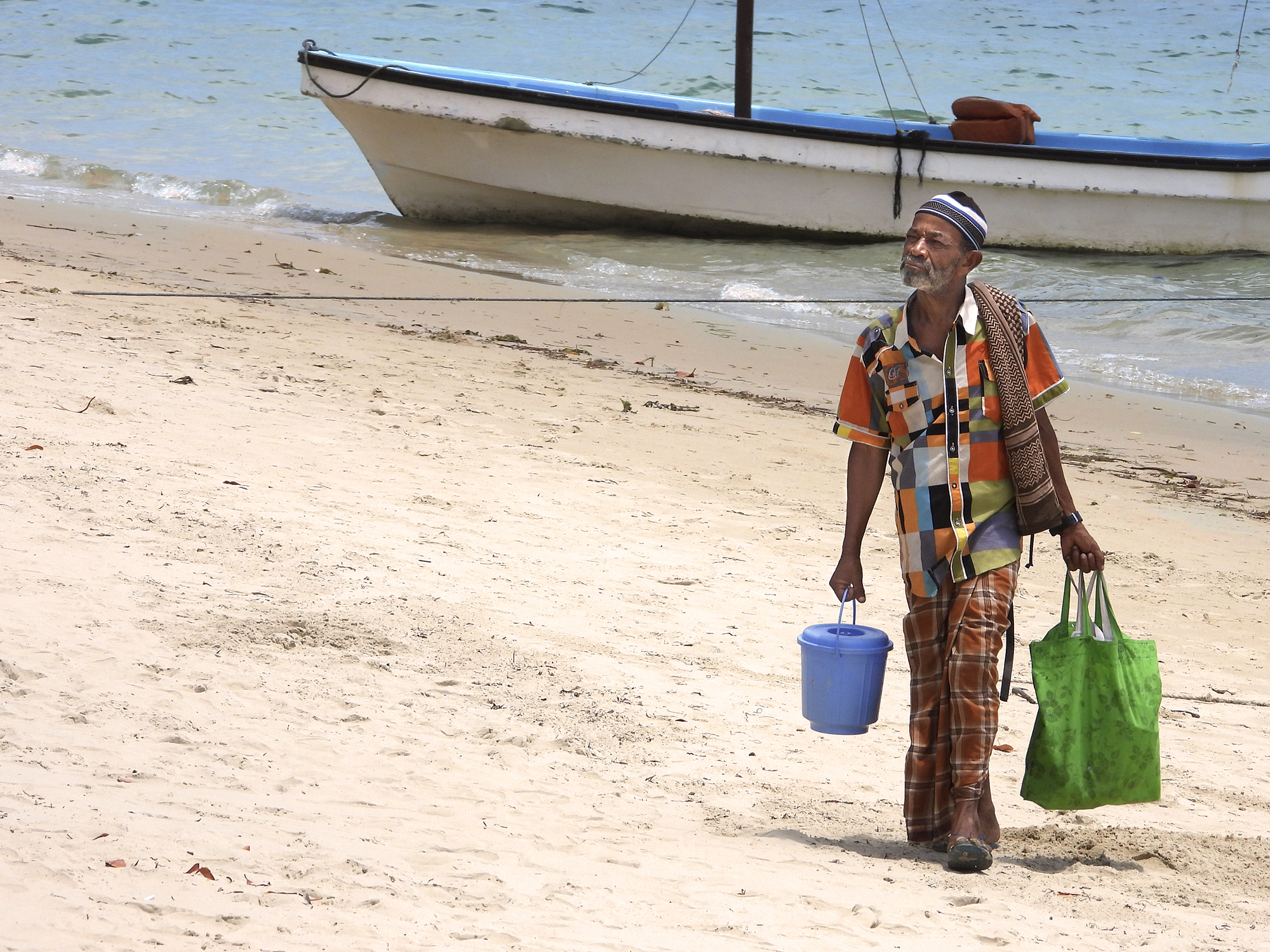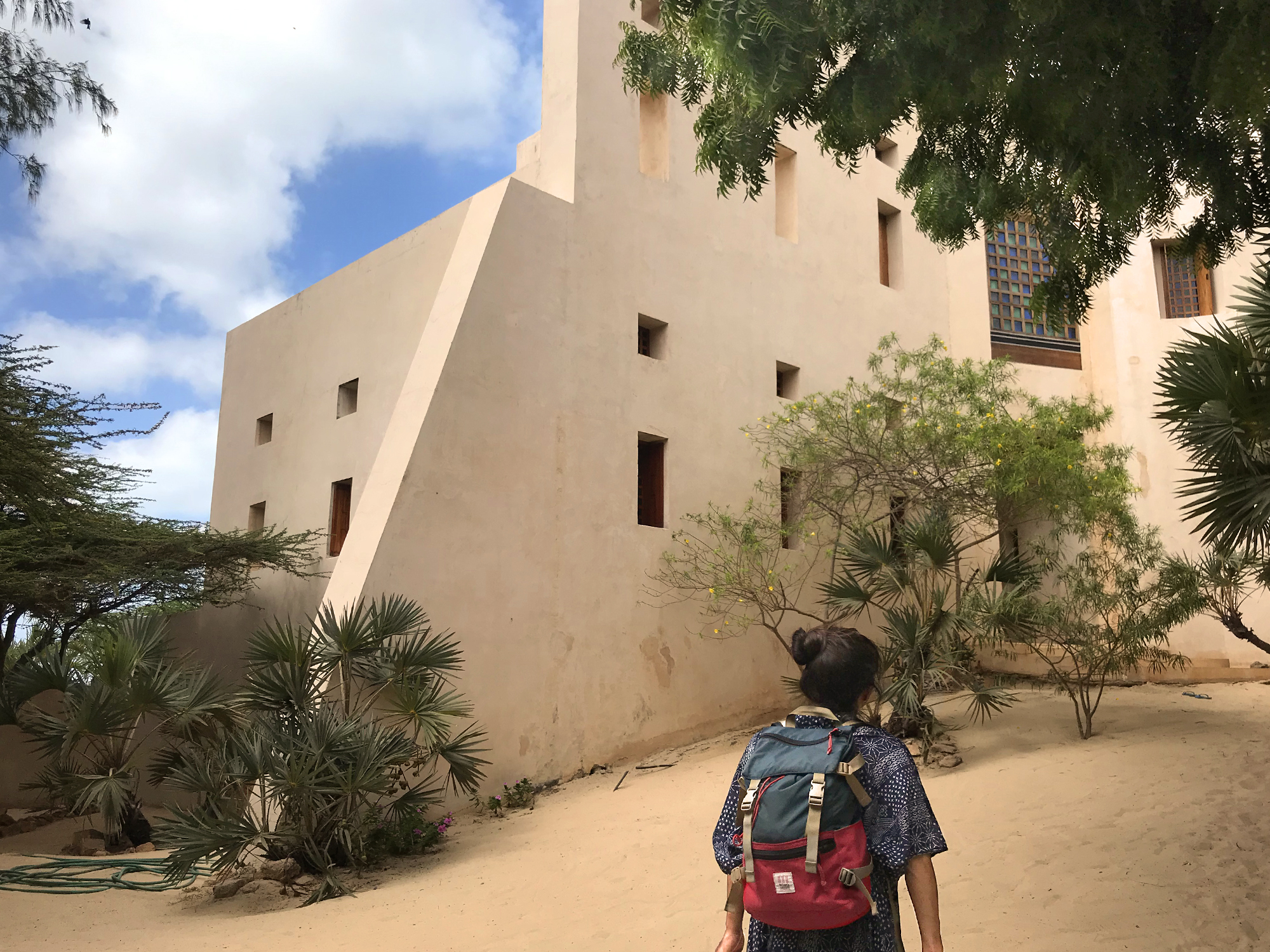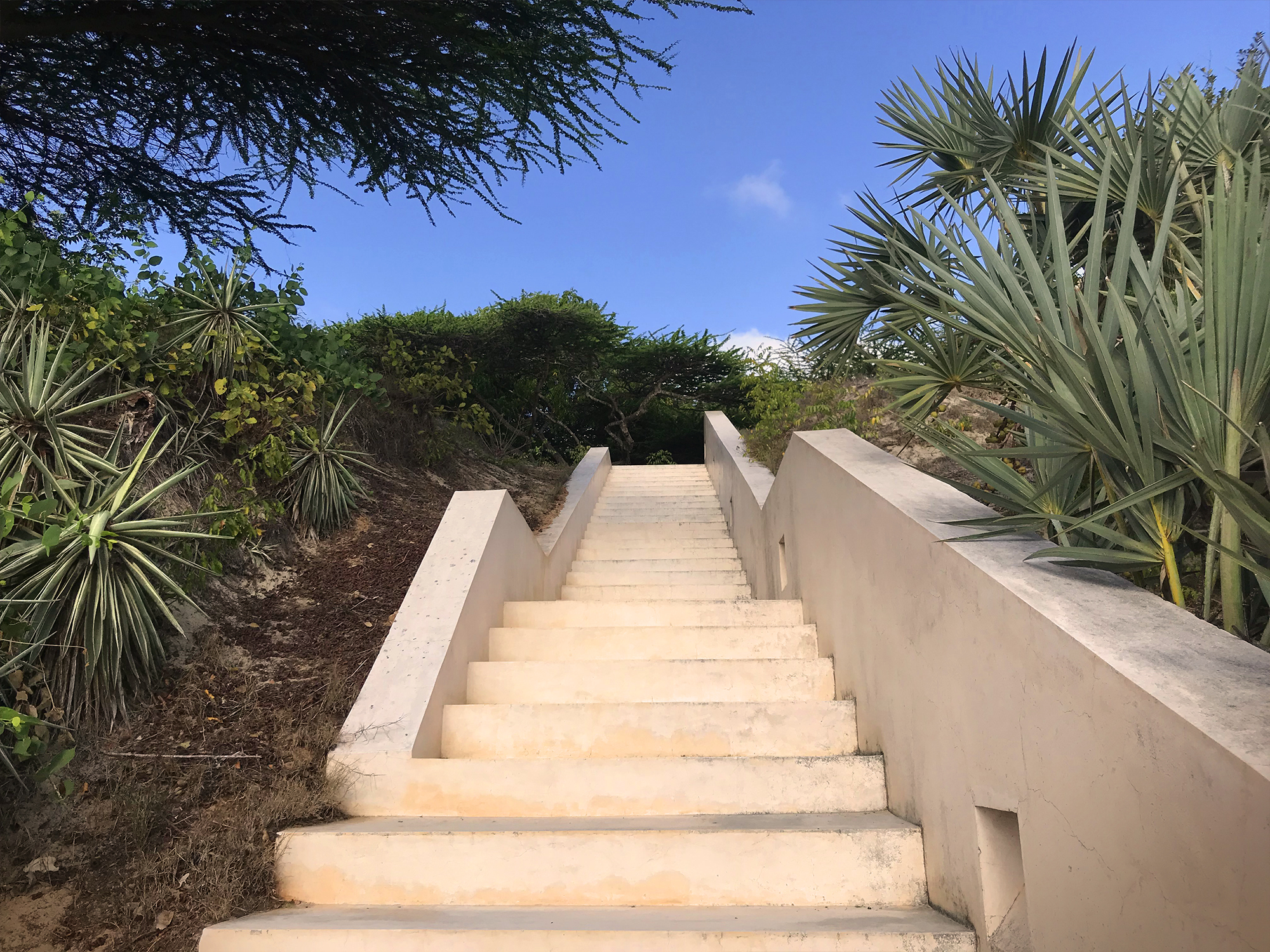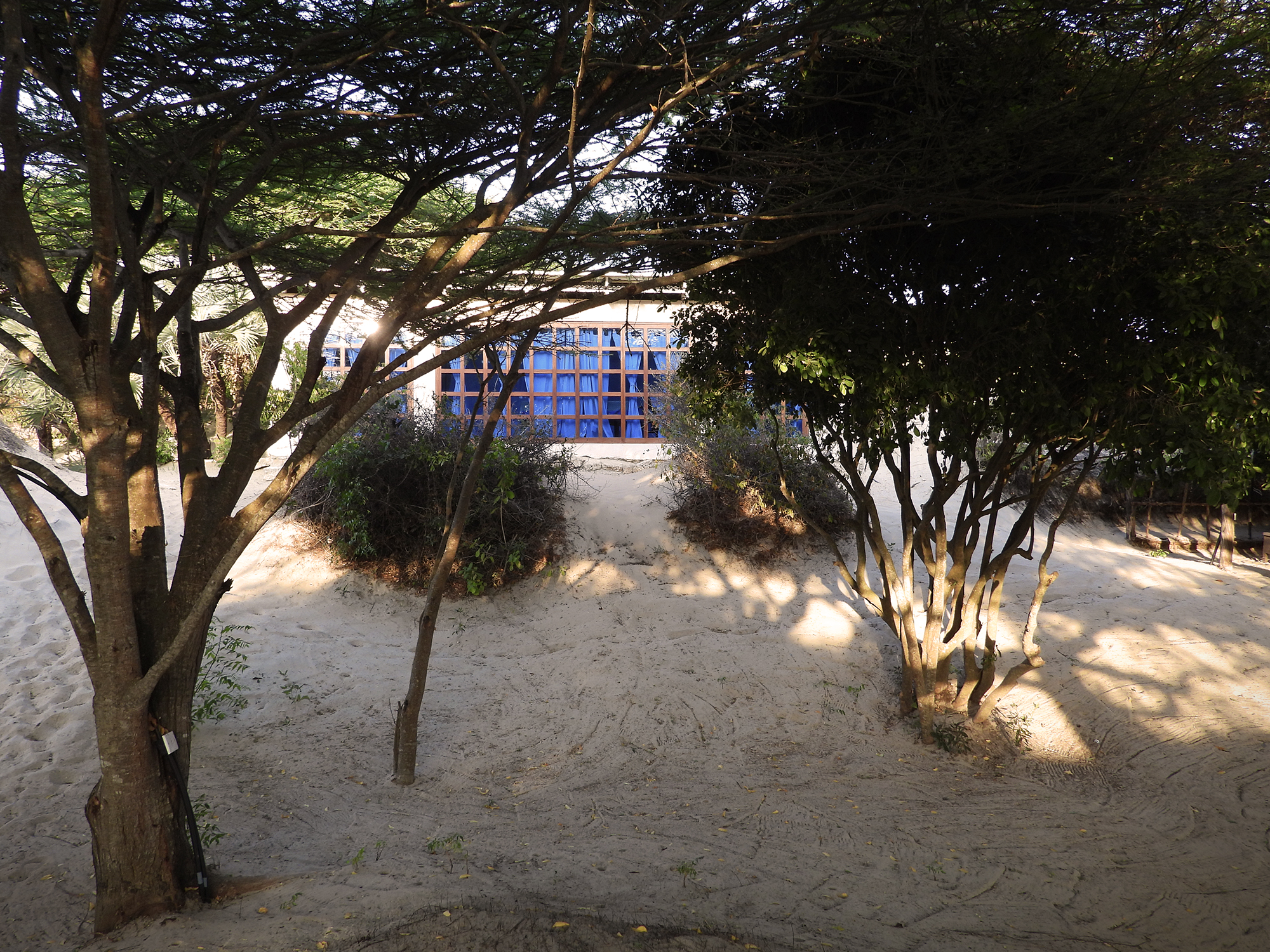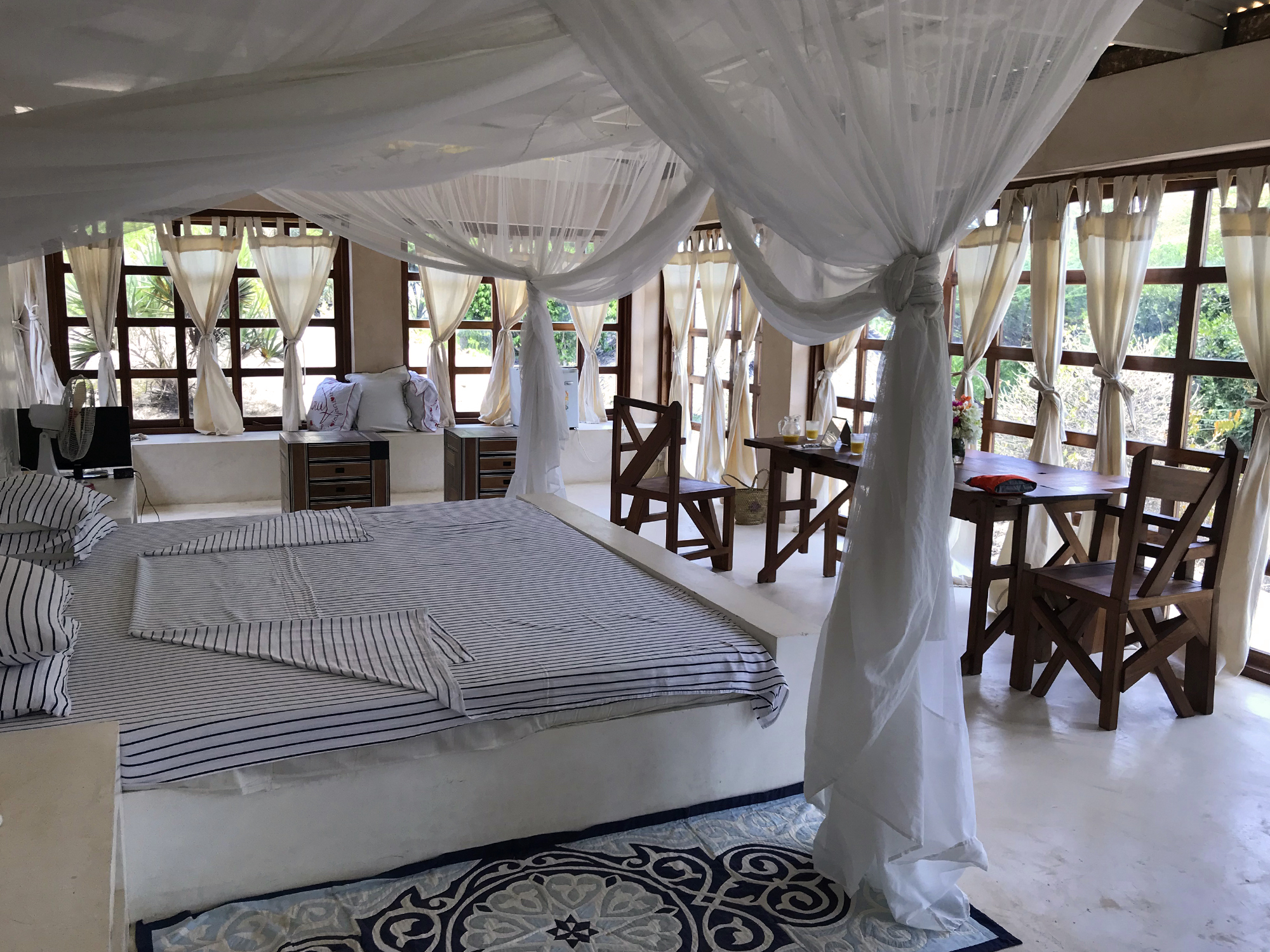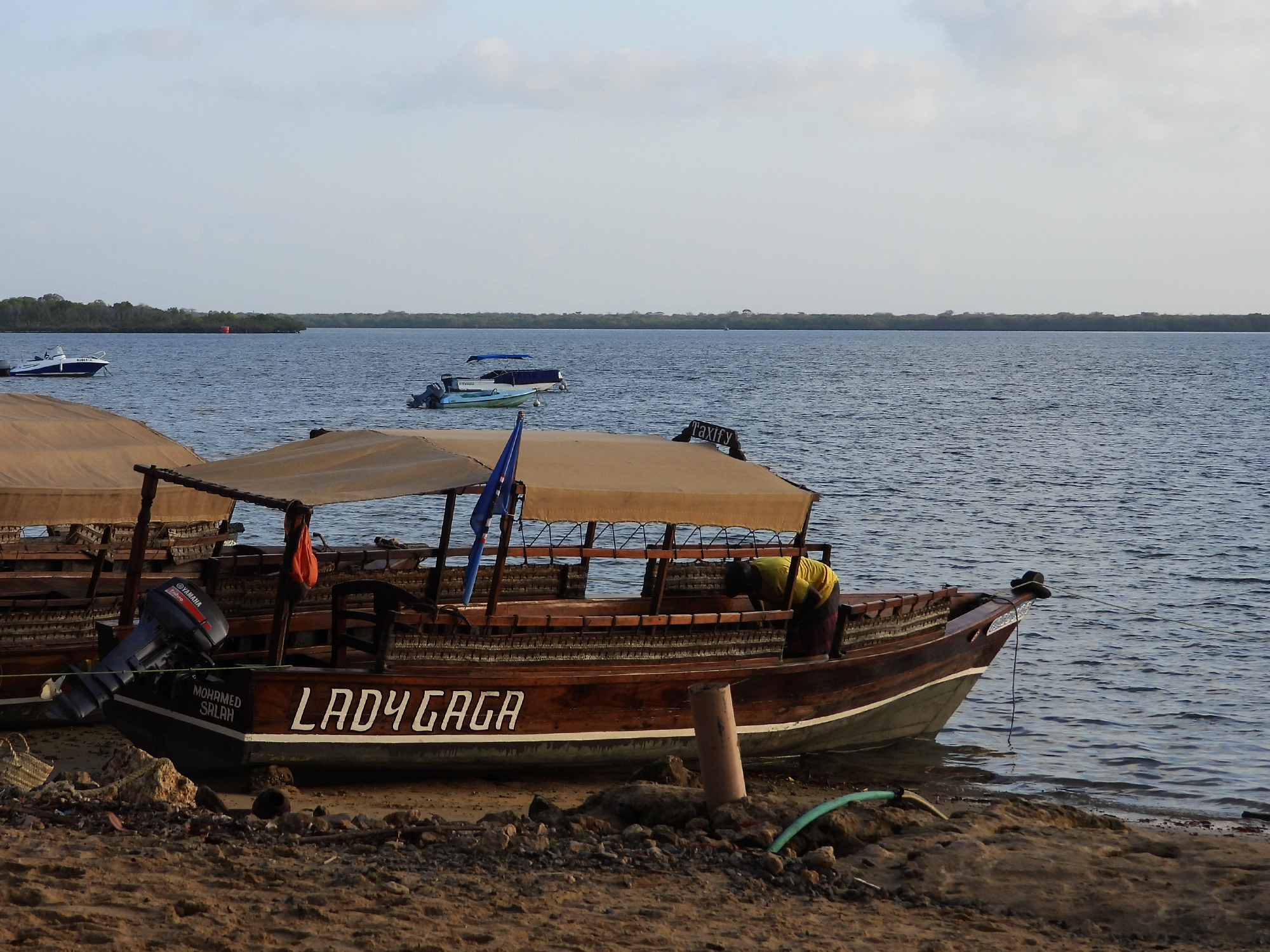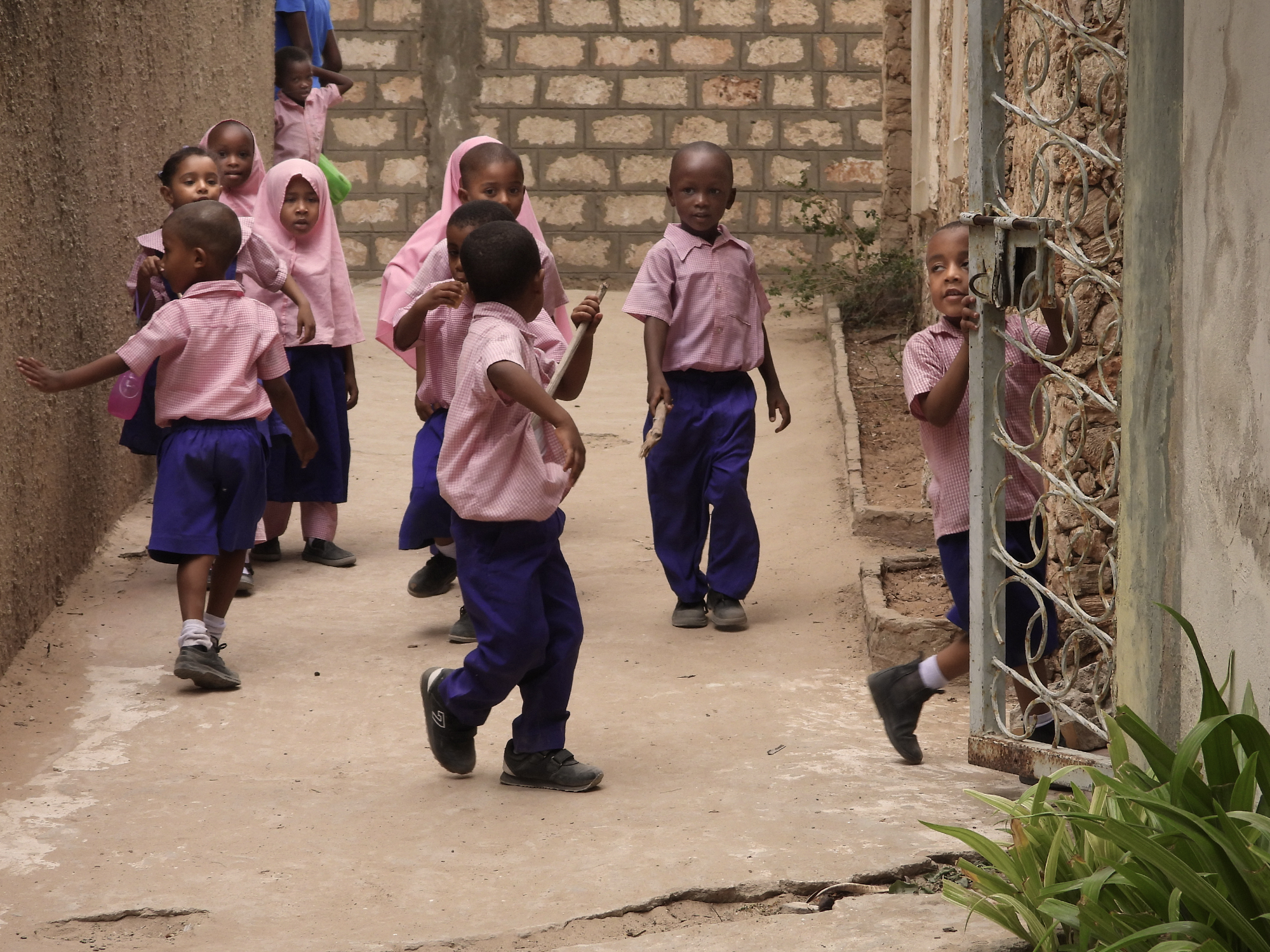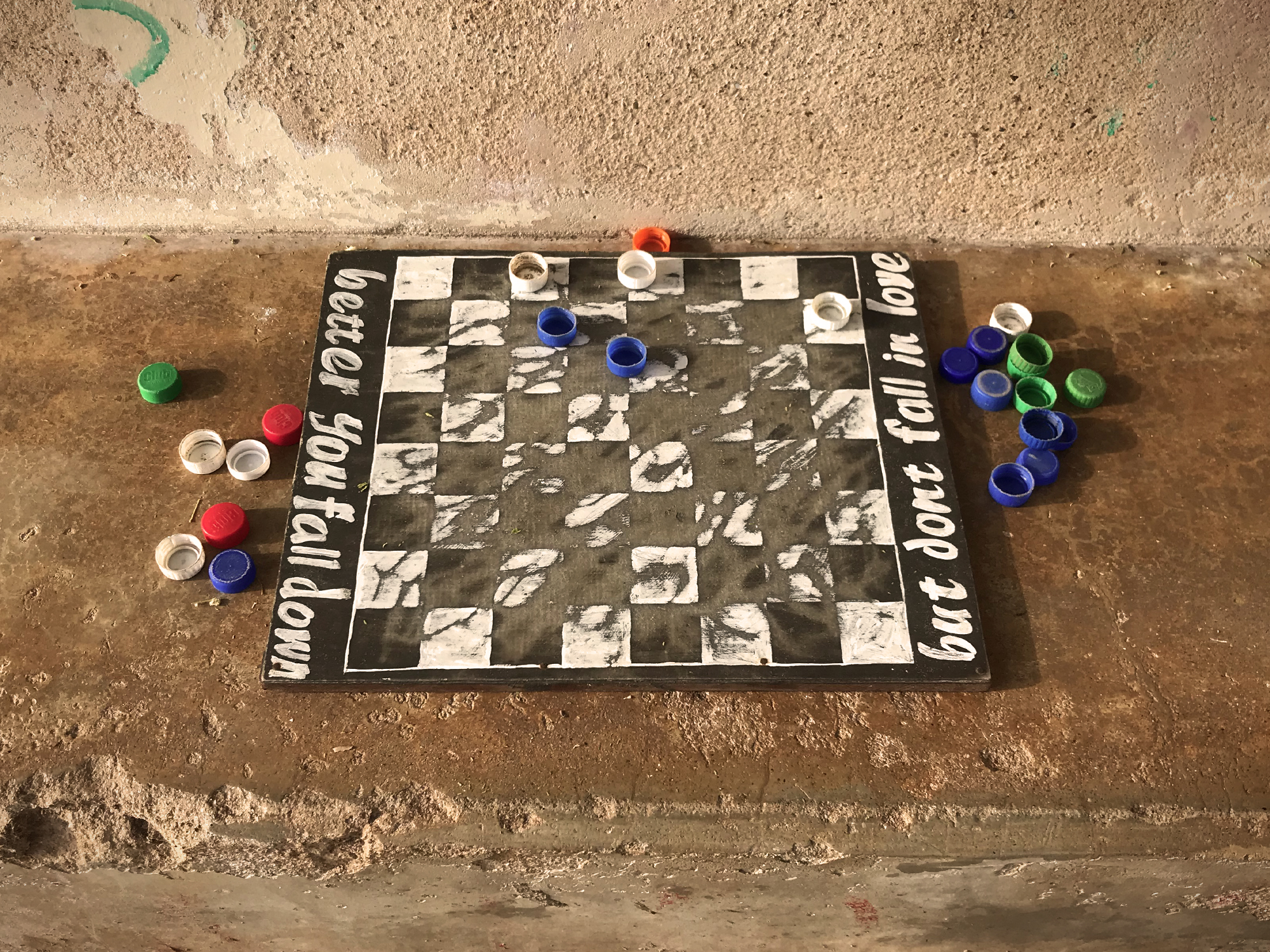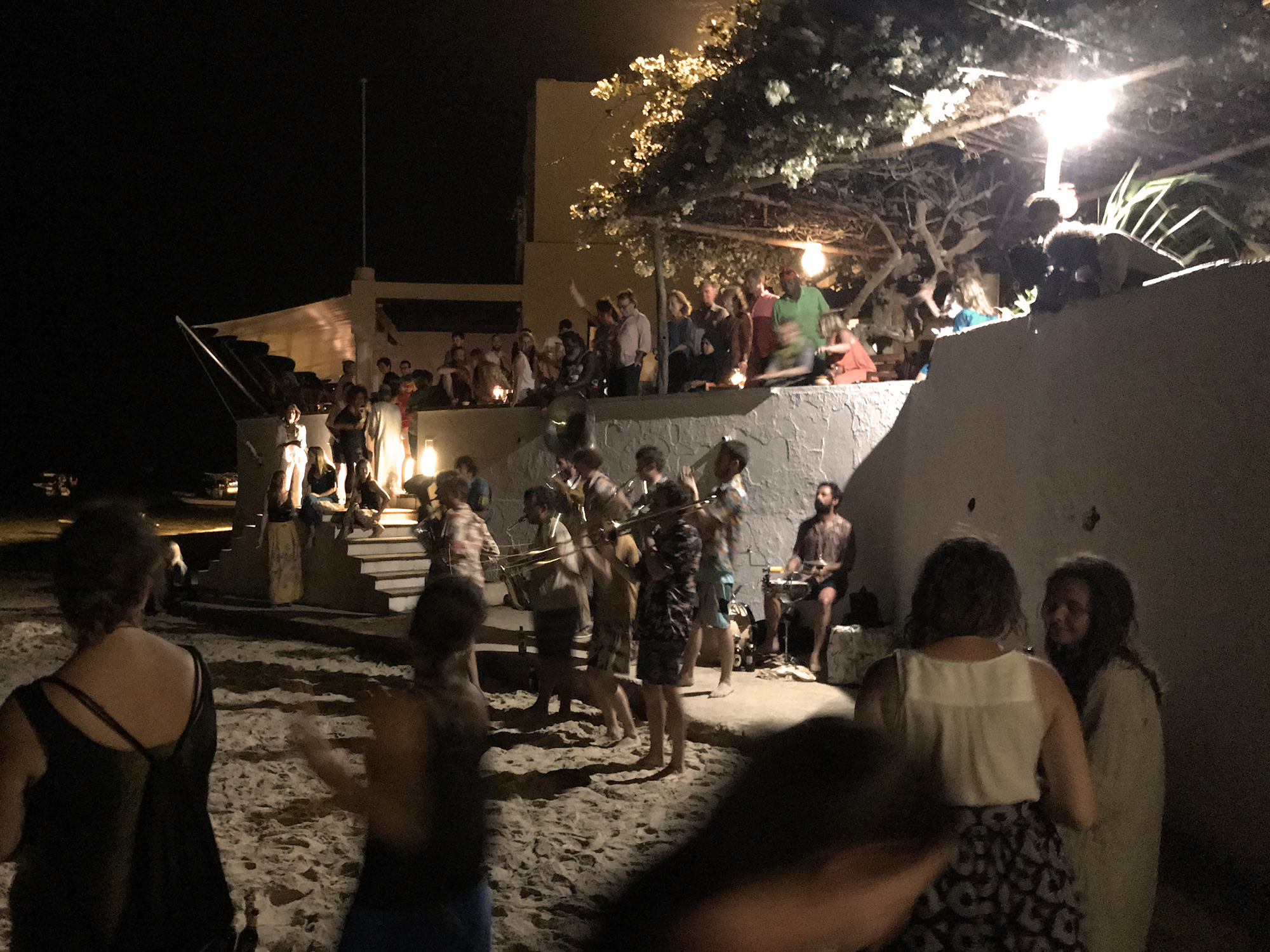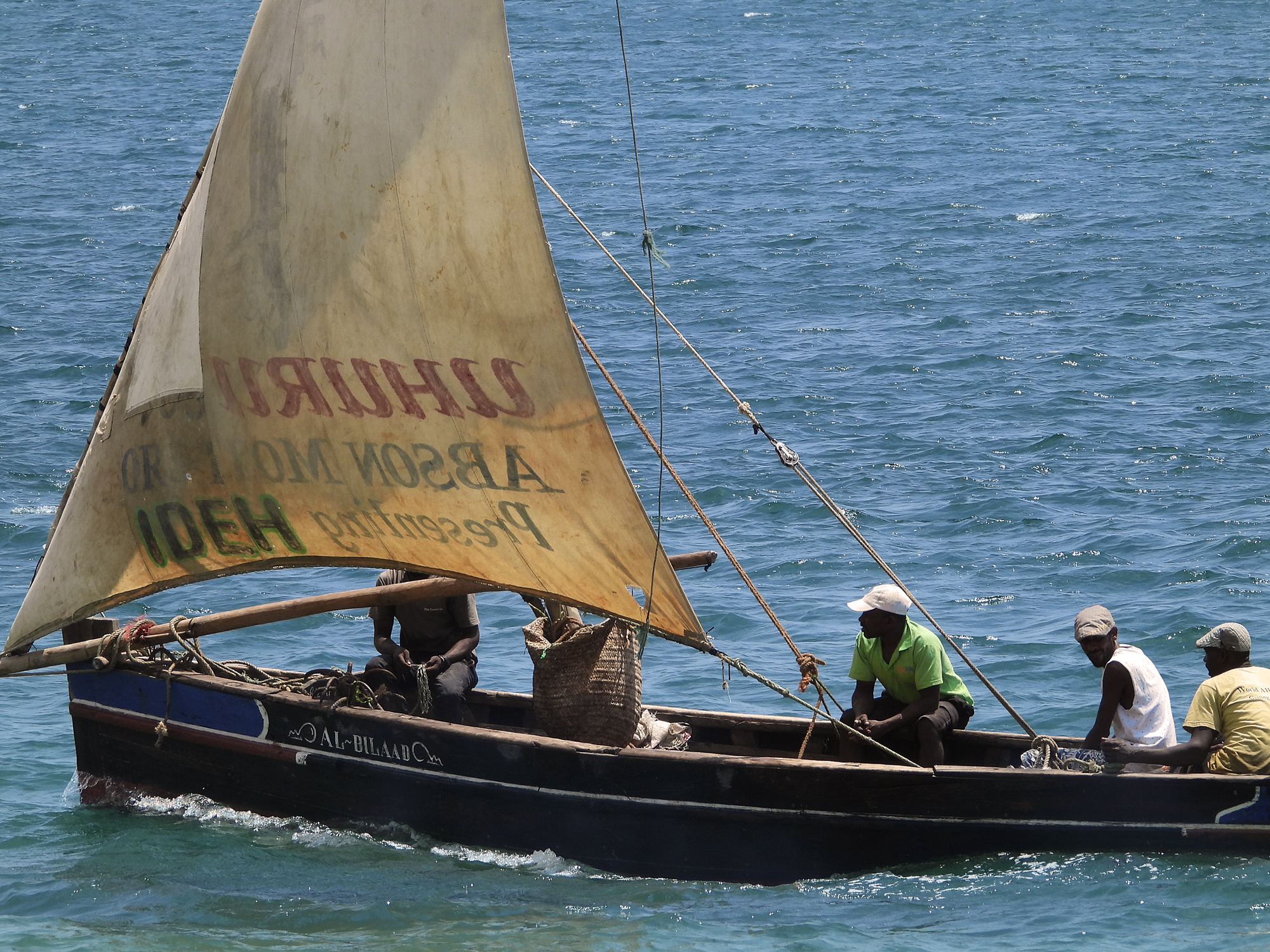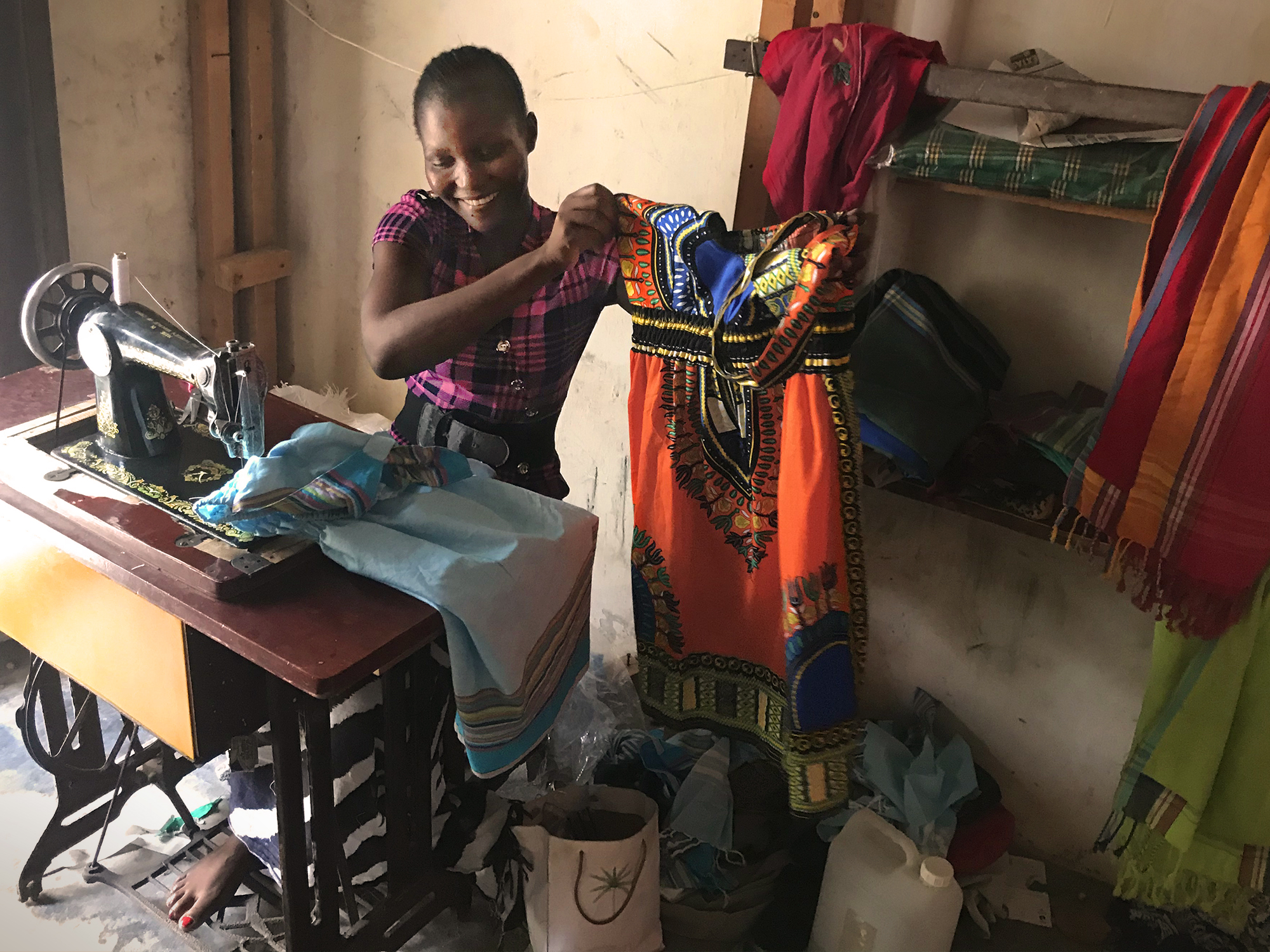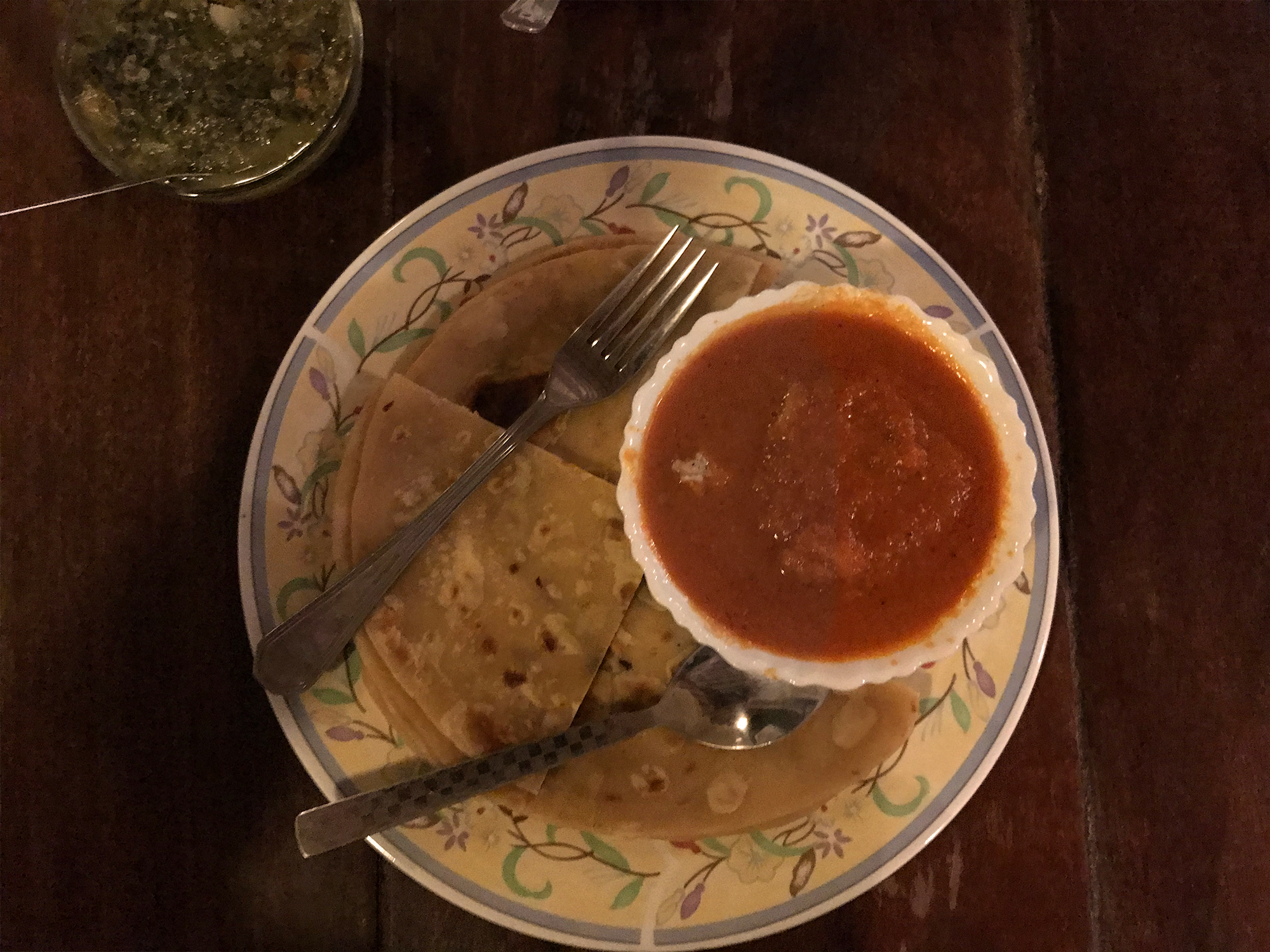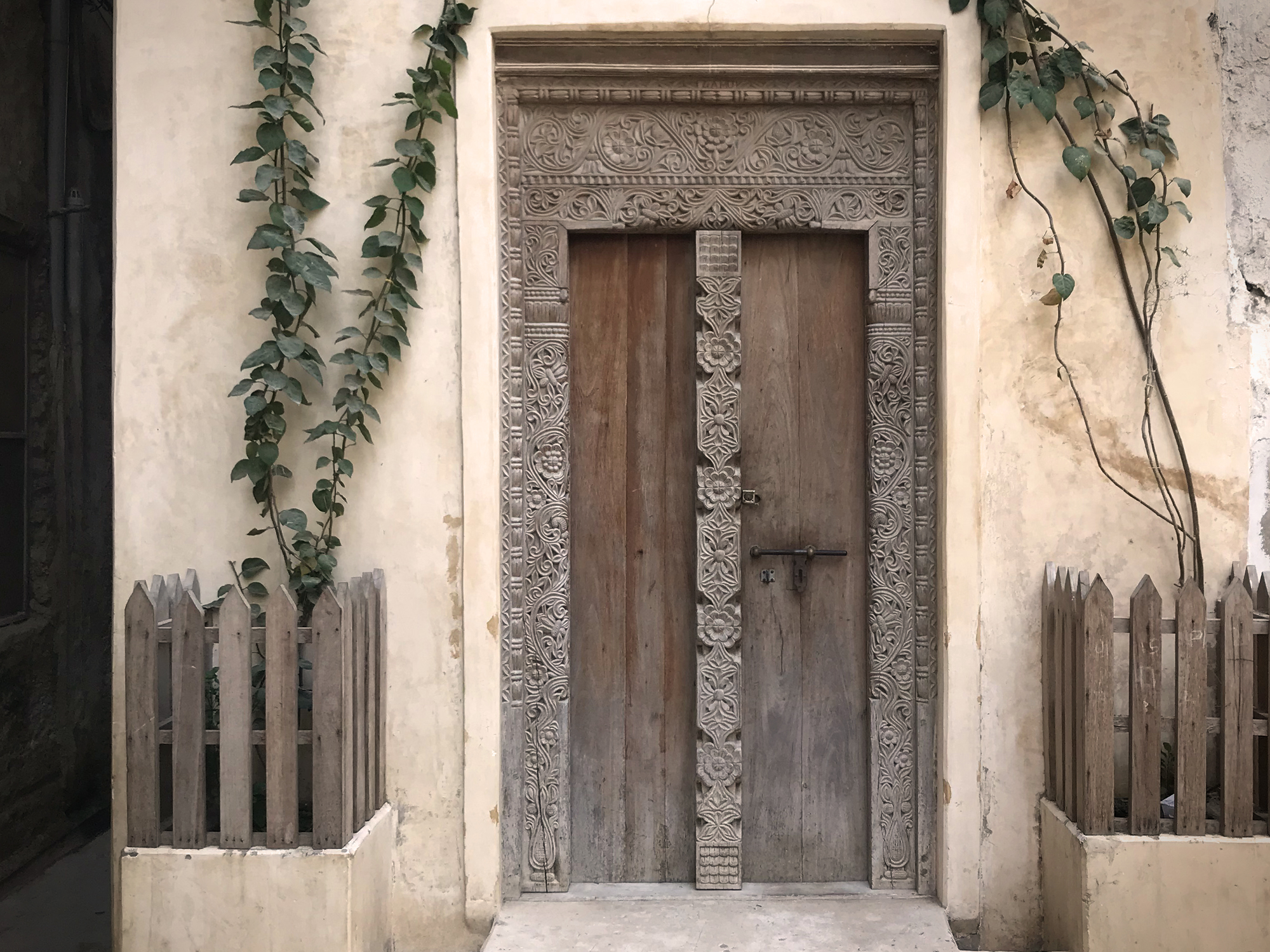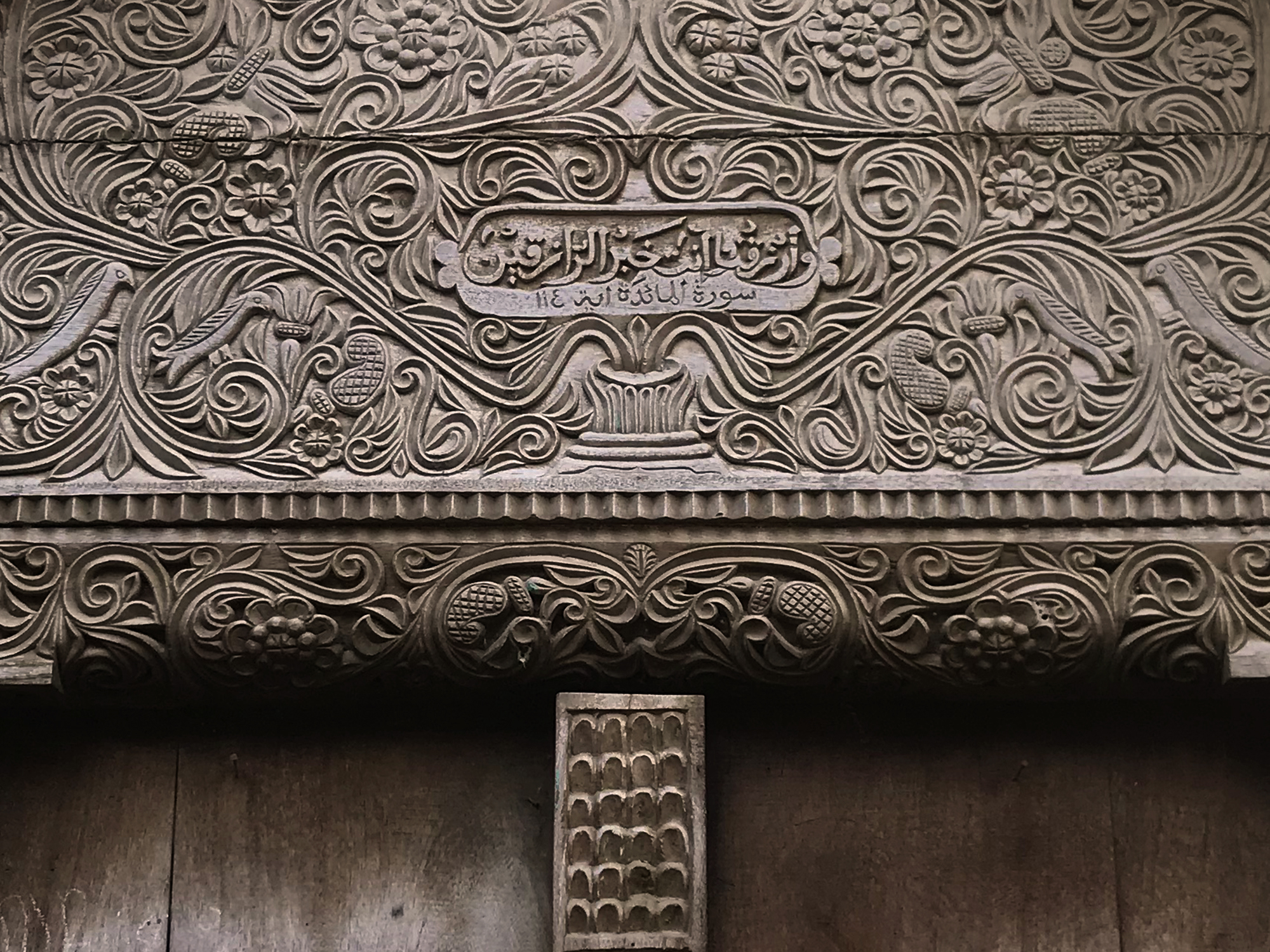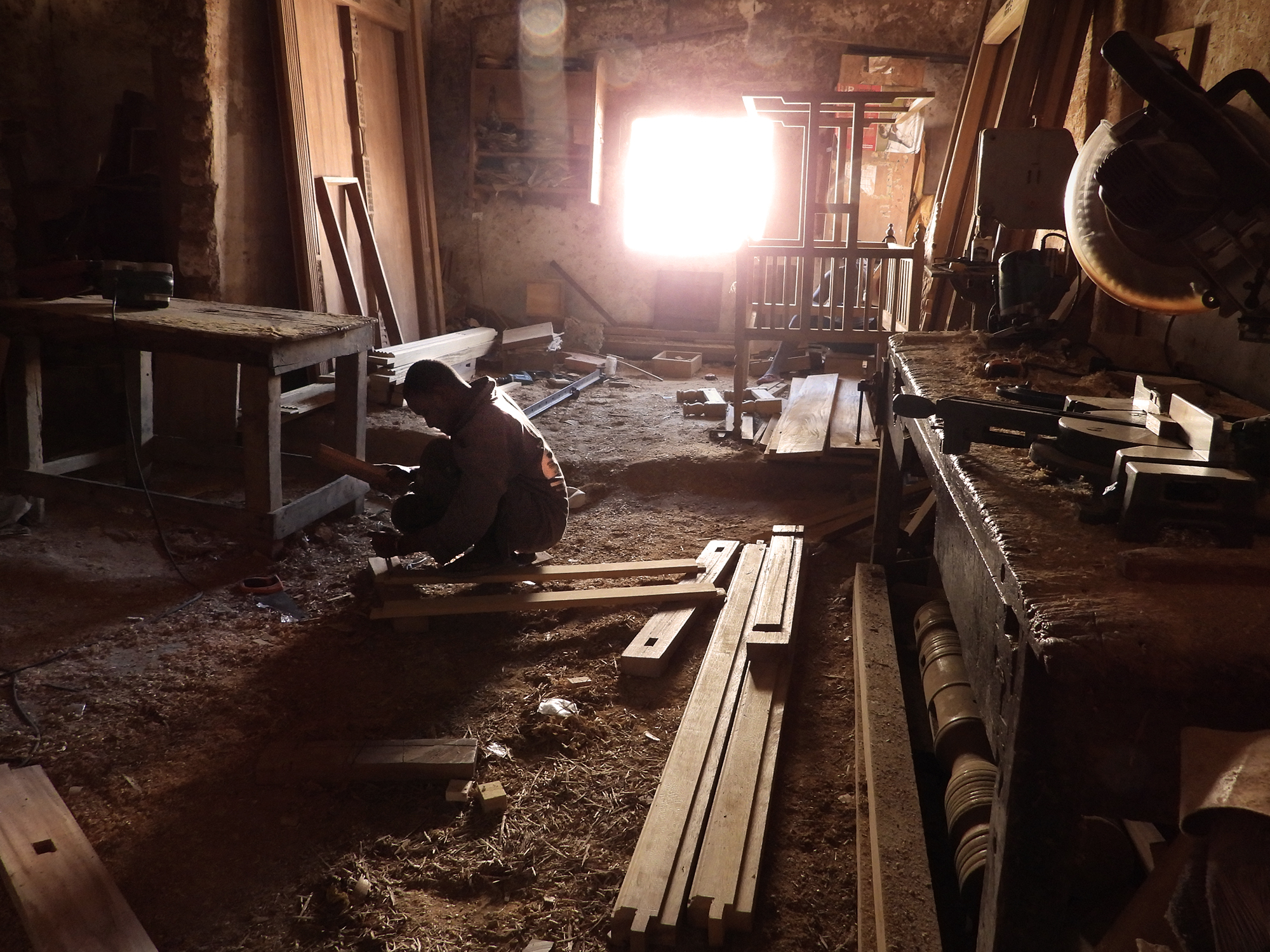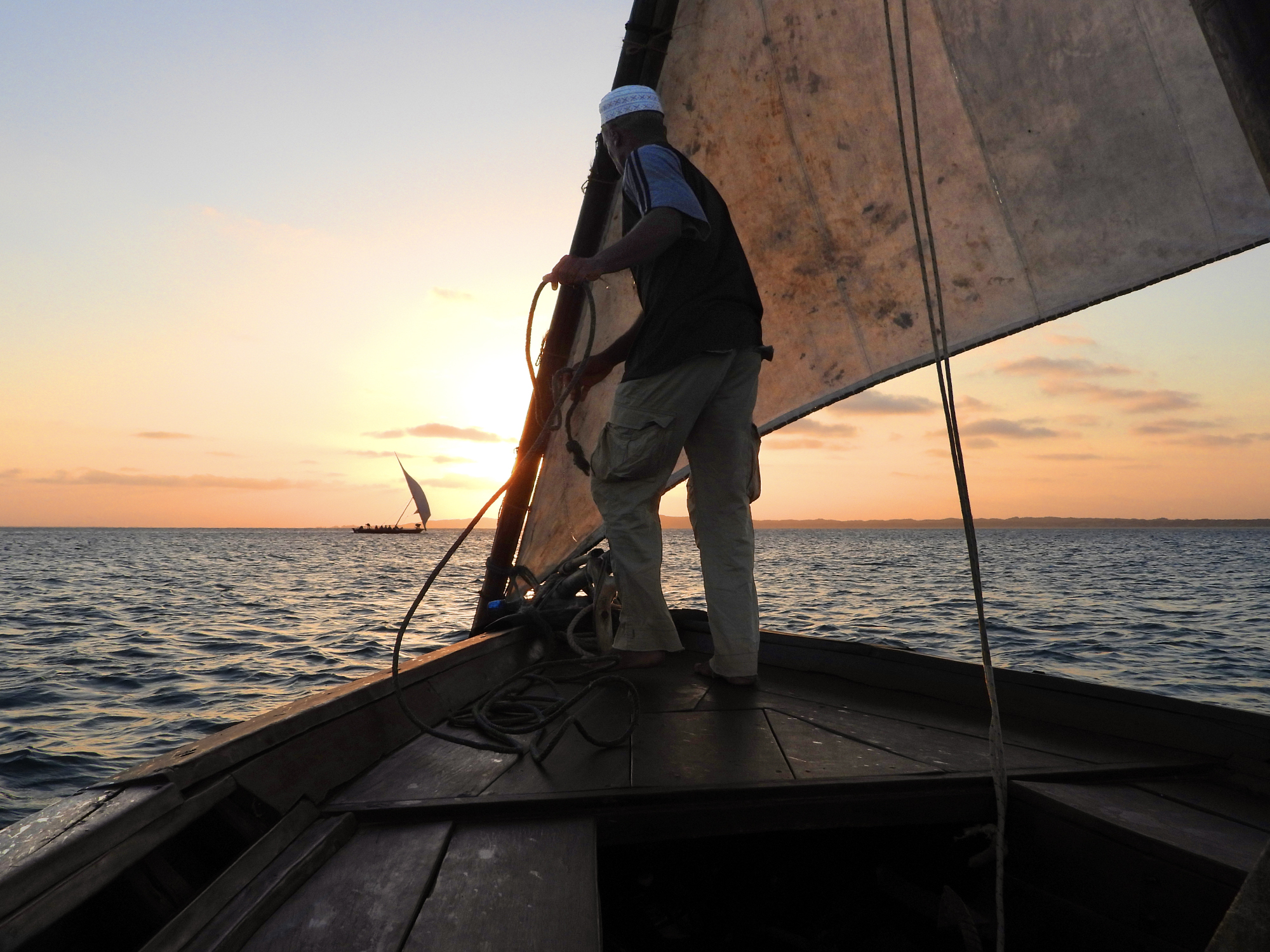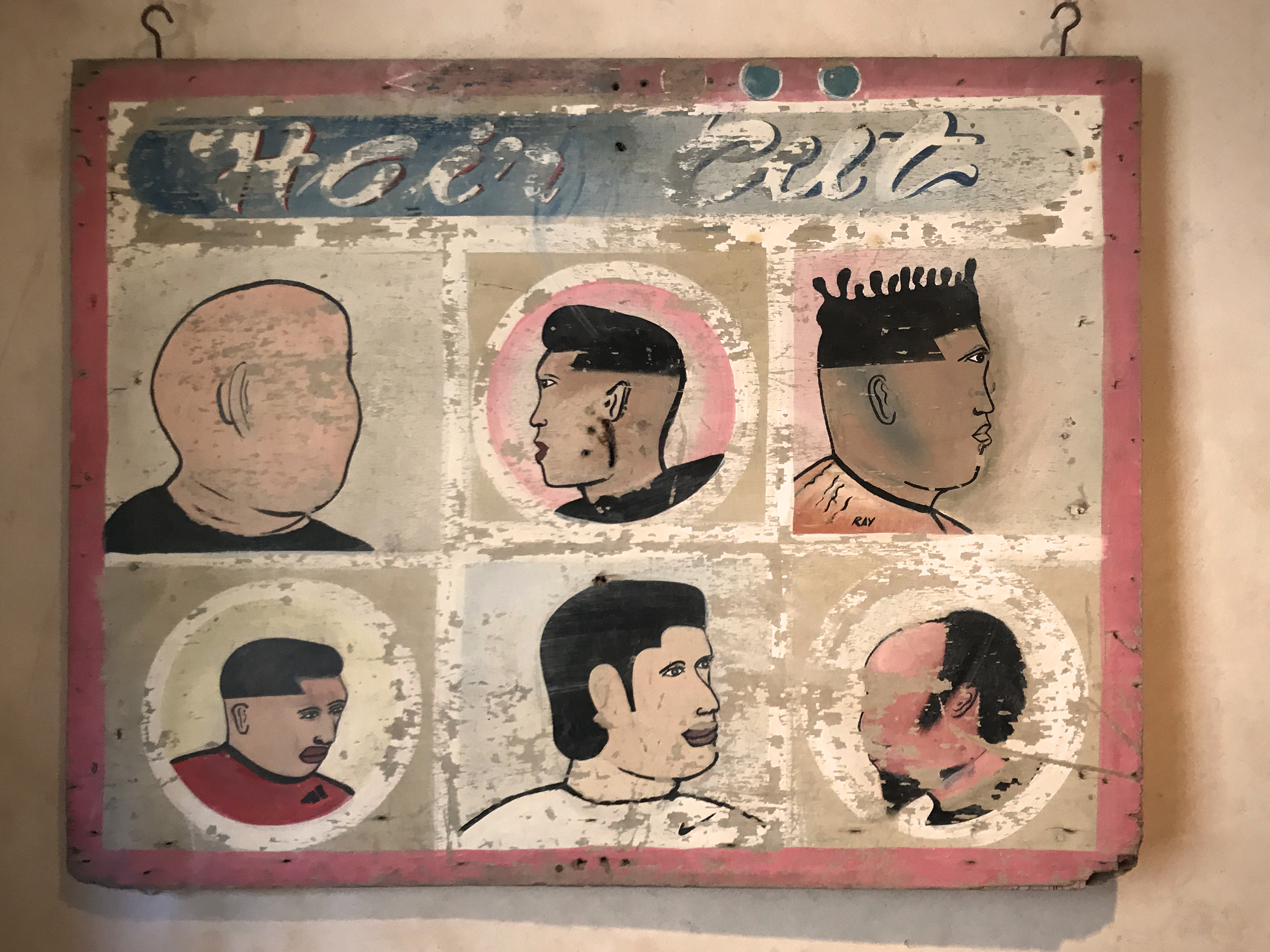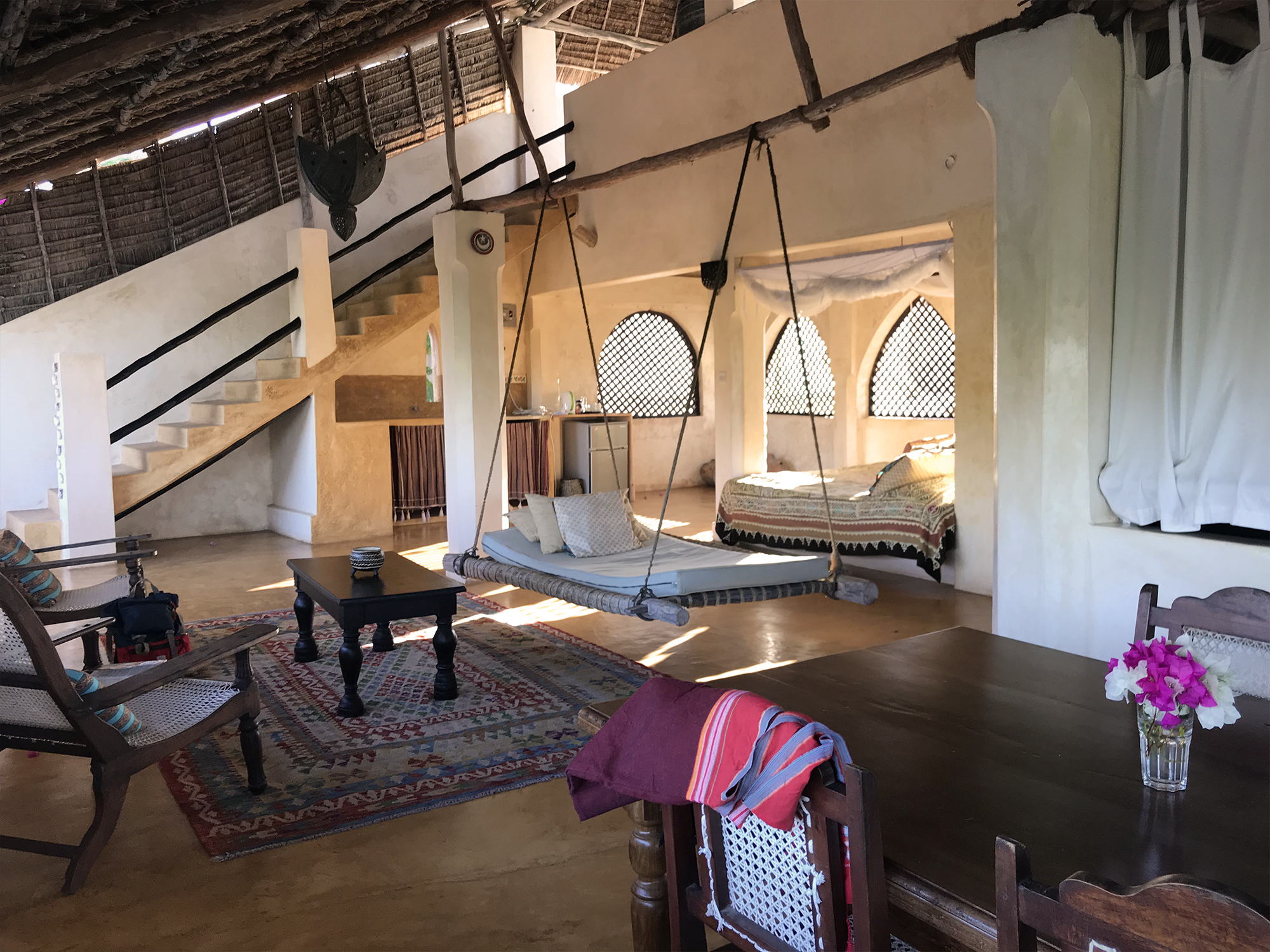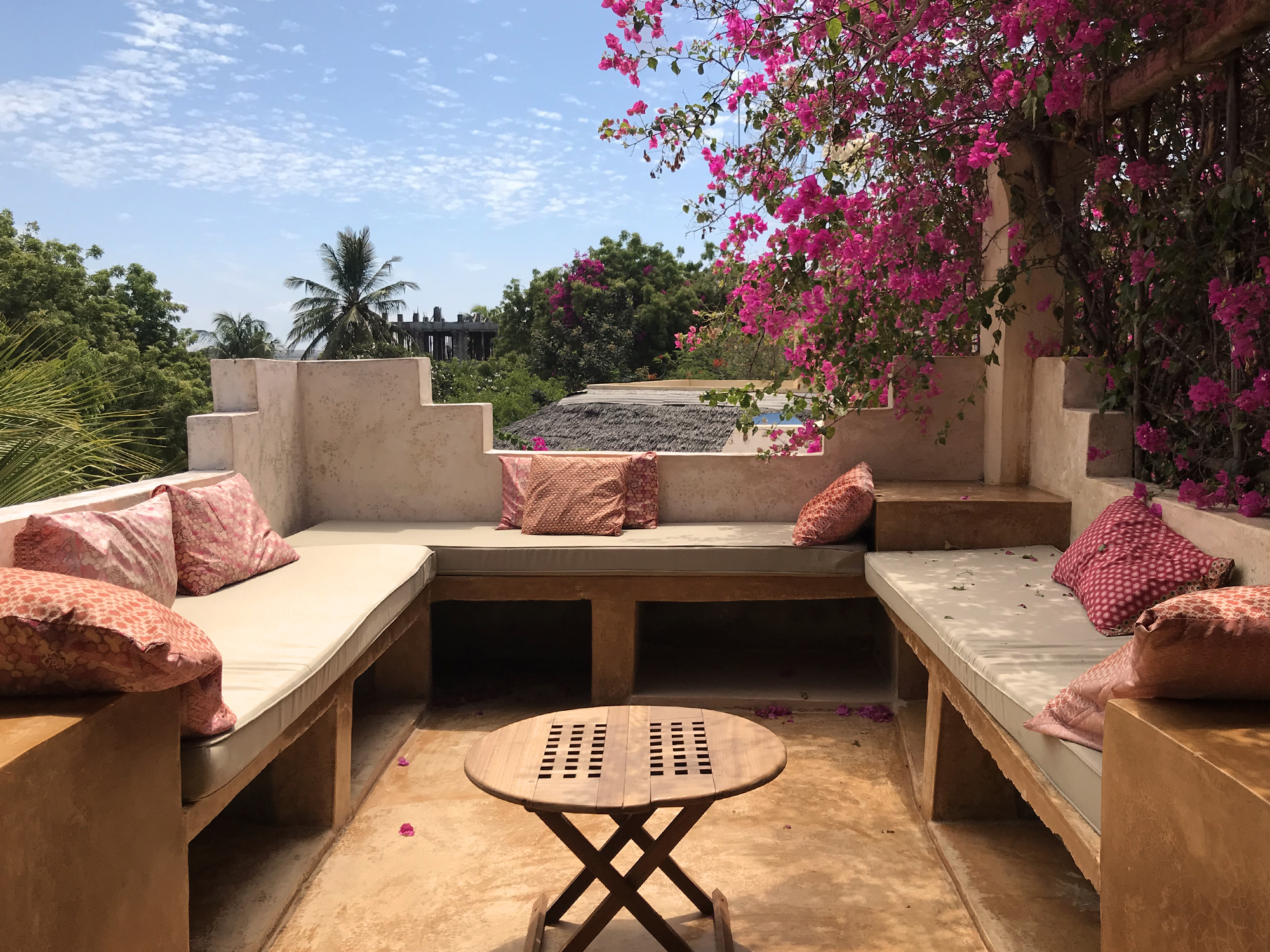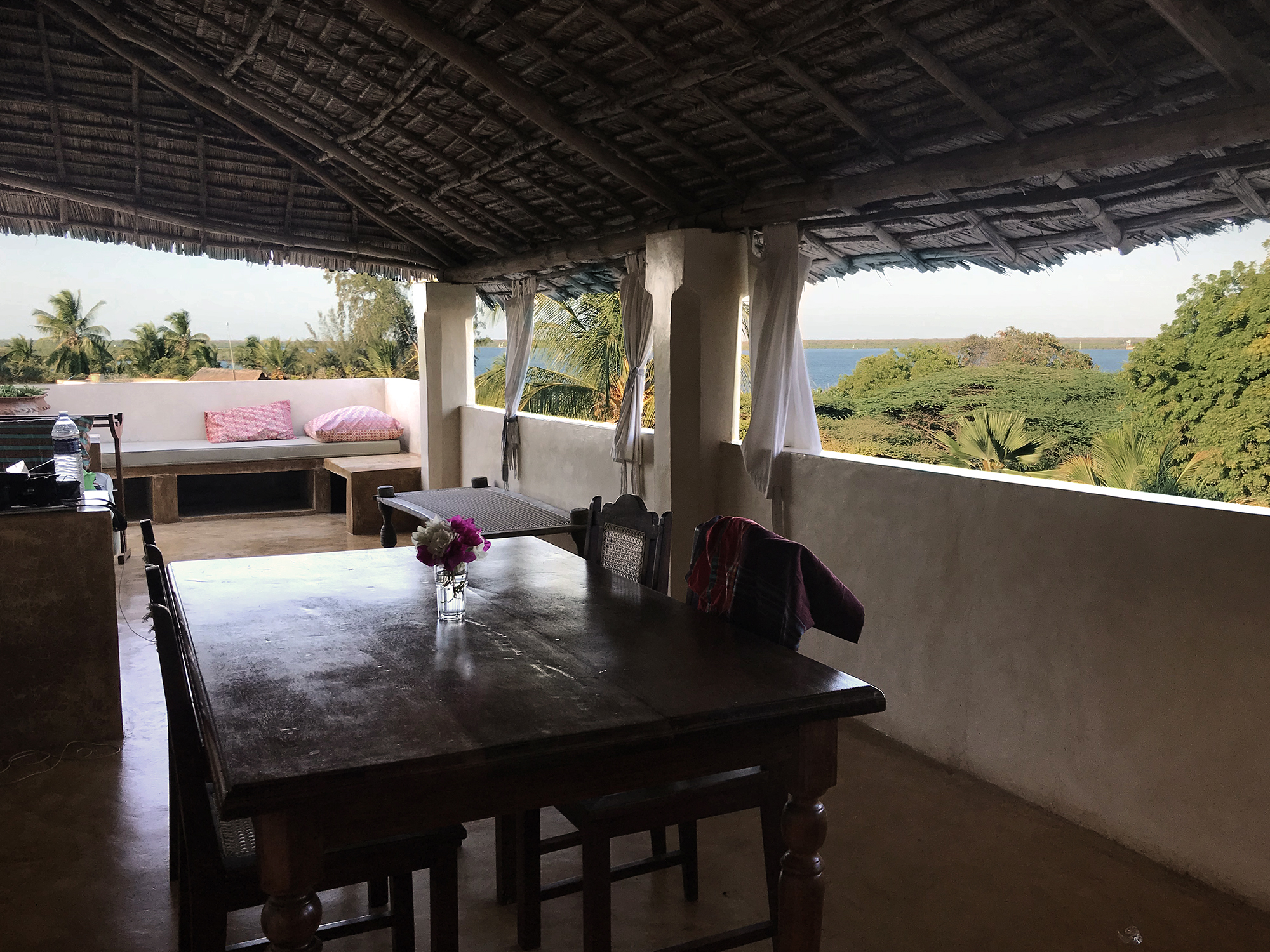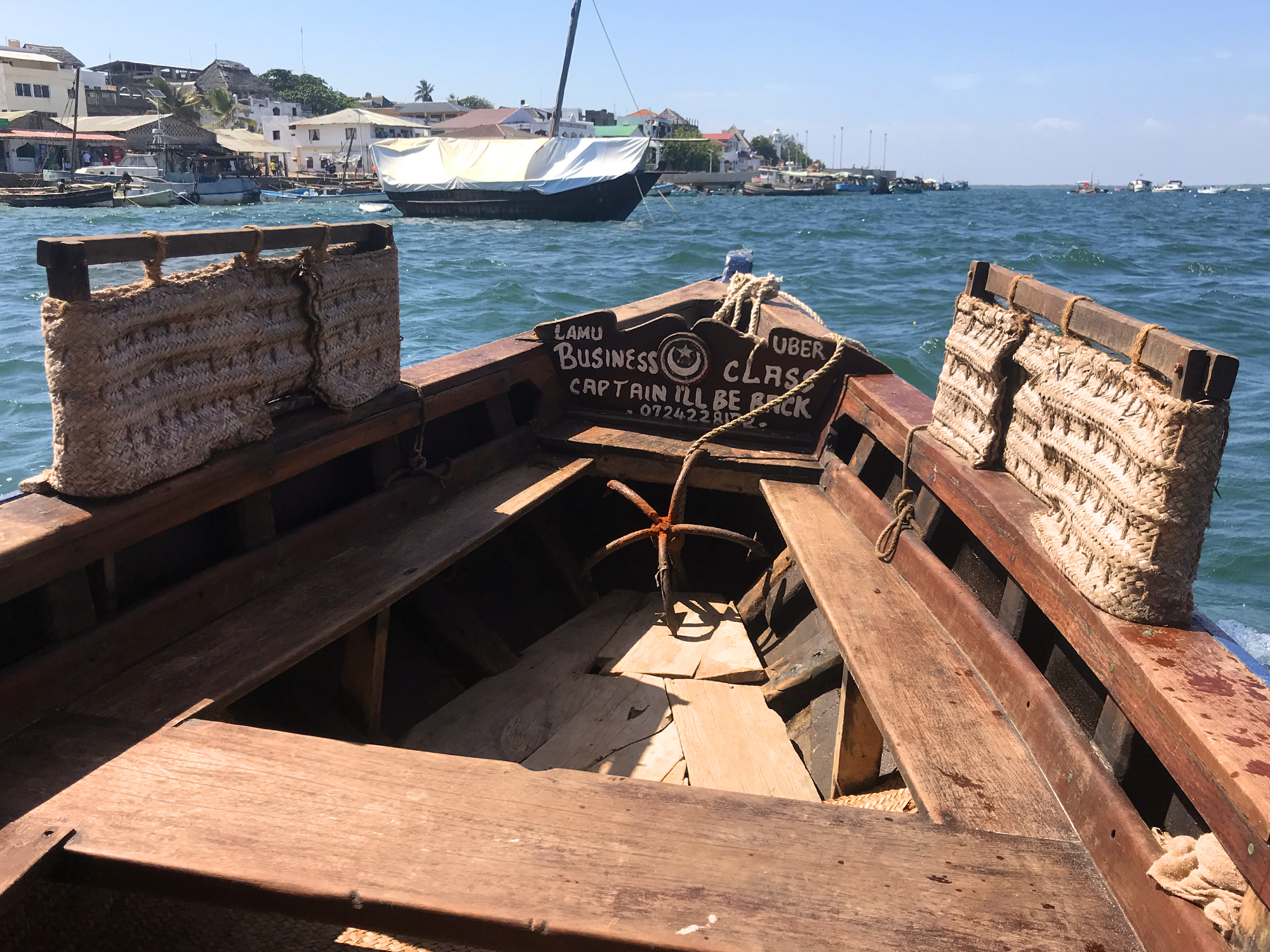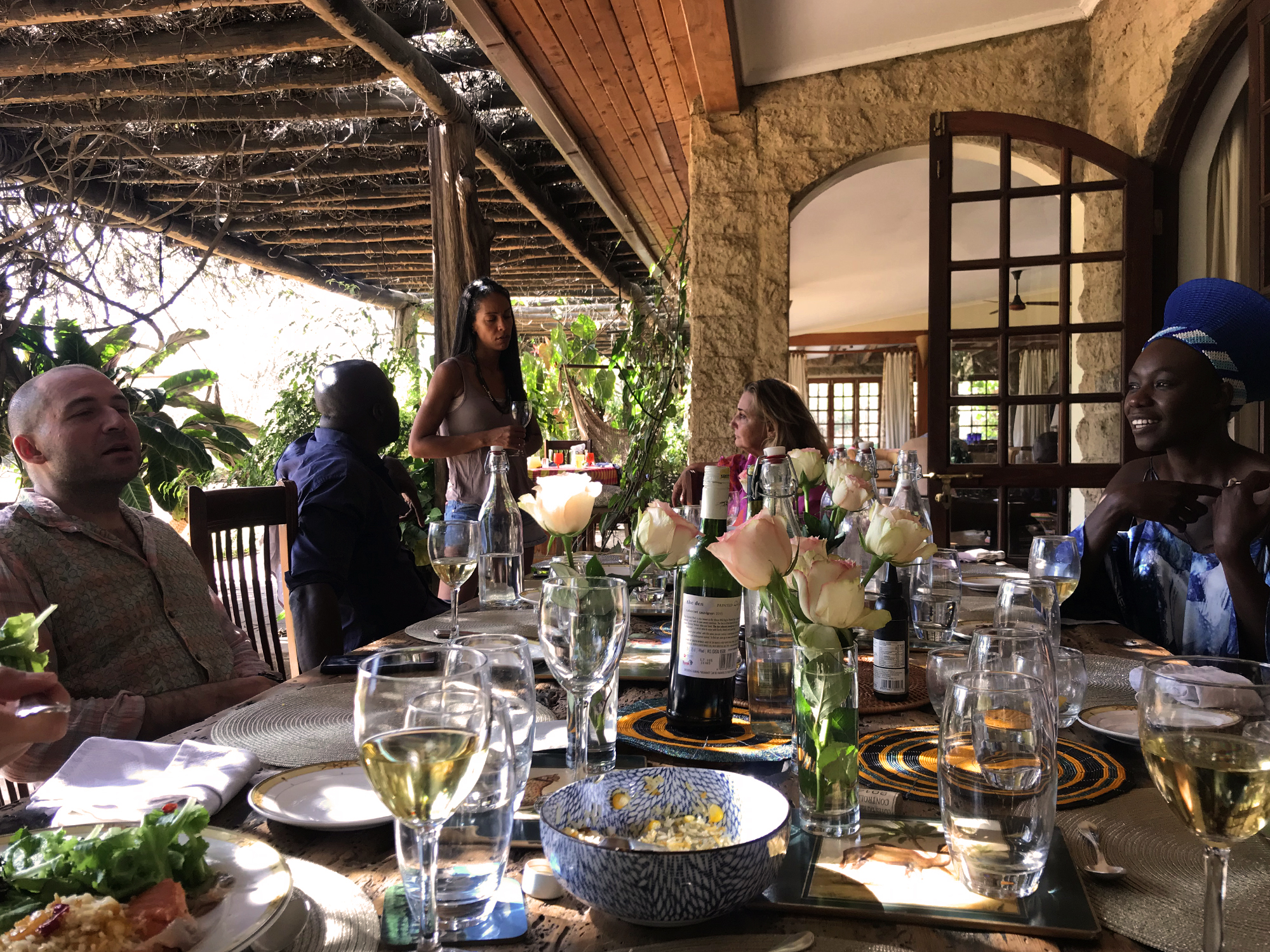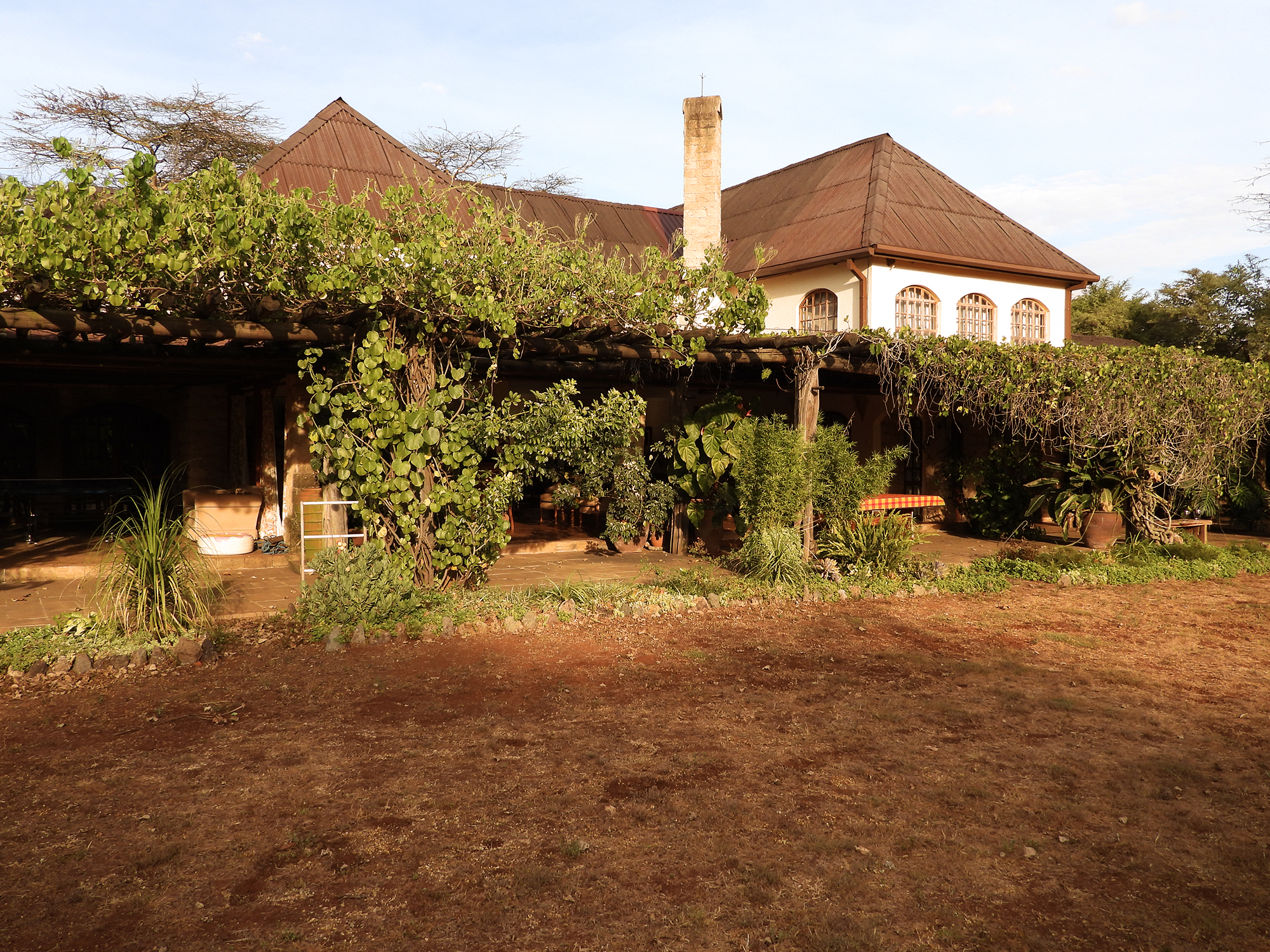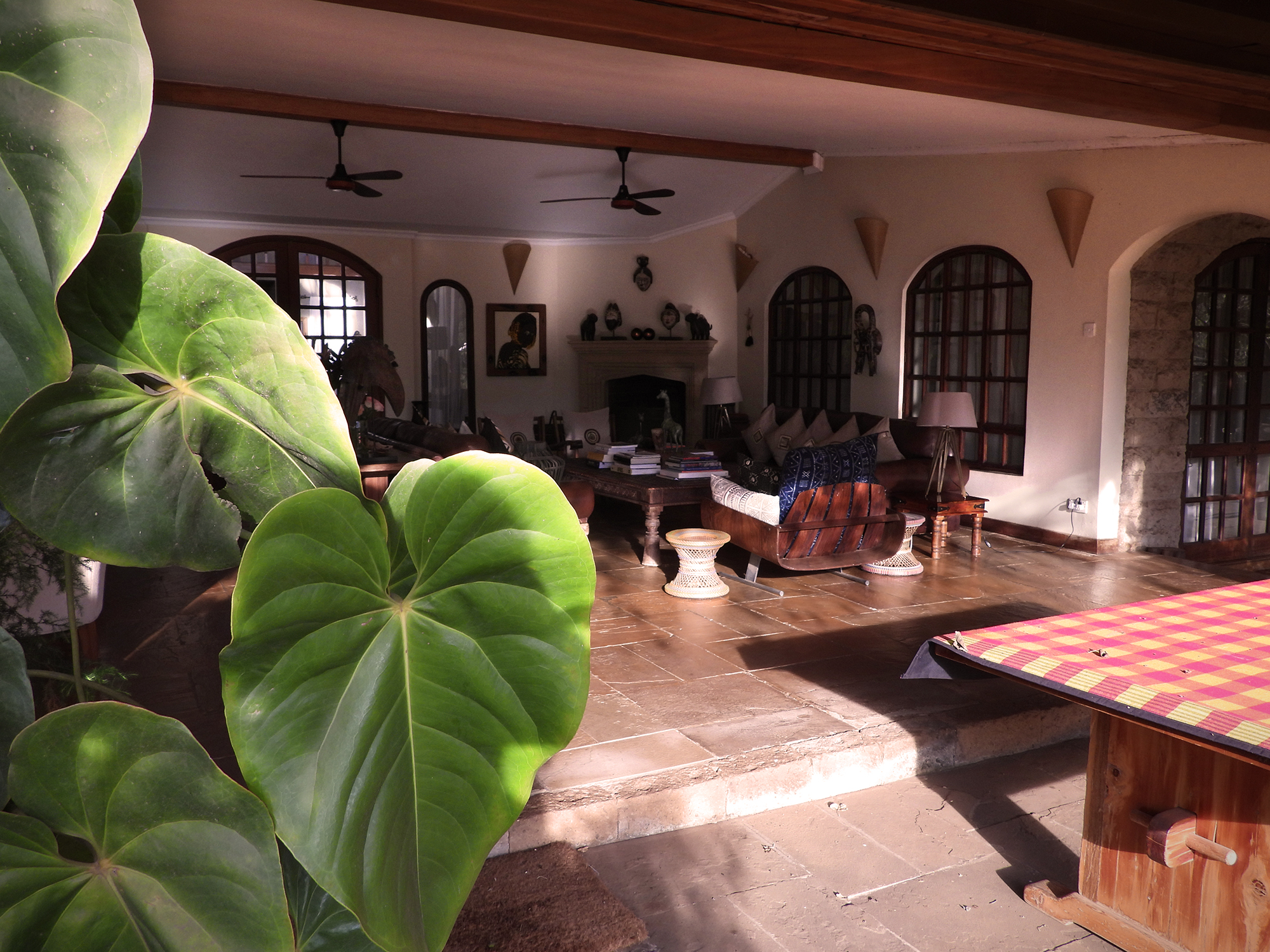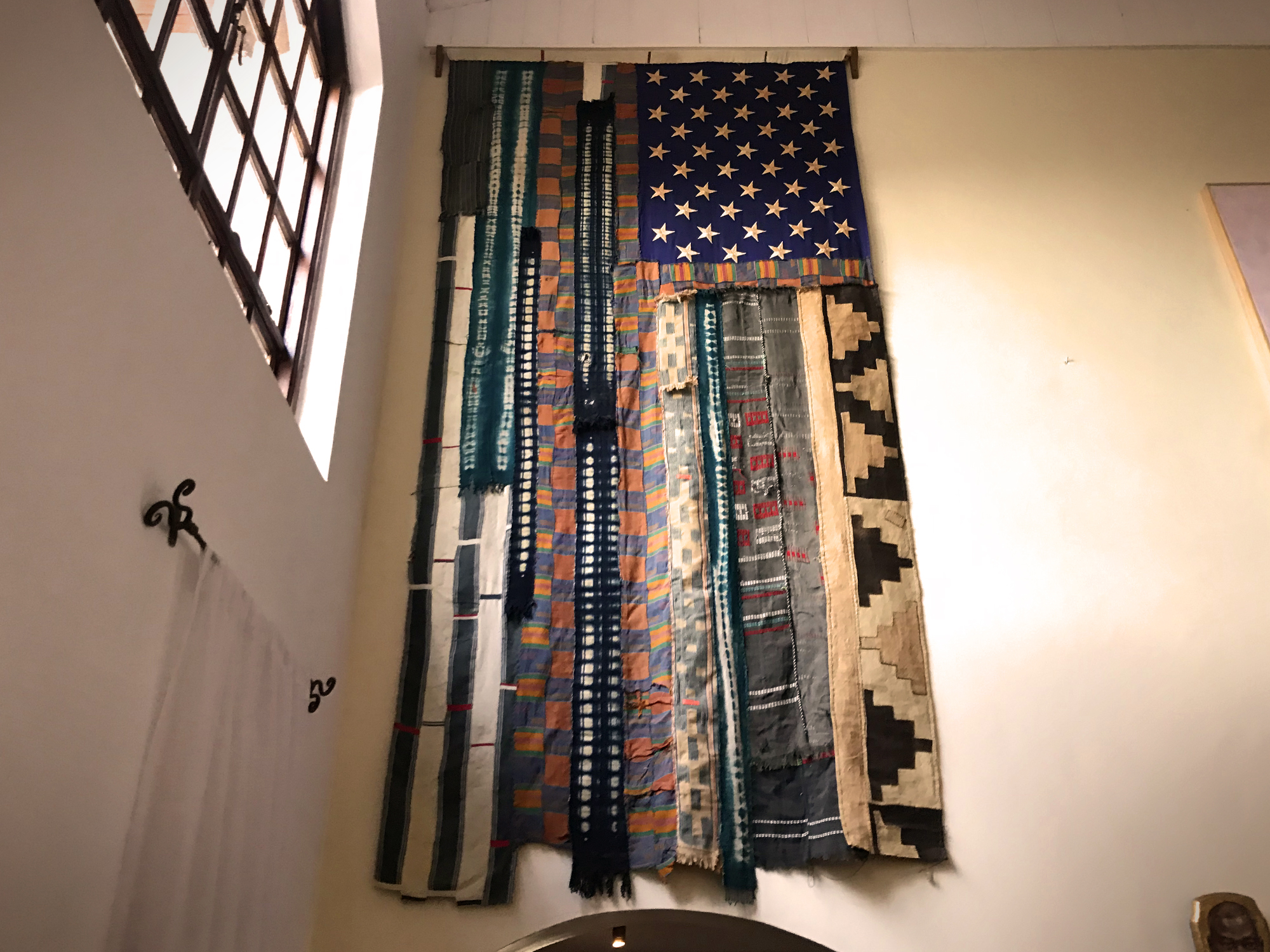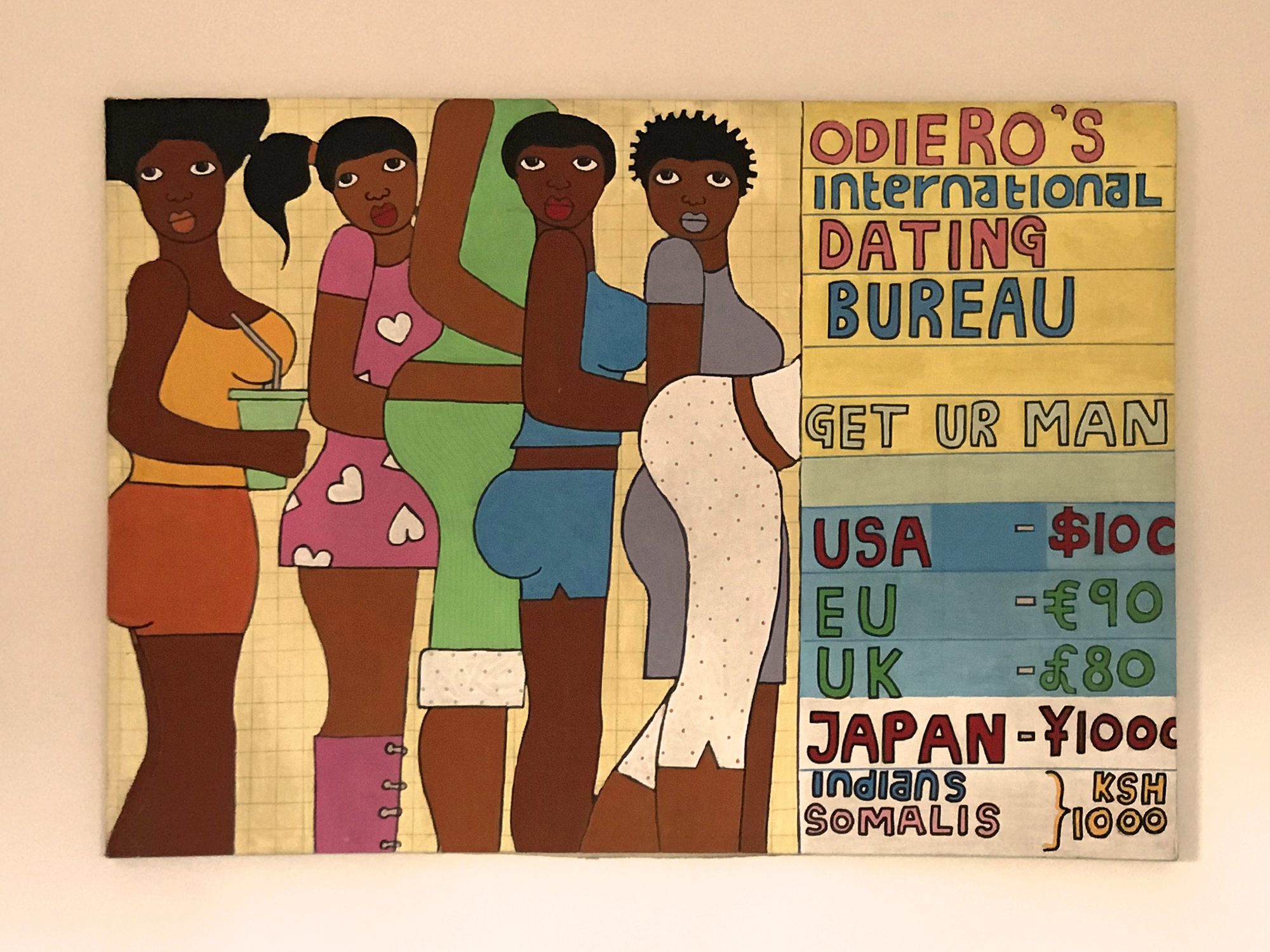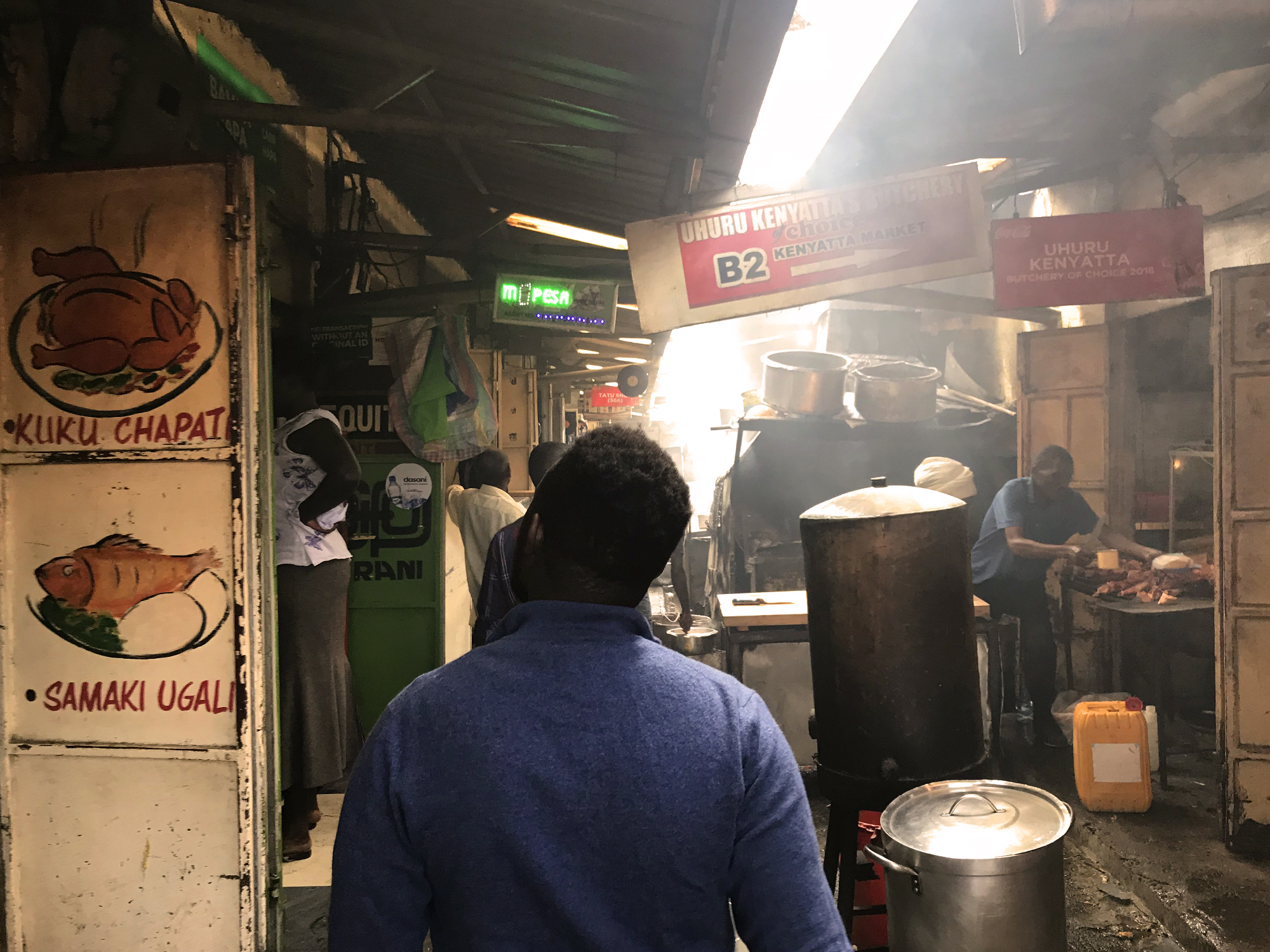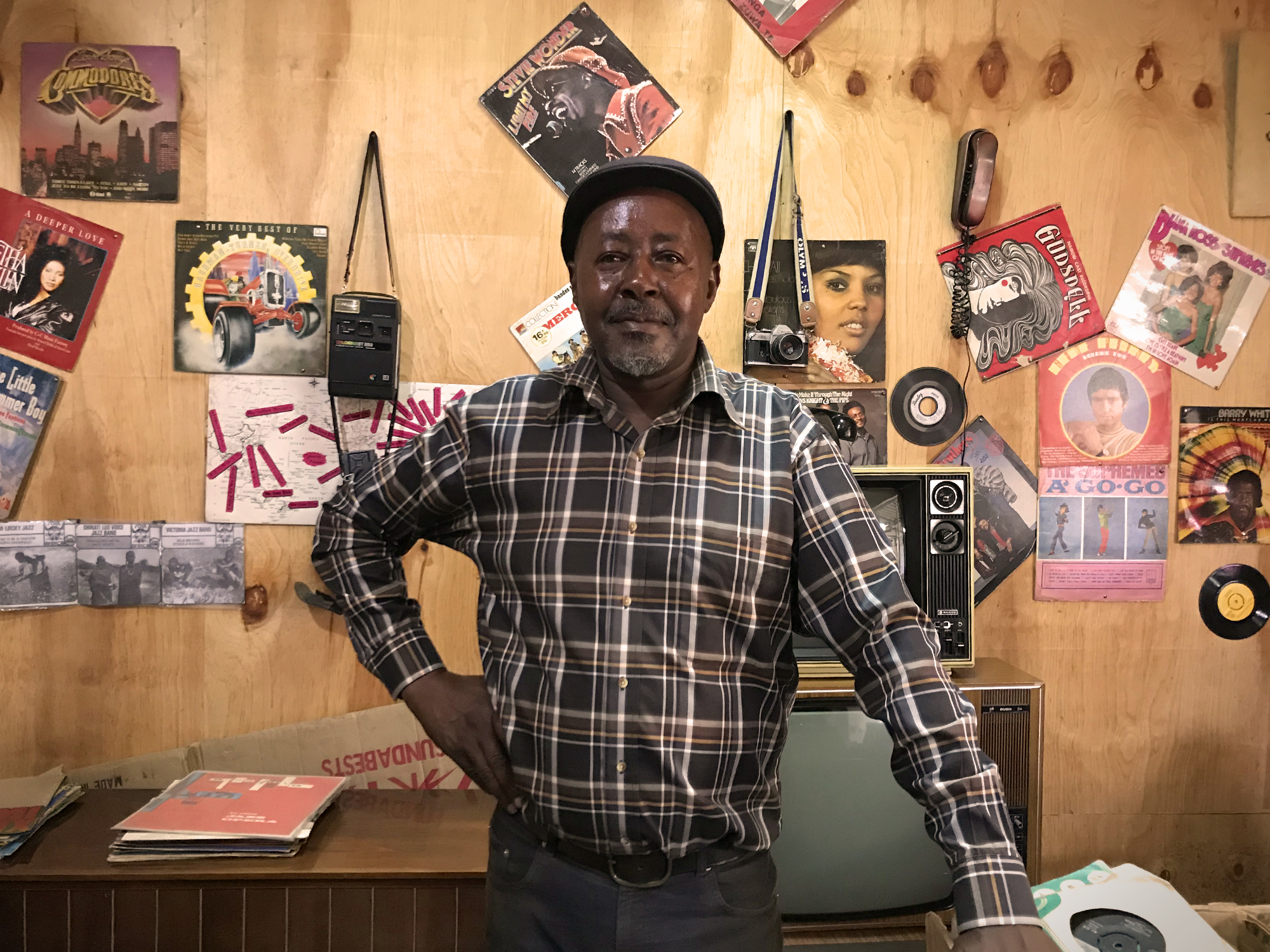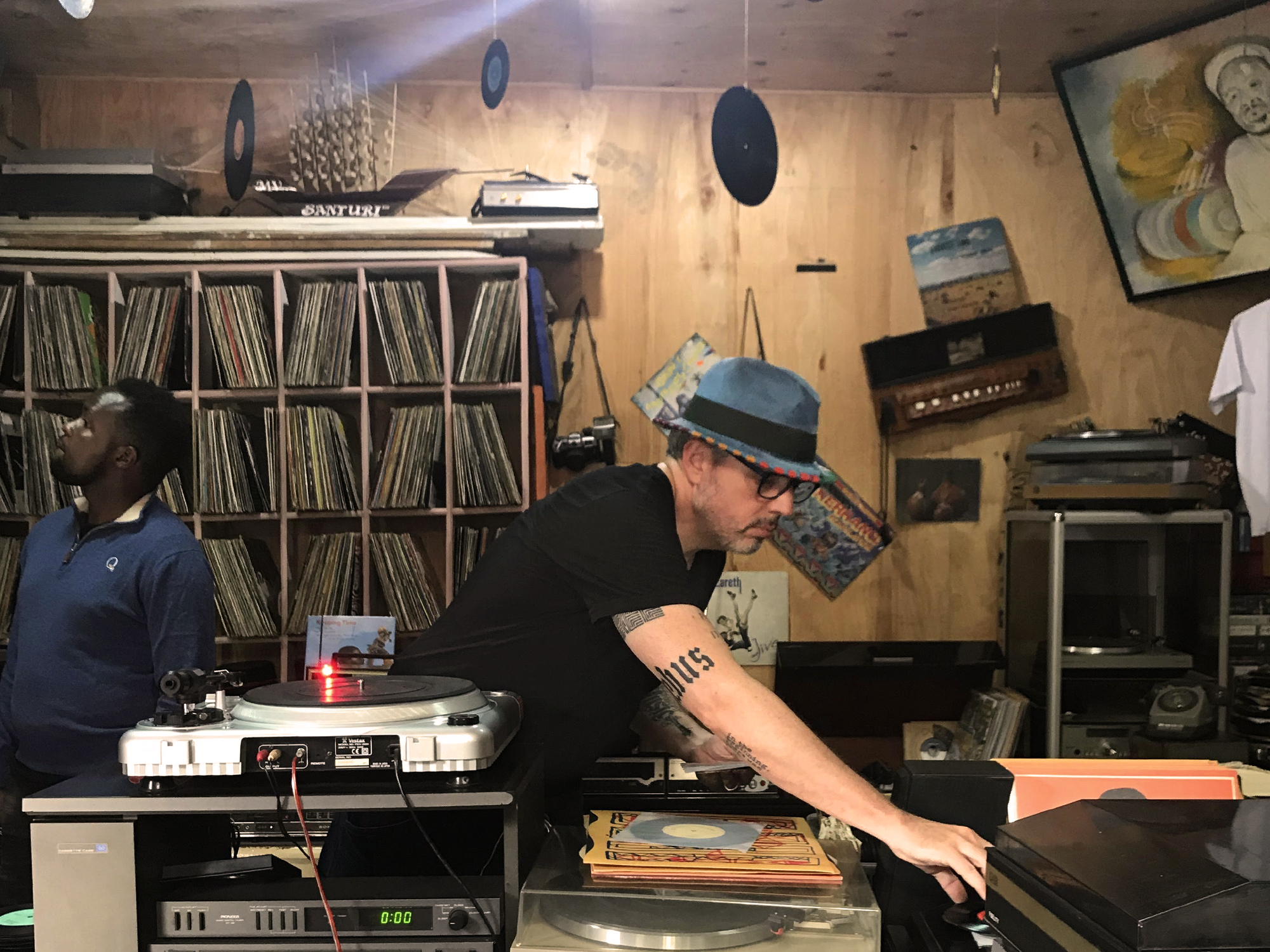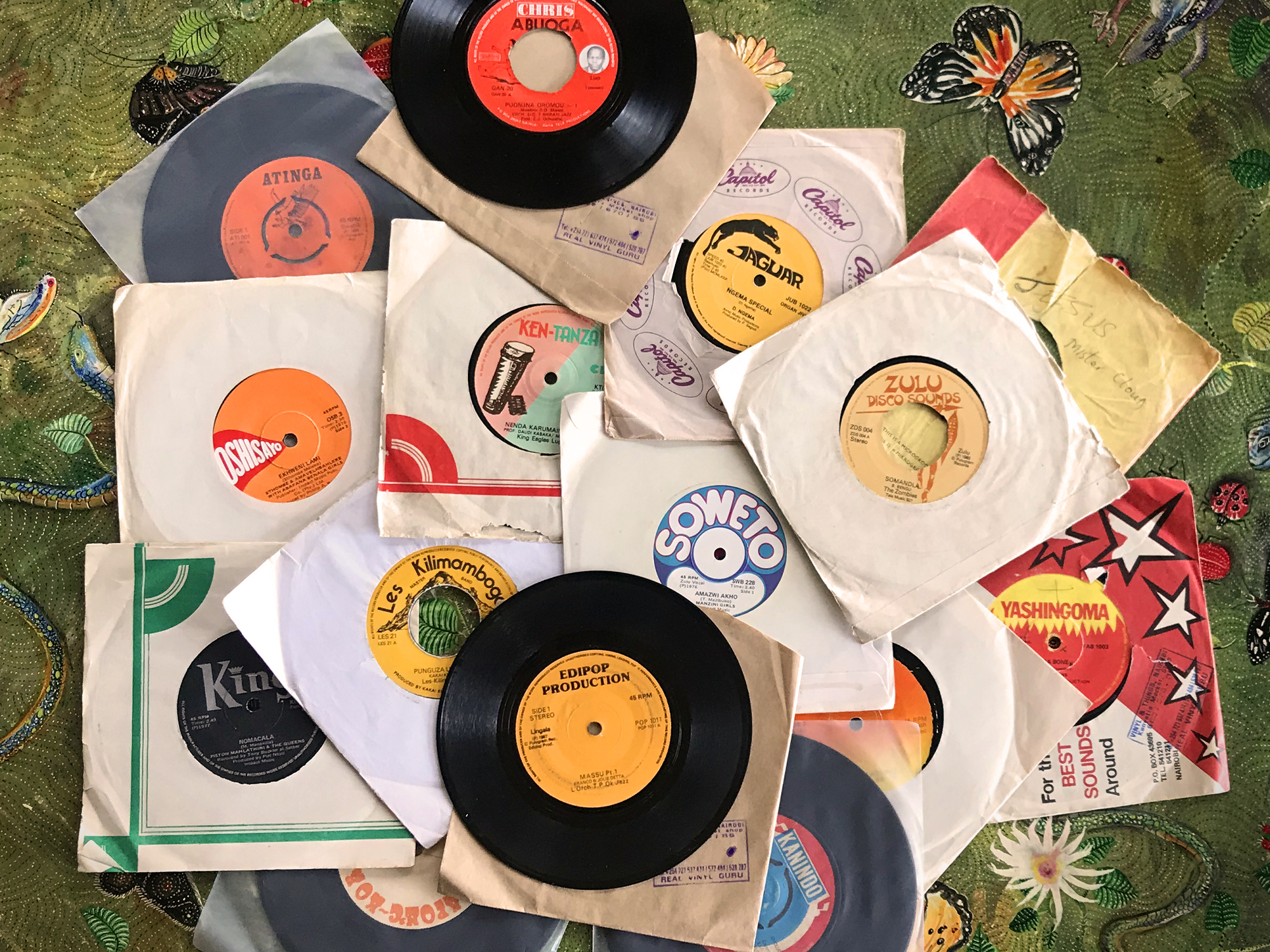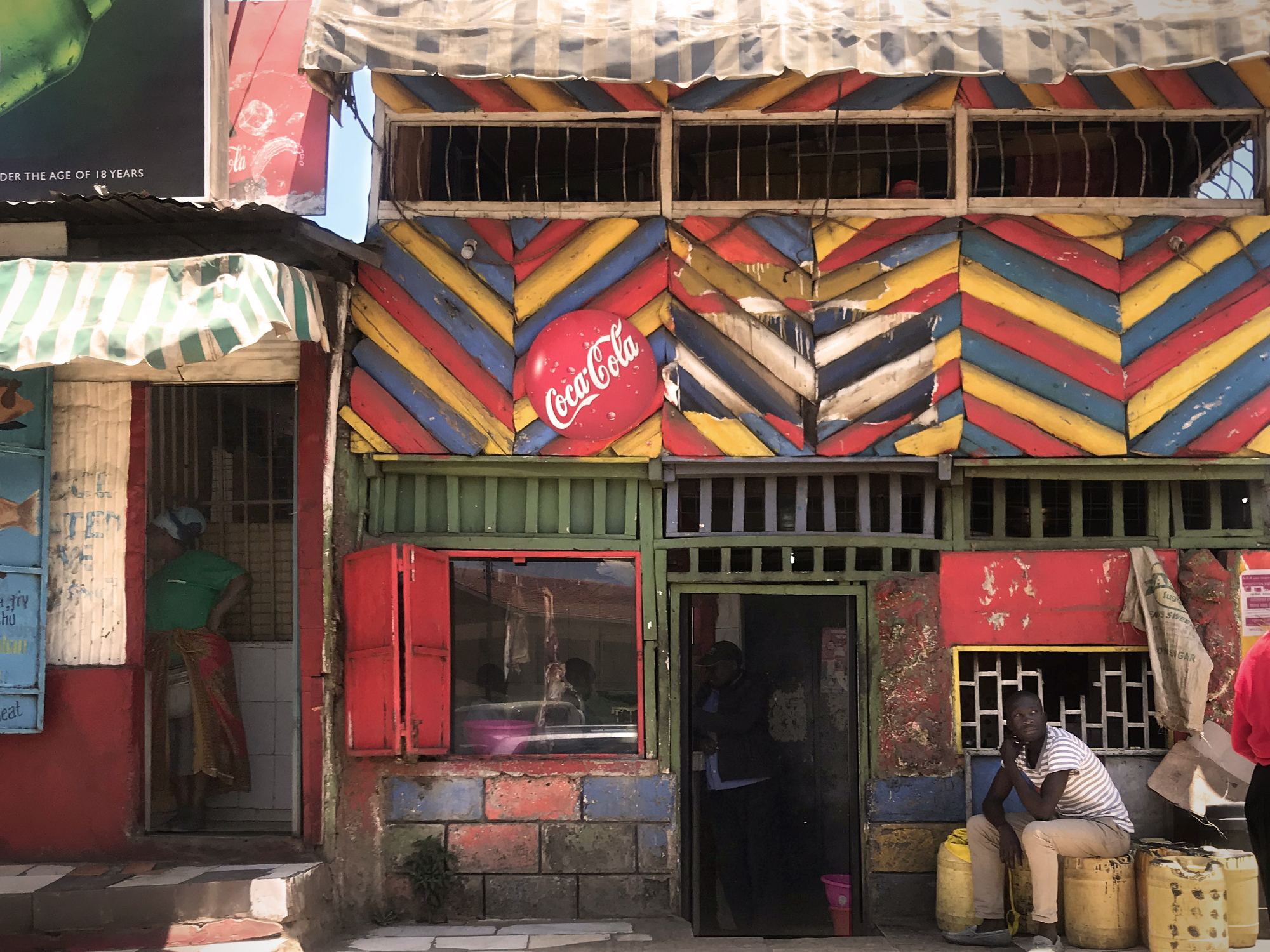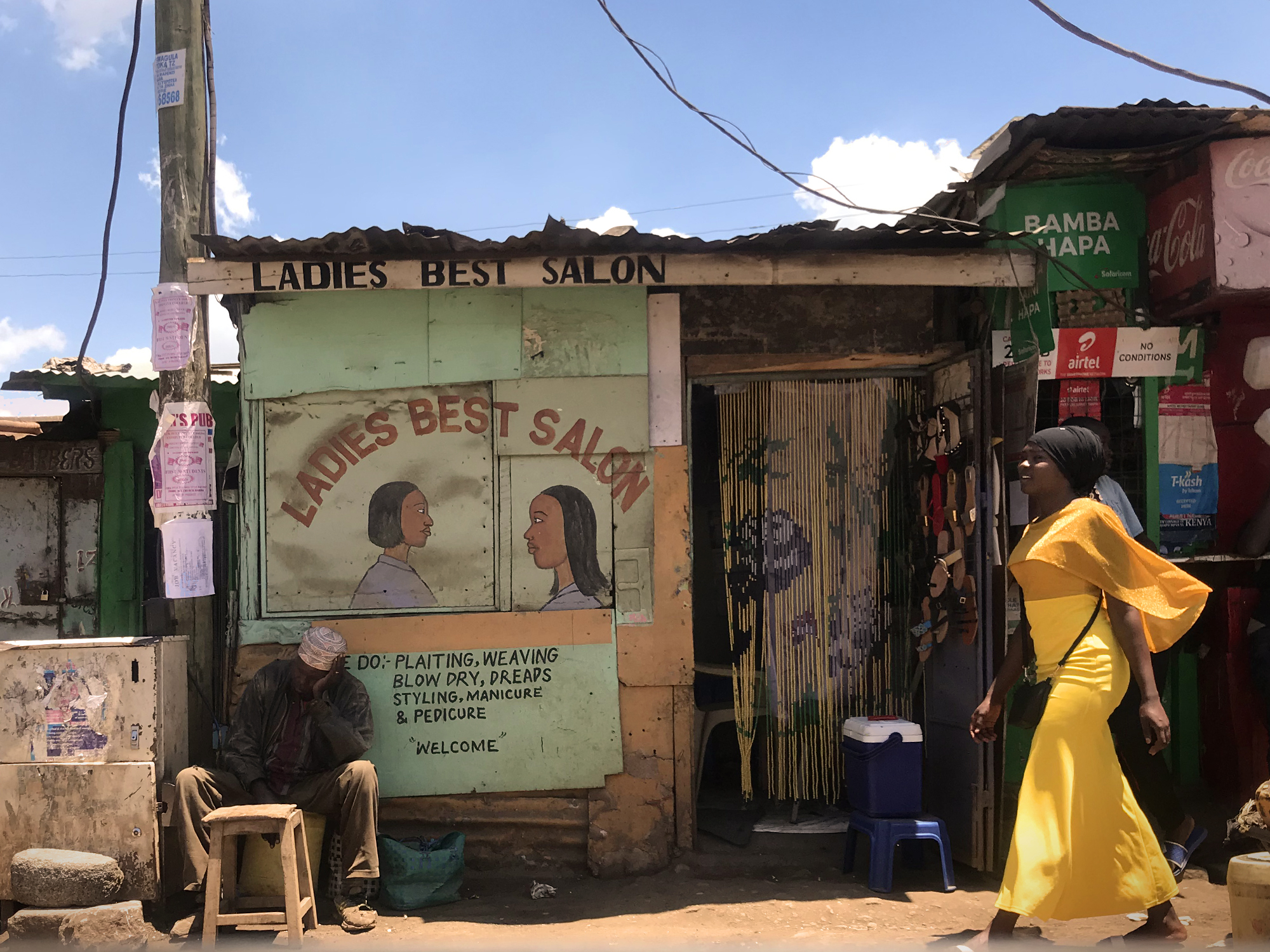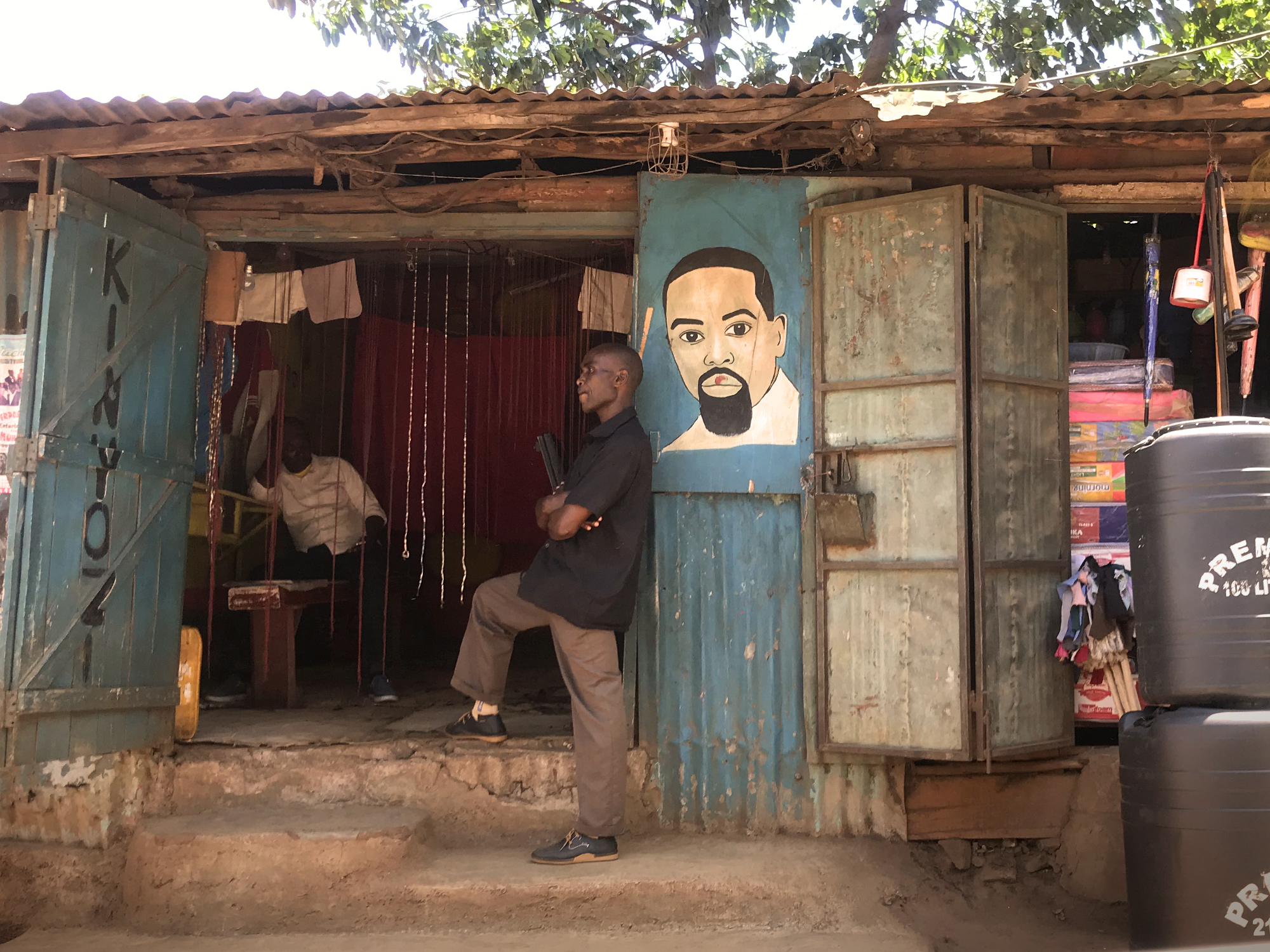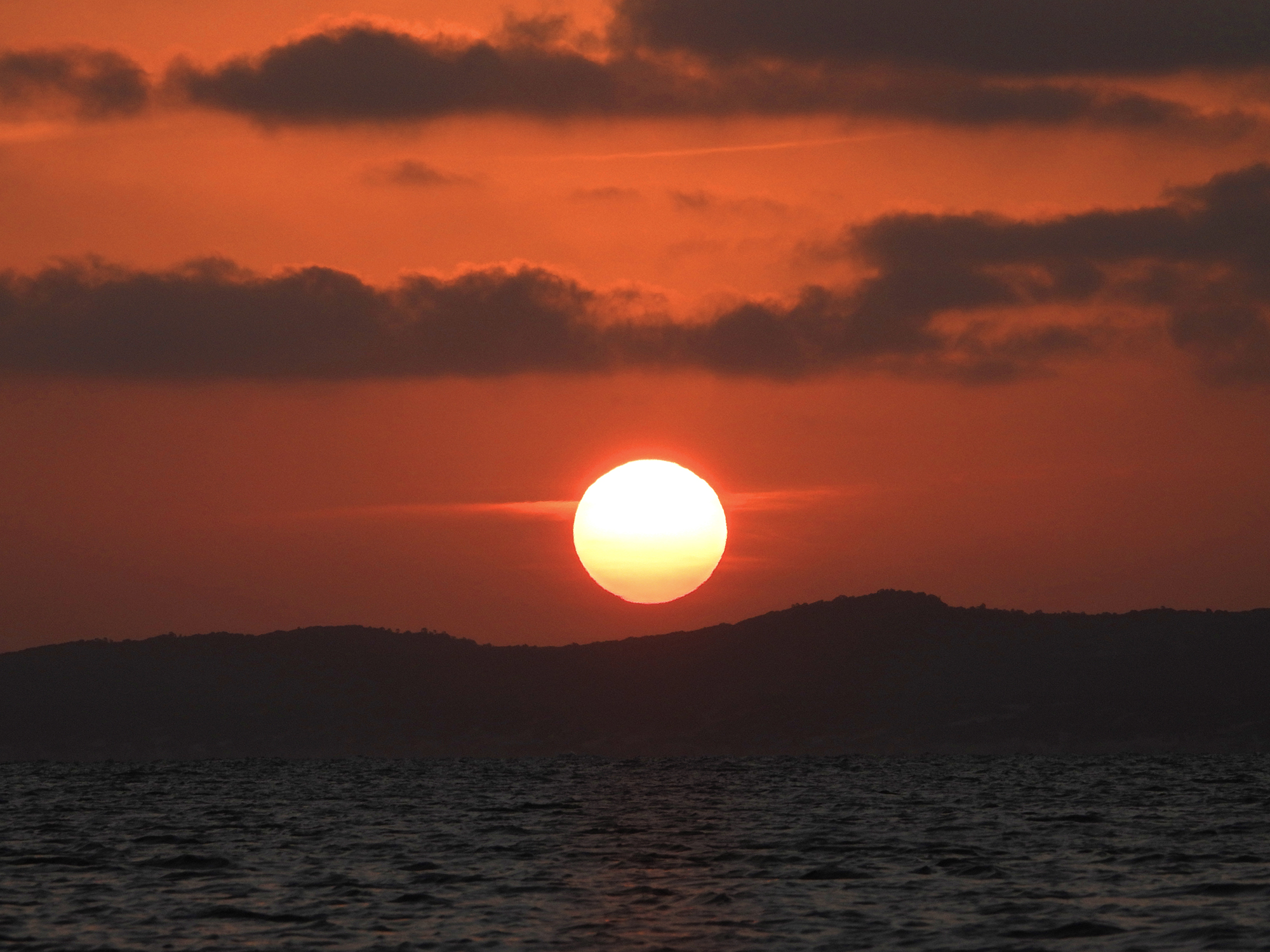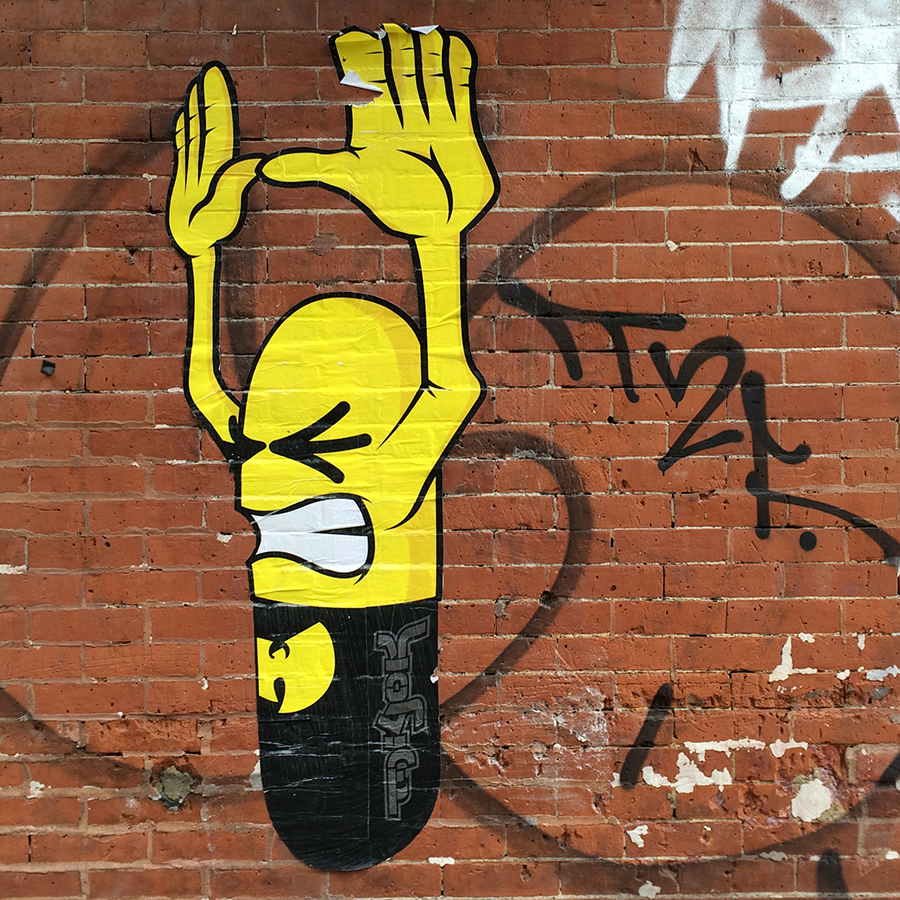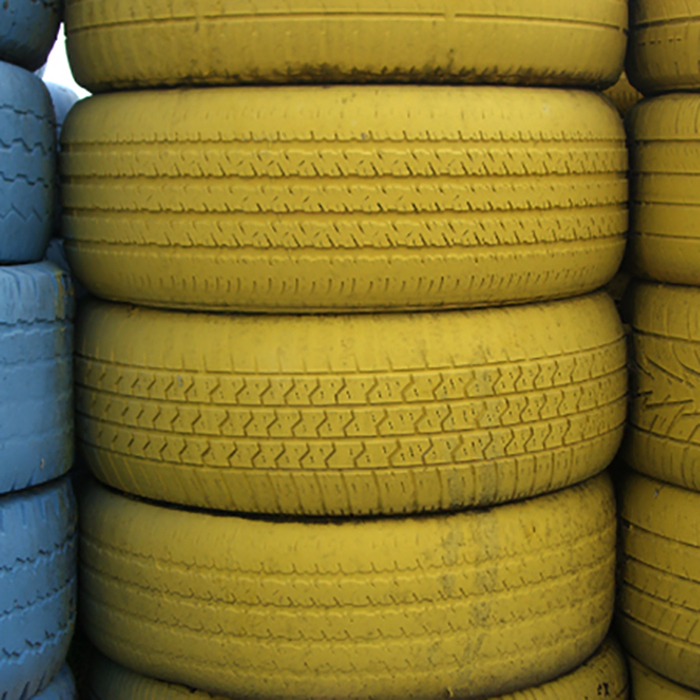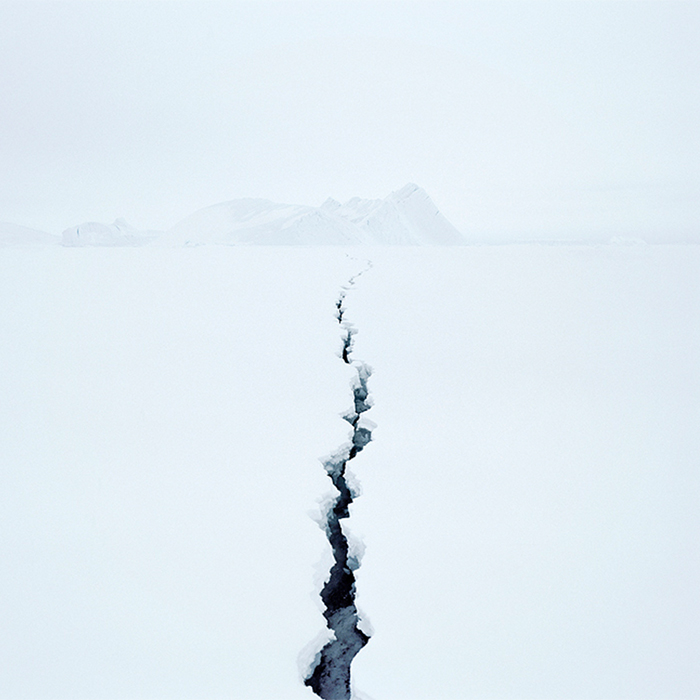KENYA & THE SWAHILI COAST
I had never anticipated a yoga retreat being the impetus to finally come to East Africa, but an opportunity presented itself in the Fall that had several factors that proved impossible to resist. 1st, Darren, a fellow yoga teacher Alison knows from training in London, was launching his first retreat in Watamu in mid-February. 2nd, this was to be a co-production with his partner, Kat, who grew up in Nairobi and knew the lay of the land. The itinerary included 5 days in a swanky treehouse on the beach, followed by 3 days on Safari in Tsavo. 3rd, I remembered I have friends in Nairobi that had always encouraged a visit. And finally, I saw this epic drone pic of the Watamu Treehouse and I was like “Well damn, how can we NOT?”
WATAMU
The Watamu Treehouse is a beautiful, winding, multi-pronged Hobbit-like structure that rises up out of the trees set back from the beach, in the protected “marine park” area just south of Watamu beach.
Just a few more steps and you would find me in next level chill mode.
The view from the terrace, facing northwest. The “Star Bed Suite” is an absurdly dope pad atop one of the Watamu Treehouse towers. I dare say it might be the nicest room we’ve ever stayed in. A few bendy walls and lots of open air, with a mosquito-netted bed and an outdoor shower from which you can catch both sunrise and sunset. Getting above the trees provides access to the lovely Indian Ocean breeze – which goes a long way in alleviating the formidable heat of the mid-day Kenyan sun.
The view from the bed facing northeast. The owner of the Watamu Treehouse is a cautiously friendly gentleman named Paul with family roots in Kenya and an accent that is hard to place. Turns out he was born in Alabama but grew up in Nairobi for much of his life. I’m told his family roots go way back in Kenya, and they’ve owned this prime beachfront property for generations. I mention his name because a travel writer friend of mine once gave me the best travel tip EVER: when researching accommodations, look for the reviews that mention the owner by name. This is a sure sign that they are engaged with the guests and made a positive impression on them.
The first is “Facing Mount Kenya”, national hero Jomo Kenyatta’s 1938 treatise on the Gikuyu tribe, the dominant ethnic group. I had trouble finding a physical copy so I went digital. You can find the entire PDF for free HERE.
The 2nd is “A Grain of Wheat” (1967) by Gikuyu novelist Ngũgĩ wa Thiong’o - one of Kenya’s most famous novels – about the struggles of a family during the State of Emergency period, as they prepare for Kenya’s independence day celebration, Uhuru day.
And the last is “It’s Our Turn to Eat: The Story of a Kenyan Whistle-Blower” by British journalist Michela Wrong, about John Githongo’s scandalous and very risky exposure of political corruption in 2003, AKA Kenya’s Watergate. This proved the most informative resource during this trip, delving into colonial, tribal, and political history.
In closing, I give this still life a rating of 3/10.
The beach here is about as pristine and clean as one could possibly imagine, minus little bits of seaweed. The sand is as white as snow and so fine it approaches a wet-clay-like consistency as you approach the water’s edge. The water is warm and clear. The sunrise over the Indian Ocean was so epic we barely missed one all week. Young men jog by every few minutes, stopping occasionally to do rigorous exercises I wasn’t too keen on replicating. Running does indeed seem to be a fundamental part of the culture here. Even the beach dogs seemed to be in training.
Local men trek through the shallows at low tide, looking for small octopuses (Not octupi. You’ve been living a lie!). These waters were heavily trafficked during the East African slave trade, already well-established by the sultanates of the Middle East before the Europeans arrived. The Eastern slave trade was hardest on African women, stolen for domestic work and sex slavery. There was less demand for plantation laborers, at least in the early days, so men found themselves kidnapped as sailors, pearl divers, and soldiers throughout the Arab world. After 1800, when the demands of the Transatlantic trade exceeded the West Coast supply, the number of Portuguese and French slave ships loading up in Zanzibar and rounding the cape heading west did increase, landing mostly in Brazil and Haiti.
One day I will write a screenplay about the hilarious perils of marrying a yoga teacher, such as finding yourself at 50 on a Kenyan beach at sunrise in a friendly yet subtly-competitive crab-crawl race in soft sand with a 30-something Pilates teacher. Needless to say, I was not victorious.
This farce happened in one of our first “Natural Movement” classes. Turns out, there is an entire discipline devoted to just doing stuff your body was already built to do. This was news to me. Kind of like that scene in Anchor Man, where they all marvel at the new 70s fad called “jogging”. I gather this Natural Movement things been blowing up as of late, partly because of people like Ido Portal, an Israeli who trains a lot of professional athletes, like fightin’ imp and OT great white hope, Connor McGreggor.
Our first class was a series of movements up and down the beach, basically doing all of the walks that an infant might do. I’m sure it looked absurd from afar, but it was surprisingly hard, and surprisingly fun. Darren Brown (pictured above, with Kat Miriam) is a personal trainer in London. He looks like a bit like a buff Lindsay Buckingham – or a really tall, low-BMI Jesus. Kat grew up in Kenya, and I think this whole retreat whole thing was her idea. She was the master of all logistics, as well as teaching Yin yoga classes in the evenings. Considering all the variables of running an operation like this, in a place like Kenya, she did a truly amazing job.
Watamu locals are primarily Bajuni people, though Kenyans from all over come here for work in the tourist trade. All Kenyans speak Swahili, as well as their own tribal tongue, and English too. Anyone working with tourists also speaks basic Italian, French, Spanish, a bits of a few others.
Swahili is a Bantu language that, over the centuries, has absorbed lots of words from Arabic (the Arab word for coast is “sawahili”) and even Portuguese. It’s the most common language in all of sub-Saharan Africa, but most use it as a second language (along with their own tribal tongue). When I was a kid, I think Daktari convinced me that Swahili was the only language in the entire continent. This notion was probably also aided by the American pan-African radicals and Free Jazz musicians of the 60s and 70s who freely integrated Swahili words into their vocabulary and their politics.
The retreat also offered day trips for those so inclined. Snorkeling. A float through a mangrove forest. Scuba diving. Etc. Each of these activities would include a magical appearance by members of the hotel staff, showing up in the middle of nowhere with a full lunch already prepared on the beach. Or snacks or cold drinks. On the left, Kat coaches Nadia on her boat roof handstand form. On the right, a school of dolphins we caught up with. This was awesome, but every time we got in the water they would bounce the fuck out. Those squeaky mofos are FAST.By some strange turn of events. this is my life.
We showered in the open air directly under this moon and somehow didn’t transform into our animal spirits.
You see lots of cool starfish in the shallows, as well as some eels and small octopuses. This pic on the left is for my man Kendrick, who swore I was going to return from Kenya “blackity black black”. Maybe he’s right. Alison and I usually put the beach leg of the trip at the end, but starting out in Watamu proved to be a really nice way to kick things off and make a clean mental break from the NYC grind. With Tsavo, Lamu & Nairobi still on the itinerary, my hopes of trekking the Rift Valley, hiking Kilimanjaro, and having a bouncy jumping battle with some Maasai warriors would have to wait for our next visit.
Alison and I did our first open water scuba dive in Watamu, which was challenging and frightening and nothing short of awesome. I had always wanted to get certified to scuba dive, but never really wanted to take such a bite out of a vacation to do it. In Kenya, I was made aware of PADI’s 2-day “Try Dive” thing – where you do one day in a pool, and then get to to do your first open water dive the day after, with an instructor. That sounded ideal. This dive shop in Watamu was supposedly highly reputable – training British Navy divers, or something, so we figured: Why not? Let’s go!
Breathing underwater is such a bizarre place to find yourself, and so many details to keep at the front of mind so that you don’t die. I felt my nerves begin to rattle a bit as we made our way out to the reef, but I countered this with a favorite quote I picked up working with National Geographic:
“A ship is safe in port, but that’s not what ships are for”
Words to live by.
This is a quick Joe Cool selfie whilst getting suited up in the dive shop. I’ll be using this for my headshot when Alison & I remake the B-movie classic, “Navy Seals”, storming terrorist compounds at night via the beach. Alison will play the role of Charlie Sheen. I’ll be Michael Biehn. Dennis Haysbert will reprise his role as Graham. McG will direct.
I was too focused on not dying to bring an underwater camera, so I stole this pic of the Watamu reef from google. We saw all sorts of freaky fish, in big schools or rolling solo. Giant clams. Moray eels. Some super-iridescent blue dude. We heard there was whale shark in the area, but he laid low. The highlight for me was a pair of cuttlefish, whom, if you’ve seen Blue Planet II, you know are basically aliens among us.
There are many tribes in Kenya, though a fairly small handful seem to dominate their respective regions. Kikuyu, Kalenjin, and Meru in the Rift Valley. The Luhya, Gusii, and Luo in the West. the Maasai, Akamba, and Taita in the South. Turkana, Borana, and Molo in the North. Locals near Malindi in the East come from many groups but share the Swahili language. Like any country, each group has pretty specific stereotypes, both disparaging and flattering, depending on who’s asking. All that said, I think this mask might be from The Congo LOL.
After 5 days at the treehouse, a caravan of classic Toyota vehicles arrived from Mombasa to take our entire group on the long drive from Watamu to Tsavo National Park for the Safari leg of this retreat.
When originally planning this trip, every Kenyan I spoke to warned me to not be too ambitious with our itinerary, because getting anywhere in the country takes almost a full day, no matter what. They weren’t lying. A 4-hour drive on paper can take 6 or 8 due to 2-lane roads, slow trucks, and constant games of chicken with oncoming vehicles. A 1-hour flight takes 5 due to delays and changed gates and somewhat relaxed airport staff. All that said, I really enjoyed the drive : )
I think I found the ancestral home of Sol LeWitt.
Many Maasai men are easy to spot due to their slim, tall stature, their signature broad smiles and long noses, and their red tartan shuka garments, (supposedly adopted from prudish Scottish missionaries eager to hide their nakedness, way back when). Many that live a more modern lifestyle are employed as night guards, because security is seen as an enduring skill set of the tribe. No guns are needed. Just a long, hard stick.
TSAVO
Tsavo National Park is E P I C. These are the kind of views you get as you roll around in these dope safari vehicles. People forget just how immense Africa is. World maps greatly distort things as they get closer to the poles, visually shortchanging those close to the equator. In truth you could fit the entirety of the United States, Central Europe, China and India inside Africa – and still have room to spare.
The Severin Safari Camp, which I came to call “Slitherin”, after seeing the crocodile bite scar on the ankle of one of the guards. There is no fence around the place, so any animal from the park can and will just waltz through the property at any time they please.
You’re forbidden to leave your cottage at night without a Maasai guard escort. There’s actually a little button outside of the tent, just for this purpose alone. When the reception desk tells you there was indeed a big ass crocodile on the grounds just last night while you slept, the Maasai’s reliance on mere sticks and some kind of ceremonial dagger for weaponry is equal parts comforting and unnerving. But as a friend on Facebook snarkily pointed out, they’ve been doing this for a few thousand years so…
Breakfast in the camp.
This was our first safari. There were basically three excursions offered each day, which you could go on or stay back at camp, as you wished. 630 AM. 11AM. 4PM. They lift the roof up, so that you can stand up and look for game as you rattle along the red dirt roads of Tsavo. Wind and dust in your face. Open country before you. This is incredibly FUN. Then somebody in the car shouts MONKEYS! Or GIRAFFES! Or LIONS! And the driver pulls over to let you watch them and take as many pics as you want. Then, either the animals saunter off, or you do.
Here a Dik. There a Dik. Everywhere a Dik Dik. These guys are about the size of house cat.
A Marshall Eagle taking in the sights.
This shot of an Oryx was flattened out a bit by a cloud of red dust from our vehicle, but I dig it anyway. They are one of my favorites in the park, simply because they look so badass. Some claim an Oryx with a broken horn is the likely origin of unicorn mythology, but i have my doubts.
This is a lilac-breasted roller, which are ubiquitous in the park. My family are big birders, and there are so many incredible birds in Tsavo that I feel like I need a return trip just to scratch the surface. You roar along at brain-rattling speeds in these clattering Safari vehicles, chasing down lions and elephants and rhinos. If I had our driver stop every time I saw a cool bird, we would have never gotten out of the camp driveway.
This hippo and his crew gave us two side-eyes from beneath the cooling waters of a nearby lagoon rimmed with papyrus and a few crocs.
There’s a huge section of the park that is a giant lava field that seem to stretch to the horizon.
Just look at this magnificent bastard! I had read that Tsavo felt a bit more wild and less saturated with tourists than the more popular parks. It certainly seemed that way. The number of animals that, minute to minute, just strolled right through the hotel grounds alone was thrilling. Monkeys. Baboons. African Buffaloes. Giraffes. Gazelles. Wildebeests. The list goes on.
According to one Kenyan folk tale, zebras were originally just plain old donkeys. Once men started capturing them for domestication, they panicked and sought council from a wise old hare. He pulled out a bucket of white paint and started adorning them, one by one, with thick white stripes. The rest of the donkeys, thrilled by this life-saving solution, were too eager to wait their turn, so they bum-rushed the hare. In the mayhem of the stampede, the paint bucket was spilled, cursing those impatient donkeys with a lifetime of servitude. Those who waited their turn remained the forefathers of the zebras in this very photo.
I tried in vain over and over to capture the stunning vistas of the Tsavo plains. The entire National Park is almost 9,000 square miles. The section we’re in alone is damn near as big as Connecticut, stretching to the horizon in every direction. A vast expanse that easily rivals the American Southwest in both majesty and astonishing scale.
This lion, tagged for monitoring with a collar, had reportedly just come from killing two Maasai cows. Tsavo is just part of the original Maasi land that stretches across the Tanzanian border and into the Serengeti. the Kenyan govt grants them free range to continue their nomadic lifestyle in their tribal territory, but with some limitations. The cows were eaten while the herders were fleeing park rangers, having willfully wandered into a protected area for their herd to graze. Cattle are the social and economic currency of the tribe, so it was understood by all that they would soon be demanding justice. Either they hunt and kill this lion themselves, to set right the natural balance of things, or the park rangers pay them $400/head for their losses. Some form of recompense would be made to squash any beef with the Maasai, because it’s quite clear that nobody wants that.
Tsavo is famous for its ‘red elephants’, that dust themselves in clouds of red-oxide soil. They proved to be very elusive, staying completely hidden most days, and turning their backs and retreating into the bush whenever we came upon them. This OG was estimated to be about 50. Unlike the others, he turned to face us for a moment and stood his ground. Keeping himself between us and his family. This felt like a clear “Ease back Brooklyn, before you get stomped out” gesture on his part.
I took these last 2 at the Elephant Sanctuary in Nairobi. Baby elephants rule. Baby rhinos, even more so.
In Jomo Kenyatta’s fascinating (yet incredibly dry) “Facing Mt. Kenya”, he tells of the Kikuyu prophecy of Mugo Wa Kiburu. Legend has it, Mugo woke from a dream to warn of a great famine, followed by the arrival of strangers that resembled white frogs, wearing clothes that looked like butterfly wings. They would come bearing magic sticks stronger than any poisoned arrow. They would bring a giant iron centipede, breathing fire and stretching from the great water in the East to the great water in the West. He said they must not fight these strangers, but welcome them with both caution and kindness, so as to learn their many secrets. Bad idea.
After Tsavo we bid farewell to the yoga crew and made our way to Malindi – to stay one night at a fancy resort then catch a plane up the coast to Lamu. You meet a lot of Wuzugu aka white Kenyans on the coast. Chilling on holiday, lounging in prime beachfront summer homes, and running the hotels, dive shops, and fancier restaurants. While a lifetime of liberal leanings has created a permanent Pavlovian side-eye response in me to those so easily associated with colonialism, I had to check my own biases. In truth, they’re no different us. Long settled in a land taken by force under the blood-soaked banner of manifest destiny. And I can’t help but notice that most white Kenyans I’ve met speak basic Swahili, whereas, last I checked, not too many New Yorkers are kicking rhymes in Iroquois. I recognize how over-simplified and general this analogy is, but it was lingering in my mind the whole first week.
The plane to Lamu. No jetway. No assigned seats. Just get on, and buckle up.
LAMU
After 8 days of a group yoga retreat, we were ready for some “us time” aka the third leg of this trip: a 5-day hideaway in Lamu, a laid back Muslim fishing village with no cars on a tiny island approaching the Somalian border. Prior to our arrival, every Kenyan we spoke with had swooned about the place. Every guide book said there was nothing like it on earth. As we approached the island by water taxi from the puddle-jumper airport, I was starting to believe them.
It’s easy to get lost here, but it’s also wonderful to get lost here with Alison Chan-Bevan.
Lamu Town Square (left – *not my pic), and a gander at a typical mixed crowd of locals (right).
Founded in 1370, Lamu is Kenya’s oldest living city and the cradle of Swahili civilization – the last man standing of a string or fabled settlements that once dotted the East African coastline from Somalia to Mozambique. Over the centuries it’s been under the rule of the Swahili, The Omani Protectorate, The Portuguese, The Sultan of Zanzibar, the Germans, and the British. This gumbo of cultures, slowly seasoned over the centuries, is written all over the faces that pass you in the narrow souk-like labyrinth of Lamu Town. Bantu. Arab. Persian. Indian. Portuguese. Even faint traces of Chinese. A few cats too. Oh, and donkeys. Lots and lots of donkeys. Donkeys who poop freely and with great frequency.
Alison found an incredible place on Air BnB for our Lamu stay that we’ve come to call “the find of finds.” It’s a private cottage that sits on a shady hill above a rather baller villa (pictured here) – owned by an American film producer who apparently gave us cinema favorites of mine like American Psycho and The Virgin Suicides, among others.
After you pass the main house, a concrete stair leads you up a steep incline, then stops abruptly at the top, where you step off the path into the grass, making your way across a shady stretch of sand to find the guest house cottage.
The bed was so absurdly big I practically had to text Alison from my side rather than make my way across. All for the price of a slightly upscale Red Roof Inn.
Meals were served outdoors on a picnic table under a straw hut that overlooks the bay. We were granted access to the villa’s private chef – a sweet Kenyan who looked a little like Louie Armstrong and made incredibly delicious meals for about $20 all in. He’d stop by at breakfast and ask us what type of seafood we’d like for dinner. Then he’d pick up his phone and call his favorite fisherman, who’d let him know if he expects a fresh catch or not. The food in Lamu was the best we had in the whole country, a clear result of the intersection of so many cultures and cuisines. A savory blend of Kenyan, Indian & Arab flavors. Spicy and insanely good.
Despite her recent Oscar win, GaGa seems to need our thoughts and prayers more than ever.
The more I read about the history of Kenya, the more I understand how the British “divide and conquer” strategy systematized tribal segregation and created much deeper divisions. Before colonialism, the same tribes that fought brief wars over cattle or women would still trade freely with one another in more peaceful times. The Brits squashed all of that cultural cross pollination, sectioning off the country into 24 different tribal reservations, and forbidding travel outside of your tribe’s area without British-issued ID. The workplace was further segregated, pitting each group against the rest in a rigid economic hierarchy that designated which tribe was suited for which occupation – all subservient to white interests. Kambas as porters & drivers. Kikuyu, field workers. Luo, domestic servants. Etc. When this system was finally dismantled in the 60s, decades of this “us against them” mentality forced upon the “wananchi”, Kenya’s people, proved difficult to overcome. Your lot in life was handicapped at birth by the limits placed on your lineage, predetermined by which tribe was in power, and at what level beneath them your tribe landed on the totem pole as a result. This is not to say that none overcame this adversity. Many did, and many still do, but the uphill battle remains in place, leveling out at a glacial pace.
I really wanted to take a picture of the two bros playing checkers with soda bottle caps, but my manners, mixed with my desire not to engage dock hustlers in any amount of conversation, swayed me from doing so. The Lamu docks are full of hustlers. Men of all ages looking to arrange anything and everything for a tourist, as they struggle to scrape out a living in a place with little opportunity. Boat rides. Fishing. Sunset cruises. And basic ferry services to the airport or Shela Beach or Manda Island.
Hustlers in Lamu Town proper will whisper in your ear about getting you wine or beer or weed or even heroin. Being majority Muslim, alcohol is scarce in Lamu – only available in two select places on the entire island. This is one such place: the Peponi Bar & Hotel. Being a world class drunk, we ended up here just about every night, as did everybody else. This particular night some weird French brass band set up on the beach and a party ensued. This same night I taught one of Lamu’s few bartenders how to make a proper Manhattan. Truth be told, this was my biggest achievement in weeks. If you find yourself spending the day reading Kenyan history and imbibing on the breezy patio of The Peponi Guest House in Shela Beach, ask for a dark skinned brother named Alexander.
Local sailors in the Red Sea and the Indian Ocean tend to favor these triangular-mast “dhow” vessels for moving goods back and forth. Dhows first came into use in India before the time of Christ. Lamu dhows follow an Omani design, and are made from Acacia trees. They leaning mast makes them look almost broken in half, but they move quite smoothly across the surface of the bay.
This is Janet and Janet sews all day in a tiny one room shop named “Janet’s Collection”. Janet can make you just about anything from the colorful fabric that adorns her walls – both East African kikoi and West African dashiki. The kikoi is essentially the sarong of Africa’s east coast, worn by both men and women as a skirt or head wrap or shawl or baby-sling or beach towel or just about anything else you can think of.
I missed overlapping with an old friend who lives in Moscow by just 5 days. Interesting dude. Works for CNN. Was previously stationed in both Iraq and Pakistan. Has lots of stories. He did, however, give me a parting tip to eat at this easy-to-miss restaurant favored by locals, that served little else but an amazing fish curry with chipati and mchicha, a sort of creamed spinach a lot like Indian chana shaag. Simple and fucking delicious.
To love Lamu is to love its antique wooden doors – ornately carved artifacts from its storied past. In the Arabian peninsula where wood was a scarce and valuable commodity, wooden doors were a sign of wealth and power. Traders and invaders brought the practice to the Swahili Coast, where several styles went in and out of favor over time. Bajuni doors were a fusion of Bantu, Arab and Persian motifs. Siyu doors contained abstract faces and floral patterns from India. Gujarat doors mixed Indian and Zanzibar styles. By the mid 1800s, Lamu had developed its own flavor, leaning heavily on the floral patterns and removing some of the sectioning details within the panels. As you walk through Lamu Town with a guide, he will call out with great pride the style of every door you pass.
The first floor of the tiny Lamu Museum is almost entirely devoted to door carvings, and there’s a large portrait of Mohamed Abubaker Kijumwa, who founded the wood carving industry here in the 1800s. He had five sons, all of whom opened their own wood shops in different parts of town. Their family name still dominates the trade to this day, so each wood shop we stepped into was being manned by a direct descendant of Kijumwa, seen here slowly carving out another flourish in another door in the tradition of his forefathers.
Finally got out on the Indian Ocean on a real Lamu dhow. The mast was made of 4 different posts tied together with ropes, tapered like shims to fit together. It was a 2-man crew, and changing direction was a dramatic moment – where the man in the bow grabbed the bottom of the sail and leapt on to the lowest part of the deck, pulling it as low as it goes with all of his weight, while the man in the stern quickly wrapped the rope around the posts on the opposite side. Despite earning my shellback by crossing the equator by sea in The Galapagos, one look at my soft hands and we would all agree I’m no sailor, so I simply stayed out of the way.
Not sure what the name of this team of superheroes is, but I bet they each have really kickass powers.
This was taken right around the moment that the local yoga teacher we’ve been digging casually invited Alison and I back for The Lamu Yoga Festival in March 2020. Say word.
We had a mix up with our Air BnB dates at our Lamu hilltop guest house, so we relocated to a different spot for our last night. If nothing else, I have learned this: Give Alison good WiFi and a solid hour of peace and quiet, and she will find us yet another breathtaking place to lay our heads.
Rolling in a Lamu Uber – business class, no less.
NAIROBI
After another long, sweaty day of traveling in Kenya, we landed in Nairobi to find ourselves whisked off to a Sunday afternoon garden party in Langata with lots of wine and some old Brooklyn expat friends and a bunch of cute kids and some brand new peeps. It was incredibly comforting to be in a real home after several weeks of nothing but the tourist world.
The gang hanging out there was an eclectic mix of contemporary artists and fashion designers and cosmetic execs and filmmakers and even an underwater welder. Some are Kenyan born. Others from Nigeria. A Frenchman. A Chi-town transplant. A Napolitano. A woman who imports Thai and South Korean clothes to Nairobi. It was truly fascinating to get a glimpse into the different attitudes and social mores that vary wildly between West, East, and South Africa. In America it’s so easy to fall into the habit of I know nothing, so I just listened intently, trying to mentally record everything I could. I also found myself wondering why we don’t live abroad like these fabulous peeps. Hmm.
A long, overgrown pergola defines the entire rear of our Nairobi digs, Casa Ya Ndoto, half-shading giant potted plants and vines that draw you out into the backyard. The surrounding gardens are alive with more species of tree, flower and bush than I could ever hope to name. Pale-yellow/brown acacia trees ring much of the property, providing shade and lots of thorns for Brooklyn bare feet. Rope swings and trampolines and misplaced toys are clear signs that the children make great use of all this open space. Tusked warthogs with curly whiskers visit us at breakfast, jogging through the backyard, foraging for snacks and pausing to stare us down for a minute or two. There hasn’t been much rain as of yet this year, so the grass is brown, dry, and crackles under your feet.
Casa Ya Ndoto has a wonderful indoor-outdoor living room space that only a climate like this can sustain. Though we are only about 1 degree south of the equator, the 5800 ft elevation gives the city a distinct and rather agreeable climate. Crisp and cool in the morning. Sunny and lingering In the low 80s during the day. Dipping down to the 60s at night. So you can eat all meals outdoors and get a good fireplace going at night. Wrap a kikoi over your shoulders for good measure. Ceiling fans provide all the air conditioning you need for most of the year.
There is a large National Park directly adjacent to Nairobi. It’s like a big, dusty Central Park. But instead of 1.3 square miles, it’s 45 square miles. And instead of roller skaters and sunbathers and joggers it’s filled with rhinos and elephants and man-eating lions. “Well then,” you might say “surely they have a Jurassic Park-style 40ft fence that keeps these death-on-four-paws creatures from wandering into my backyard BBQ.” Alas, no. There is a very basic, wire fence at the shoulder of the highway that runs along its perimeter, and animals of all shapes and sizes wander into the suburbs often. Our hosts constructed their own electric fence to keep the driveway relatively lion-free. They turn it on at night, and close the tunnel they dug for the warthogs to come and go during the daytime.
There was so much amazing art on the walls at this joint, I really don’t know where to begin. One of the owners is a very successful contemporary artist who I know from Brooklyn, so she has a really amazing collection. While we were there she was busy most days packing up a few sculpture pieces for the Whitney Biennale. This flag piece, by Nigerian-born NY-dweller DaaPo Reo is my personal fave.
We started our last day in Nairobi at The Kenyatta Market, on the outskirts of Kibera, One of Africa’s most notorious hoods. I got a few “you sure you’re in the right place?” looks from a few people, but that’s a look I’ve long been accustomed to. We were on a mission. Somewhere, down one of these corridors, there was vinyl to discover.
We found him! This is Jimmy Rugami, owner and proprietor of the legendary Jimmy’s Record Shop aka The Real Vinyl Guru. Jimmy has been collecting and selling wax here since the late 80s. He has two stalls for Western music and one stall for strictly African. As I expected, I was warned by a fellow crate digger there would be little chance of finding any OG Afrobeat or High Life. Records collectors, mostly from Japan and Europe, have stripped the entire continent of most of the vinyl from the 70s and 80s. But no matter, this dude’s 45 collection of other African styles was overflowing. Our driver looked at the pile of 7”s like they were from outer space, asking me “This is only one song?” I don’t think he had ever seen a vinyl record of any size before.
Before coming to Kenya I downloaded about 30 Benga albums from the 60s and 70s, so my search started there. Then I asked Jimmy to pull out anything he thought was good, and he started feeding me Soukous from The Congo, Pre-Makossa sounds from Cameroon and Funk/Jazz hybrids from Mozambique and elsewhere. Despite many of the 45s being in pretty rough condition, they still sounded wonderful. He said he had seen many of these bands in their prime, as Nairobi was one of the primary destinations in East Africa for recording. Alison found a cool book he was selling on 60s South African Jazz, so he started pulling those too, and that yielded a couple of really cool finds. I could have spent a month here getting schooled by this man Jimmy, but we had a plane to catch. Now back in Brooklyn, A slew of new mixes have entered the planning stage.
Driving through Kibera slums. Nairobi came into prominence in the British colonial era, during construction of the Ugandan Railway. It was the last place the train crews made camp before tackling the Westward incline up the Rift Plateau escarpment.
It’s the 10th largest city in Africa, with a population of about 3.5 million. It’s busy and bustling and you try to get any all errands done before the traffic starts slowing to a crawl around 3pm. Or you put on your brightest most fabulous yellow dress and you get to steppin.
After I posted the funky barber ship sign from Lamu, my man Kelly, who has a barber shop in LA, reached out, begging for me to bring him back one. We drove through Kibera looking for one, but no luck. All the coolest signs were painted on iron doors, and I wasn’t trying to get into explaining why I wanted to buy the front door off his shack. The nickname Nairobbery may be well-earned, but thankfully I still have my hyper-alert, 3-block-deep, where’s-the-stickup-kids stare from 1980s Brooklyn, so we escaped un-taxed. Hiring a private driver who knew the city and could keep my dumb ass out of danger likely also helped.
That’s a wrap! Kwaheri Kenya! We love you! Alison and I were sad to leave, but Brooklyn called. Thanks so much to Mario, Kat, Darren and all of our Rewilding peeps that made this an incredible, unforgettable trip. Somebody keep some Tusker on ice for our return!

